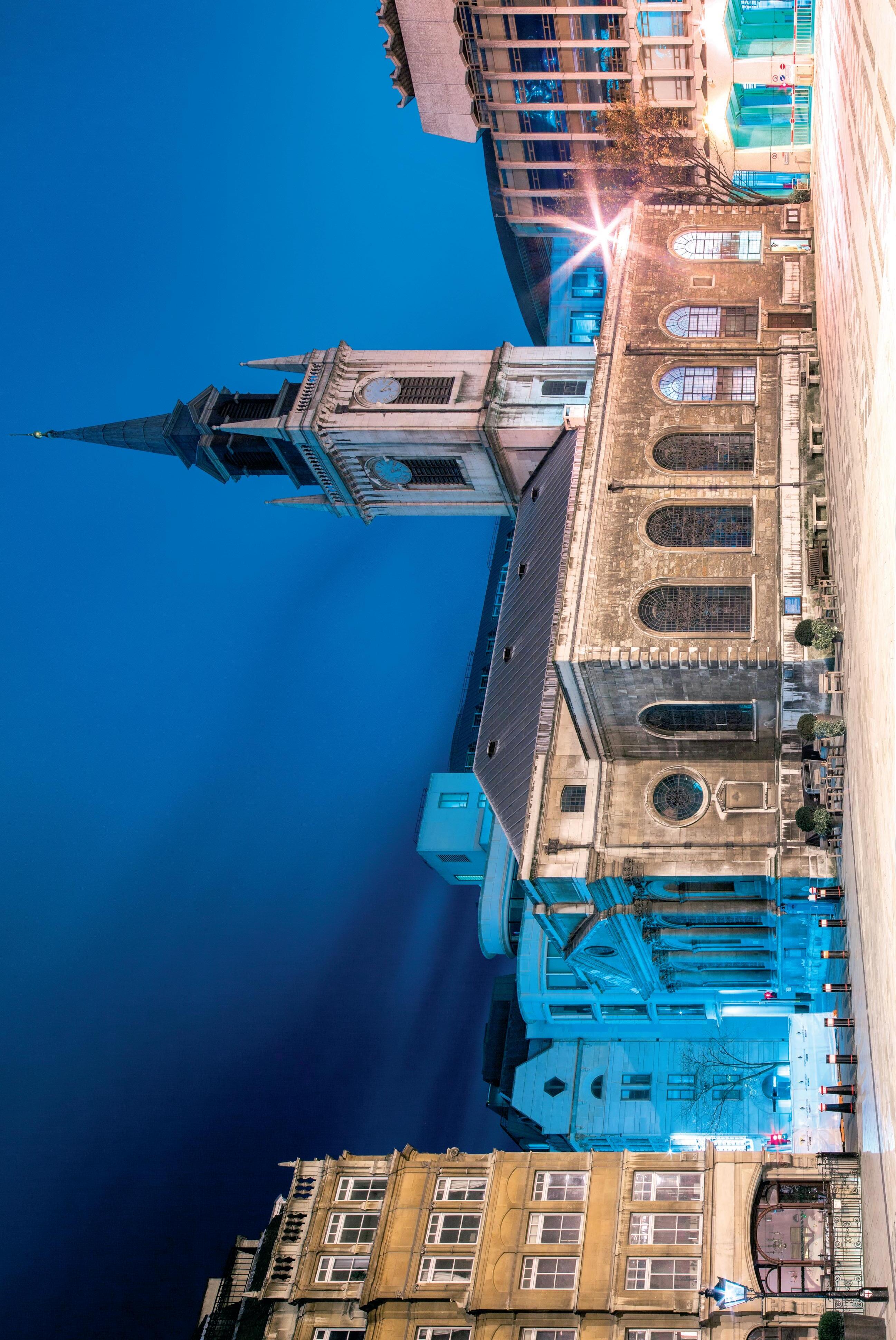CM























CATHEDRAL MUSIC is published twice a year, in May and November
ISSN 1363-6960 MAY 2014
Editor
Mrs Sooty Asquith, 8 Colinette Road, London SW15 6QQ sooty.asquith@btinternet.com
Editorial Advisers
David Flood & Matthew Owens
Production Manager
Graham Hermon grahamhermon@lineone.net
FCM email info@fcm.org.uk
Website www.fcm.org.uk
The views expressed in articles are those of the contributor and do not necessarily represent any official policy of Friends of Cathedral Music. Likewise, advertisements are printed in good faith. Their inclusion does not imply endorsement by FCM.
All communications regarding advertising should be addressed to:
DT Design, 1 St Wilfrids Road, Ripon HG4 2AF 01765 605864
07828 851458
d.trewhitt@sky.com
All communications regarding membership should be addressed to:
FCM Membership, 27 Old Gloucester Street, London WC1N 3AX
Tel: 0845 644 3721
International: (+44) 1727-856087 info@fcm.org.uk
Every effort has been made to determine copyright on illustrations used. We apologise for any mistakes we may have made. The Editor would be glad to correct any omissions.
Designed and produced by:
DT Design, 1 St Wilfrids Road, Ripon HG4 2AF 01765 605864
07828 851458
d.trewhitt@sky.com
Cover photographs
Front Cover
Beverley Minster nave
© Craig Wilkinson
Back Cover
St Lawrence Jewry by Jon Reid © travelphoto.co
52
56
58
We were delighted to be commissioned to provide a custom built instrument for the new concert hall at the Guildhall School. This is part of the exciting multi million pound development of extensive new facilities for the school situated in Silk Street near the Barbican.
“The Regent Classic organ at Milton Court is ������������������������������������������� uncompromising quality to our wonderful new concert hall. Only recently it played a starring role in a poignant and moving performance of the Fauré Requiem. The Guildhall School is delighted with the organ not only to enhance its own student performances but also to offer a ������������������������������������������������ ���������������������������������������������� to Milton Court.”
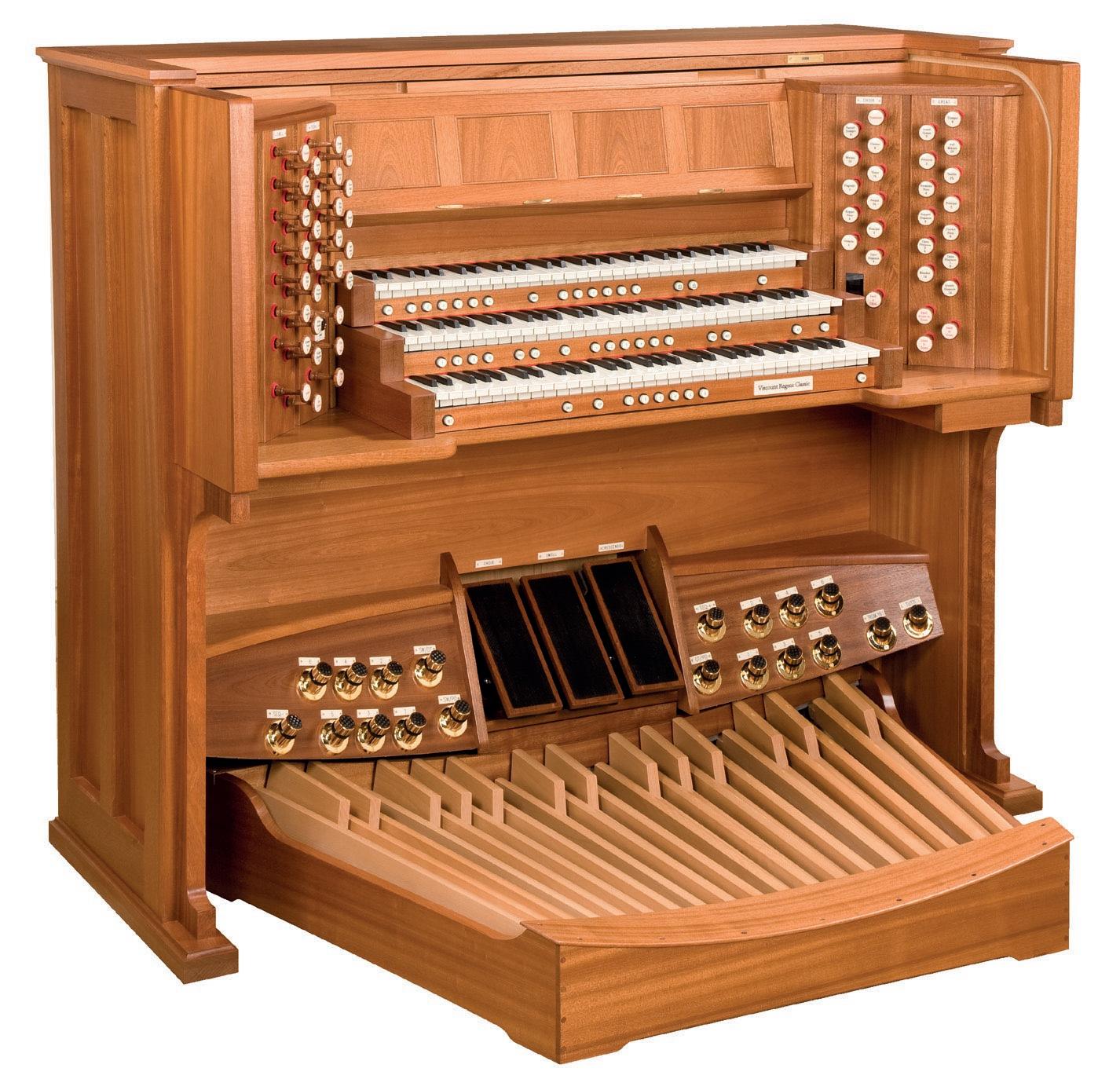 Jonathan Vaughan, Director of Music, Guildhall School of Music & Drama
Jonathan Vaughan, Director of Music, Guildhall School of Music & Drama

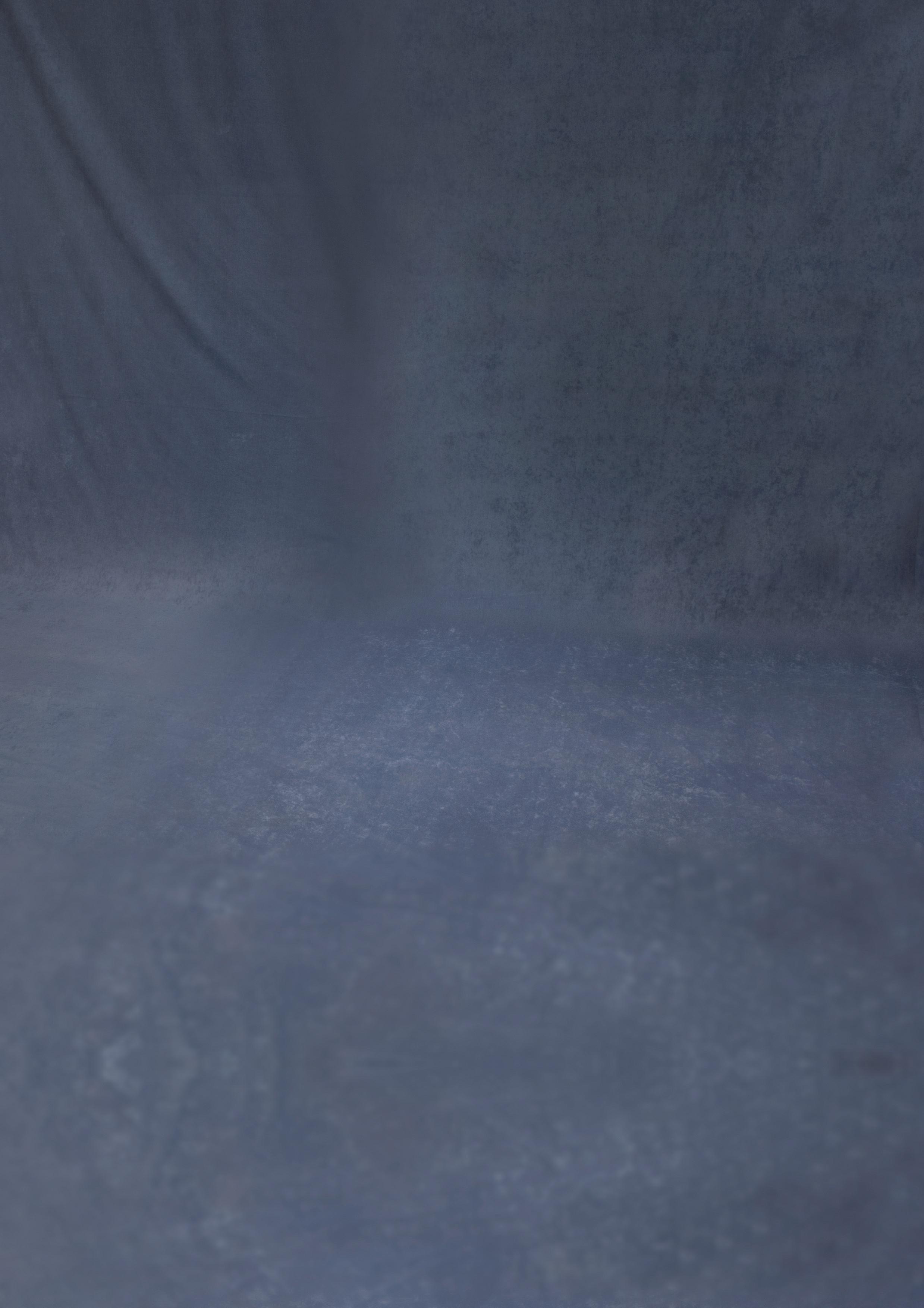
News will by now have reached most of our readers of the recent death of Dr Alan Spedding, who was Organist and Master of the Choristers at Beverley Minster for 42 years. A true gentleman with wide-ranging skills as composer, organist and choir trainer, he influenced generations of young musicians in his time, and was among other things a highly respected reviewer for this magazine. You can read more about him, his early life and his time at Beverley -- where he thought he would stay for a mere five years! -- on p52
The year 2014 marks the end of Dr Higginbottom’s extraordinary reign at New College Oxford, a place he has made his own for the past 38 years. CDs from Novum, New College’s own record label inaugurated in 2010 by Dr Higginbottom, must surely be required listening for cathedral music enthusiasts. In characteristically forthright fashion Dr Higginbottom contemplates the distinctive sound of the countless trebles he has trained, their tone inspired initially by continental boys’ choirs, and speculates on what he will miss most as he moves on to fresh woods and pastures new.
Other new things impress: two very different but remarkable organs. One, with the unusual commission that firstly, the organ had to be moveable; secondly, it should fit into a particular space at the Mansion House; and thirdly,
it would have as its final resting place the Lady Chapel at Westminster Abbey, was designed and built by Mander Organs to celebrate the Diamond Jubilee of HM The Queen. One of its quirks is a Nightingale stop, which when drawn causes two small stuffed birds to rise above the organ’s cornice, and revolve. This caused much mirth when deployed at the grand reception in honour of 150 years of the Royal College of Organists towards the end of last year!
The other organ is a splendid and imposing construction by Dobson of Iowa now installed at Merton College Oxford. Commissioned by Merton to celebrate the 750th anniversary of the college’s founding, coupled with the rejuvenation of its choir, it is a magnificent instrument which adds lustre to the already beautiful chapel. The choir -- which has eighteen choral scholars and now sings three services a week, a significant increase since 2008 when only one service was sung per week -- has risen rapidly to the front ranks of Oxford and Cambridge collegiate choirs, and has produced several highly regarded CDs. The review of a recent one, The Merton Choirbook, a collection of pieces all related in some way to the college, can be seen on p59. Visit Merton this year if you can -- there are celebrations continuing throughout the year, and many recitals on the new organ.
Enjoy the magazine.
Sooty AsquithLog onto www.fcm.org.uk and fill in the form, or write to/email the address given on p3.
Member benefits include:
• welcome pack
• twice-yearly colour magazine and twice-yearly colour newsletter
• ‘Singing in Cathedrals’: a pocket-sized guide to useful information on cathedrals in England, Ireland, Scotland and Wales
Opportunities to:
• attend gatherings in magnificent cathedrals
• meet others with a shared interest in cathedral music
• enjoy talks, master-classes, choral and organ performances etc.
UK members are asked to contribute at least £20 per year (£25 sterling for European members and £35 sterling for overseas members). UK choristers and full-time UK students under 21 qualify for a reduced rate of £10. New members subscribing at least £30 (standing order) or £50 (single payment) will receive a free fulllength CD of cathedral music, specially compiled for FCM members.
FCM’s purpose is to safeguard our priceless heritage of cathedral music and support this living tradition. We strive to increase public awareness and appreciation of cathedral music, and encourage high standards in choral and organ music. Money is raised by subscriptions, donations and legacies for choirs in need.
Since 1956 we have given over £2 million to Anglican and Roman Catholic cathedral, church and collegiate chapel choirs in the UK and overseas; endowed many choristerships; ensured the continued existence of a choir school, and worked to maintain the cathedral tradition. Please join now and help us to keep up this excellent work.
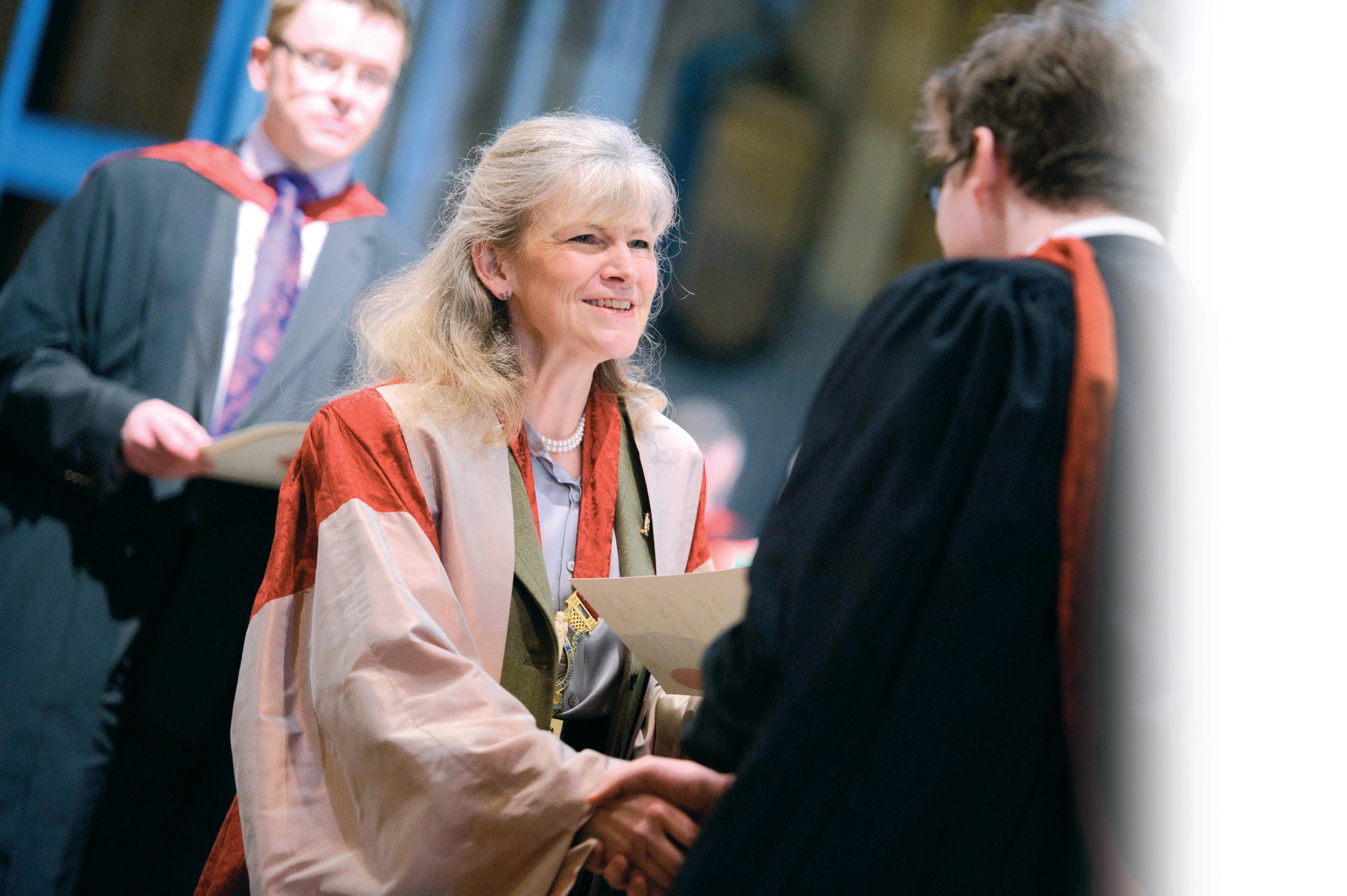
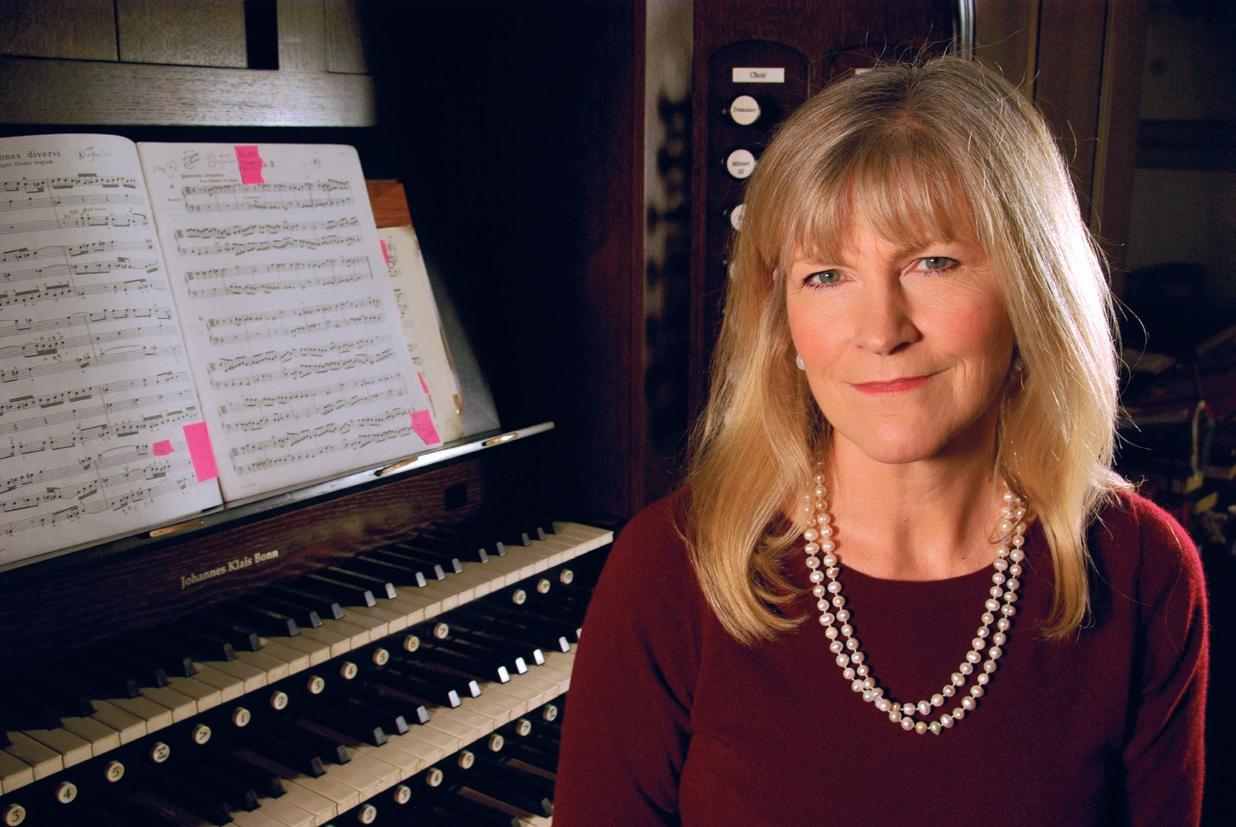

Catherine Ennis is this year’s President of the Royal College of Organists, which was given its royal charter in 1893. She is the 60th president, only the second female to hold that august position, and not so much a new broom as a person prepared to bang the drum in a noble cause. Founded in 1863, the RCO is now a modern, dynamic charity dedicated to the promotion and advancement of organ playing and choral directing. It also, through the RCO Academy, runs scores of events aimed at nurturing and supporting the talents of organists and choral directors of all ages, backgrounds and levels of attainment. The RCO is unique in that there is no other charity which seeks to raise the standards of performance on a single musical instrument.
Catherine is naturally very proud of the RCO and its activities, in particular its educational programme. “The RCO Academy offers the opportunity to play at organs all over London and the UK. Courses explore diverse subjects -- for example, the ornamentation of Couperin or how to improve pedal technique -- and the roster of teachers is extraordinary.” These latter include Anne Marsden Thomas, who founded and directed the St Giles International Organ School from 1992 until January 2012, when it became part of the RCO Academy. There is a wide range of classes for which all players may sign up, regardless of age or aspiration. So if you occasionally play the organ at your local church and feel your technique needs improvement, why not consider an RCO course or class? Booking is online or by post, and class preparation sheets are also posted on the website. Most sessions (e.g. Playing the Psalms; How to Manage a Large Console; Sight-reading; Six Essentials for Starter Organists etc) are restricted to six active participants, to facilitate the best uptake of knowledge
The RCO Summer Course for Organists, which takes place at St Giles Cripplegate in the City of London in August, is also run by Anne Marsden Thomas and is always greatly oversubscribed. Student organists, split into seven levels of study from beginner to advanced, are able to play on a number of different organs and are each given a personal assessment. Participants can study accompaniment and keyboard skills, improvisation, technique, etc and there are performance and practice opportunities for everyone on up to 20 pipe organs.
The RCO also has a full-time Education Officer, Simon Williams, who with his colleague James Parsons organises courses in the Easter and summer holidays, again covering all standards. For teenagers preparing for university or cathedral organ scholarships, the RCO Academy offers The Organ Scholar Experience, which takes place in Oxford or Cambridge in alternate years.
The College of Organists, as it was first called, was founded by Richard Limpus, organist of St Michael’s, Cornhill, and a group of fellow organists who convened to discuss improving the professional skills and status of organists. From the start, activities were directed towards the encouragement of the composition of new church and organ music, and there was an energetic programme of lectures. The establishment of the famous examinations came in 1866, with the practical element taking place in St Michael’s, Cornhill. The familiar two-tier structure of Associateship (ARCO) and Fellowship (FRCO) diplomas followed in 1881 and has been in use ever since. A choir-training (now choral directing) diploma was introduced in 1909, and much more recently a foundation certificate (CertRCO) has been introduced to cater for the amateur player or developing student.
The first President of the RCO was the then Archbishop of Canterbury, Dr Longley, in 1865. Subsequently, the office of Patron was created, and the Archbishops of Canterbury and York, and the Bishop of London, became Patrons of the College. From that time on, the office of President became an elective one. Nowadays, the President of the RCO spends the year before his or her term of office shadowing the existing incumbent. Catherine’s immediate predecessor was the Westminster Abbey Organist, James O’Donnell.
The presidential two-year office runs from July to July and in 2013 encompassed the high-profile celebration at the Mansion
House, enhanced by the presence of the Lord Mayor of London, Alderman Sir Roger Gifford, himself an enthusiastic musician and supporter of musical charities. That event was held with the intention of raising the public’s awareness of the RCO’s mission, one part of which is to educate young organists (and, indeed, those who are not so young, since courses are held for those longer in the tooth also), to which end the audience was treated to four performances by existing pupils of the RCO, the youngest being only twelve. In between the musical performances were speeches from those associated with the College, including one from the new chairman, Christopher Wood, a surgeon with an unusual trait: he has written, and had performed at St John’s Smith Square, a requiem, surely one of very few non-professional musicians to do so.
Like most charities, the RCO is not a rich organisation, but relies on the generosity of its approximately 2300 members and a few benefactors. In raising its profile through this 150th year it is hoped that those with an interest in the organ and in organ and choral music will consider supporting its work, in particular to continue finding and nurturing talented organists and choral directors. As part of the 150th anniversary celebrations the College is hosting the ‘150 for 150 Recital Challenge’, a spectacular year-long programme of concerts all listed on the RCO website. It features players of all standards, from the past and current presidents to others less elevated -- anybody who plays the organ can take part, and you don’t even have to be an RCO member. By filling in a form on the website your recital programme and date will be added to the nationwide recital programme and to the RCO Facebook page. All recitalists will be sent a ‘150 for 150’ recital pack containing templates for posters, press releases, and ideas and materials for using the recital to raise money in support of the College’s anniversary appeal. The culmination of this celebration will be on December 10th, when Martin Baker plays at the Royal Festival Hall.
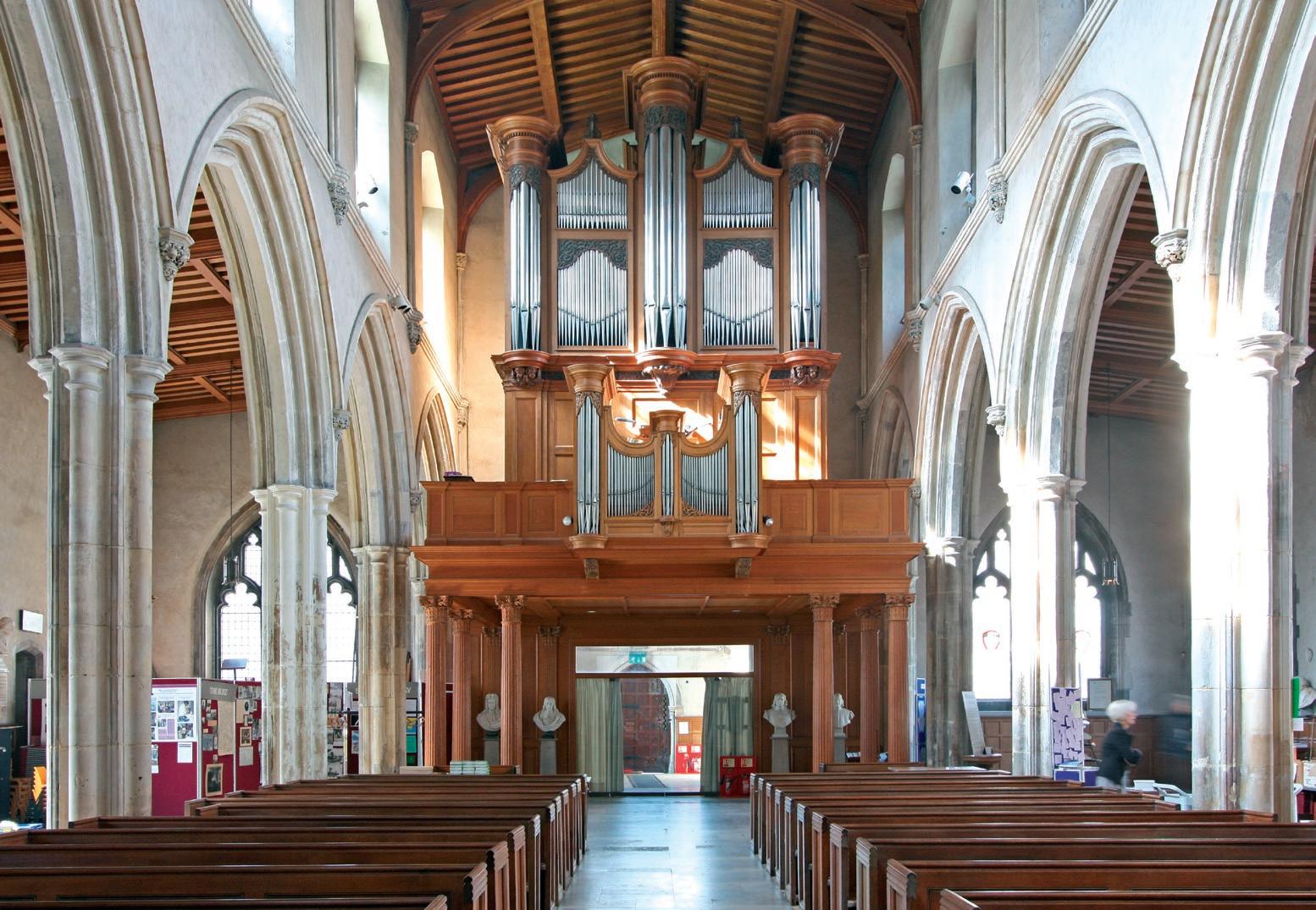
RCO Anniversary events can be found at rco.org.uk, as can more details about both the RCO appeal, and in particular The Anniversary Circle, a group of supporters (both corporate and individual) who can help create a strong platform for the RCO’s work across education, outreach, examination and scholarship.
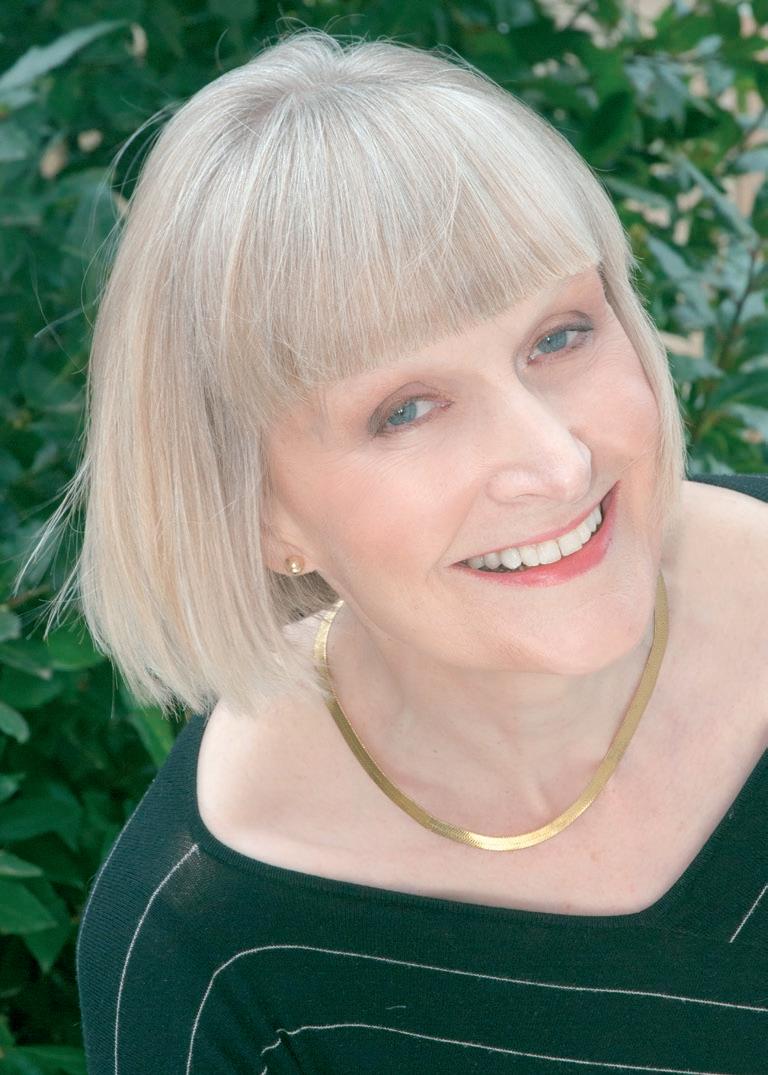
As well as being President of the RCO, Catherine Ennis is also Organist and Director of Music at St Lawrence in Jewry, a fine Wren church near the former medieval Jewish ghetto rebuilt in 1677 after the Great Fire of London and then again in 1957 after suffering extensive damage during the Blitz. It is now a guild church and the official church of the City of London Corporation. Like most Wren churches, few walls are at right angles, but the ‘sumptuous barn’ white interior with its gold leaf and chandeliers is spectacular.
Catherine has been in position for over 27 years, not in itself totally unusual in a profession where it is almost the norm to serve over 25 years as a cathedral director of music; what is considerably more unusual is that at the time she was appointed there was no female director of music at a UK cathedral. And although the list now includes such distinguished musicians as Sarah Baldock at Chichester and Katherine Dienes-Williams in Guildford, the balance is very heavily weighted in favour of the male sex. She is the founder of The London Organ Concerts Guide, which reaches many thousands of music lovers all over the UK and abroad, and the custodian at St Lawrence of a series of Tuesday lunchtime recitals which continue a century-long tradition of organ music as midday respite for all. She is one of the most distinguished organists in the UK and gives numerous recitals both here and abroad.
The St Lawrence organ is a fine Klais, installed under Catherine’s supervision in 2001. Retaining only the fine oak cases of the 1957 Mander organ, the new instrument replaced pipework which had been recycled from war-reclaimed organs, and action which had all but worn out. It majestically fulfils its requirements on the many civic occasions which occur at St Lawrence, the Lord Mayor’s church, and provides a rich tonal palette for the many different styles of repertoire which feature every Tuesday in the recital series. In recent years the church has acquired a reputation for assisting young musicians, with the Tuesday series hosting three discrete
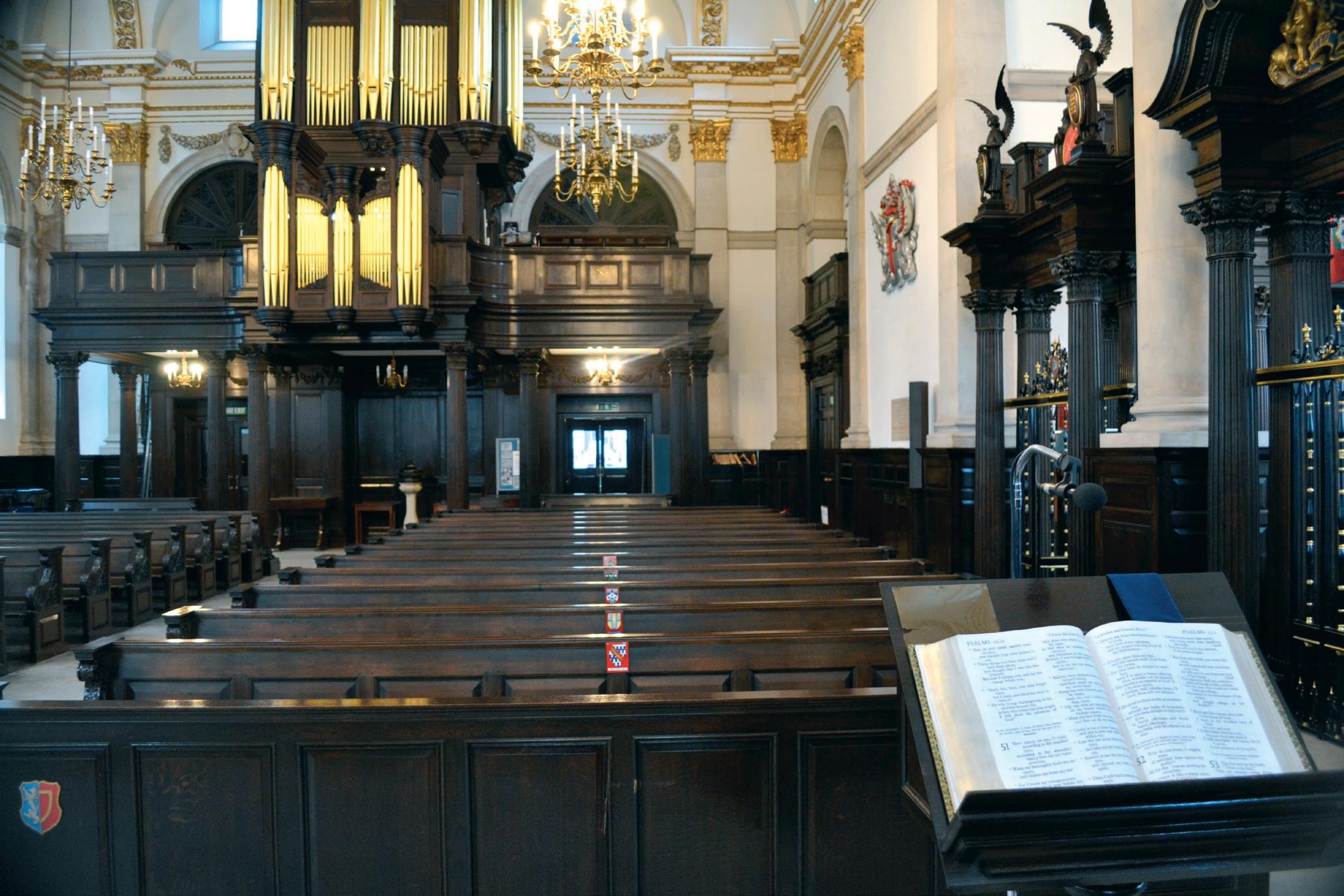
opportunities each year: in June, the John Hill series features international young artists; in November, young UK organists who are being supported by the Eric Thompson Trust give recitals; and in March, top teenagers from across the country join forces to put the Klais through its paces in the Sixth Form series. The instrument is a unanimous hit with visiting organists and educates many of the young players in matters of sound and touch.
Fundraising for the church and its ministry can often be a struggle, so all areas of sponsorship are minutely explored. On one occasion, dogged by building works in the environs and unwilling to let a useful opportunity pass by, St Lawrence’s vicar was able to persuade the building firm involved to donate a substantial sum to offset the disruption caused.
St Lawrence has a small choir of professional singers, and there are no Sunday services. The church is unusual in that it is a guild church, not a parish church, and therefore congregations for its services are generated by its many associated organisations. These include charities, regimental associations, livery companies, local businesses, and some with Commonwealth ties, including the New Zealand Association. All special services and events are organised individually, including many carol services in December. Throughout the rest of the year an eclectic variety of musical activities takes place: lunchtime organ recitals, school concerts, piano recitals etc, and in August there is a summer festival aimed at those who have not departed the City for sunnier climes.
Catherine has had a long and respected career as an inspirational teacher, regularly gives organ recitals throughout the country, and has helped create four major new organs in London (St Marylebone, where she was director of music until 1990, the William Drake organ for Trinity College in Greenwich, The Queen’s Organ formerly at Mansion House and now in Westminster Abbey Lady Chapel, and of course St Lawrence).
 by Martin Neary 1944-2013
by Martin Neary 1944-2013
Sir John Tavener was a passionate believer who, when composing, clearly felt the hand of God. For a time in his thirties he had the confidence and determination to renounce several centuries of our musical inheritance, as he turned to the basic simplicity and repetition of Orthodox chant. From what some critics saw as a limited base, he could produce almost spontaneously (or so it seemed) some of the most moving scores of the past fifty years, touching the hearts of millions. From an early age he was absorbed by a sense of mortality -- I can hardly conceive how many requiem-type texts he must have set -- yet this serious side to his nature could not conceal his essential impishness, and certainly, in his youth, a certain wildness. His company was always entertaining and often hilarious, while his unashamed love of the sun, of wine and of flamboyant cars was legendary.
My earliest memories of John date back to 1972, when he came to Winchester to hear rehearsals for the first of his works I conducted, Little Requiem for Father Malachy Lynch. Winchester choristers remember how the long-legged composer in his white suit would arrive at the cathedral close in his white Bentley and, ignoring instructions to keep off the grass, lie down on the hallowed turf and sun himself.
At that point John was still in his modernist (Stravinskian) phase. It is easy to forget that his initial impact on the musical scene had been colourful, to say the least, with provocative works such as The Whale, which included a variety of cacophonous sounds (snorts and other violent expressions!). There were also his links with the Beatles, whose Apple label recorded The Whale and Celtic Requiem. The latter work, which
John Tavenerwe performed in Winchester Cathedral in May 1973, has a remarkable mixture of simple children’s songs, such as Jenny Jones is dead, is dead, alongside dissonant choral and orchestral writing and an ethereal arrangement, in the form of a very slow-moving canon of Lead, kindly light, John’s favourite hymn tune at the time. Despite protests from at least one parent about the violence of the language, we went ahead with the performance, and I shall never forget the ending, when the children, singing Jenny Jones, moved slowly down the long nave with sunlight streaming in through the West End window.
This was truly a marriage of music and ritual; and indeed several reviews around this time described John’s music as ‘cathedral music theatre’, notably after performances in Winchester and Bristol Cathedrals of his large-scale work, Ultimos ritos. John loved big sacred buildings and at the Winchester Cathedral UK première in 1975, he felt we came close to his original vision, with four choirs and string orchestras, four horns and four sets of timpani positioned in the four corners of the nave, trumpeters high up on the screen and the audience somehow accommodated in between! Ultimos ritos was inspired by the Crucifixus from Bach’s B minor Mass, and at the end a tape of the Bach movement gradually drowns out Tavener’s music, until all we hear are the last extraordinary chords of Bach’s Et sepultus est, seeming to chime in so well with John’s mantra of ‘dying unto oneself’.
Another crucial element of John’s compositional life was devotion to what he called ‘The Eternal Feminine’, and our next Tavener event, in 1977, was the first broadcast performance of Canticle of the Mother of God, given by Elise Ross and the Waynflete Singers. This demanding work, alternating melismas sung by a solo soprano in Modern Hebrew with responses from the unaccompanied choir in Modern Greek, was a huge challenge for the choir, and after the final rehearsal and balance test the BBC producer, Philip Moore, and I were pretty worried. However, thanks to my commandeering a young Winchester chorister named Stephen Layton, whose sense of pitch enabled him to hum the note for the sopranos before each entry, the performance was transformed, much to Philip Moore’s amazement!
The first Tavener setting clearly rooted in Orthodox chant to be heard in Winchester was the Great Prayer of Saint Andrew of Crete in 1981. John’s note, revealing so much of his belief at the time, began by quoting Mother Thekla, who was to become such a strong influence as well as his librettist and translator:
“We must repent from minute to minute, person by person. My wretched soul. The person alone is here important, because the Day of Judgement is at hand, and there we can only be alone, face to face, alone with the judge . . . ”
John continued:
“The work was inspired by my feelings of penitence during the first days of the Great Lent earlier this year and was finished on the Sunday of The Last Judgement.”
The music is a very slow chromatic descent – a musical prostration in fact – using all the chromatic scales, major and minor. It begins and ends with Irmos. In between are twentythree Troparia sung by a single male voice, and the choir responds to each Troparion respectively in English, Greek
and Slavonic, with the words ‘Have mercy upon me, O God, have mercy upon me’. The homophonic chord sequences were deceptively subtle, and the dense triads created an extraordinary effect. Such sequences became very much a part of John’s musical language, as can be heard in the Hymns to the Mother of God, and indeed in his unique cello concerto The Protecting Veil first performed at the 1989 Proms. The title itself shows how even his instrumental pieces were so often inspired by spiritual texts and chants.
By then an astonishing flow of pieces, some of which he would say came upon him ‘in a flash’ had poured forth, from the gargantuan to the apparently simplest of miniatures -- a supreme example being The Lamb, written for his nephew Simon’s third birthday, in which John found a wonderful way of matching the innocent symmetry of Blake’s verse with his own musical symmetry through the use of patterns such as inversion and retrograde. What made his music unique was that these patterns so often produced quite ravishing musical harmonies. But he could still be bold and even deliberately shocking, as when the organ thunders in with a clashing chord of C# minor in A Christmas Acclamation – God is with us (kindly commissioned to mark my time as Organist and Master of the Music at Winchester).
Virtually all these settings were influenced by Orthodox chant, and Orthodox texts. Interestingly, John anticipated the move to greater ecumenism with the inclusion of Orthodox antiphons in the Evening Canticles for King’s College Cambridge. In recent years, and particularly after his life-threatening heart attacks, his musical language had become simpler – I did not say less difficult! – but the inspiration was undoubtedly there, as can be heard in the Nunc Dimittis (2010) commissioned by the National Youth Choirs of Great Britain. And John’s own ecumenism led him to absorb the beliefs of a host of religions, even though his spiritual home was undoubtedly the Orthodox Church. It therefore felt so appropriate that his funeral in Winchester Cathedral, thanks to the gracious invitation of the Dean and Chapter, should have been essentially an Orthodox service. The Winchester Cathedral Choir, on top form under Andrew Lumsden, used the building in a way John would have loved, with stunning echoes in As one who has slept from the South Transept. That service, which lasted over two hours, was followed by his burial in the churchyard at Childe Okeford in Dorset, beside the lovely house (adorned with icons) where John and the family lived.
John was still composing at the time of his death, and many of the pieces written in the last years of his life deserve to be better known. One such is Miroir des Poèmes with words by Jean Biès, which was composed in 2006, but had to wait until January 2014 for its UK première. Performed at what
He could produce almost spontaneously (or so it seemed) some of the most moving scores of the past fifty years, touching the hearts of millions.
was to have been a 70th birthday celebration at St John’s Smith Square, but which sadly took the form of a memorial tribute, Miroir, scored for two choirs, two string quartets and double bass, is chorally extremely challenging, but ultimately very rewarding. Full of sharp contrasts and engaging rhythms, there are traces of John’s early style as he continued to create, often contrapuntally, some stunning harmonies around his haunting melodies. And the response of the performers, audience and critics was tremendous.
As Canon Lucy Winkett said when she ended her ‘Thought for the Day’ on BBC Radio 4, shortly after John’s death: “There are many, many people for whom he did just that.”

I will end by adapting the words from Hamlet in John’s bestknown work, Song for Athene, which made such an impact at the funeral of Diana, Princess of Wales in 1997, not least for
I also think of They are all gone into the world of light (dedicated to the memory of the wife of John’s heart surgeon, Professor Sir Magdi Yacoub, who had looked after him for thirty years), in which a deceptively simple alternation of major and minor tonality is especially haunting; and The peace that passeth understanding, commissioned for Remembrance Day 2009 in honour of the passing of the World War I generation. Once again there is the inspiring combination of music (full of the short phrases and dramatic key changes much favoured by John in his later works) and liturgy. Here is the composer’s note: ‘In this setting of St Paul’s great statement, I have tried in a simple and primordial manner to suggest majesty, solemnity and a radiance of peace and bliss. I have also given the music a ceremonial nature by inserting “Allelouias” (sic) sounding from “Heaven” (semi-chorus) -- which he called “The Celestial Realm” -- gradually rising in pitch until they are answered by “Allelouias” from “The World” (main choir). The music forms a gradual crescendo reflecting the meaning of the words. At the musical and spiritual climax, the full organ sounds four chords which represent the Four Angels before the Throne of God. The final chord then transforms into the sacred monosyllable OM, which hums around the building, representing the Peace and Beatitude of God’s Presence.’
For more than forty years I had the privilege of directing many Tavener premières in the UK, as well as conducting some of his largest works abroad, including Apocalypse (in Athens) and the seven-hour long Veil of the Temple (in Amsterdam). Our last foreign expedition was in 2011 to Switzerland when John, who by then was too frail to direct himself, asked me to deputise for him, at an atelier (workshop) in Fribourg dedicated to his choral, orchestral and chamber music. With John’s wife, Maryanna, we spent a fascinating week, having the luxury of five days’ rehearsal with the talented students, with whom John struck up an immediate rapport. The principal work was The Protecting Veil, and we took the opportunity to rearrange some of the orchestral string writing to enhance the beautiful antiphonal effects. It was also very moving to perform in the same concert the Hymn to the Mother of God, on which so much of The Protecting Veil is based.
John once commented, “I think there are an awful lot of artists around who are very good at leading us into hell. I would rather someone would show me the way to paradise.”
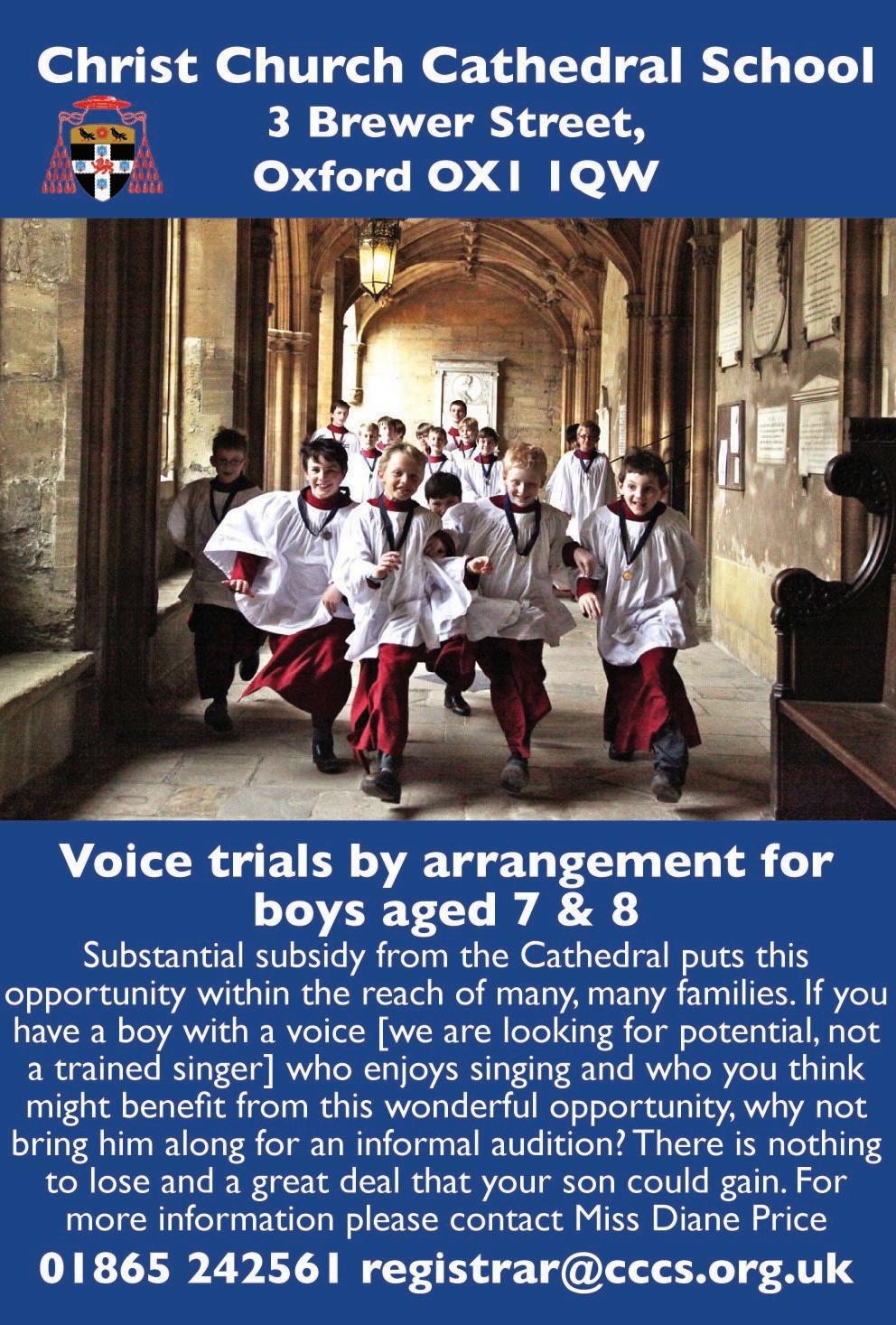
Substantial subsidy from the Cathedral puts this opportunity within the reach of many, many families. If you think you have a boy with a voice [we are looking for potential, not a trained singer] who ������������������������������������������������������������������ opportunity, why not bring him along for a formal audition? There is nothing to lose and a great deal that your son could gain. For more information please contact Laura Kemp.
01865 242561 registrar@cccs.org.uk
John was still composing at the time of his death, and many of the pieces written in the last years of his life deserve to be better known.Martin Neary was Organist and Master of the Music at Winchester Cathedral, and Organist and Master of the Choristers at Westminster Abbey.
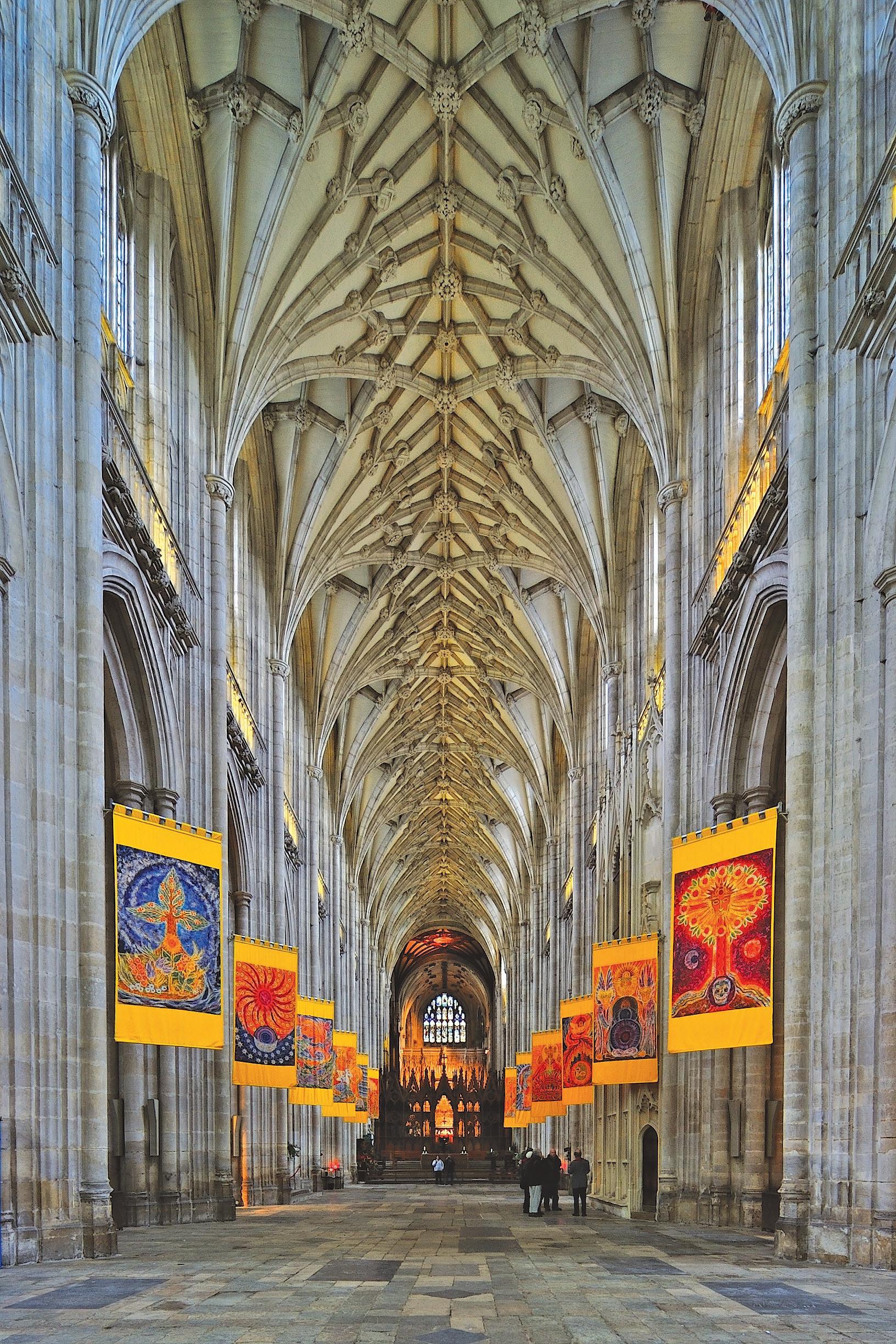
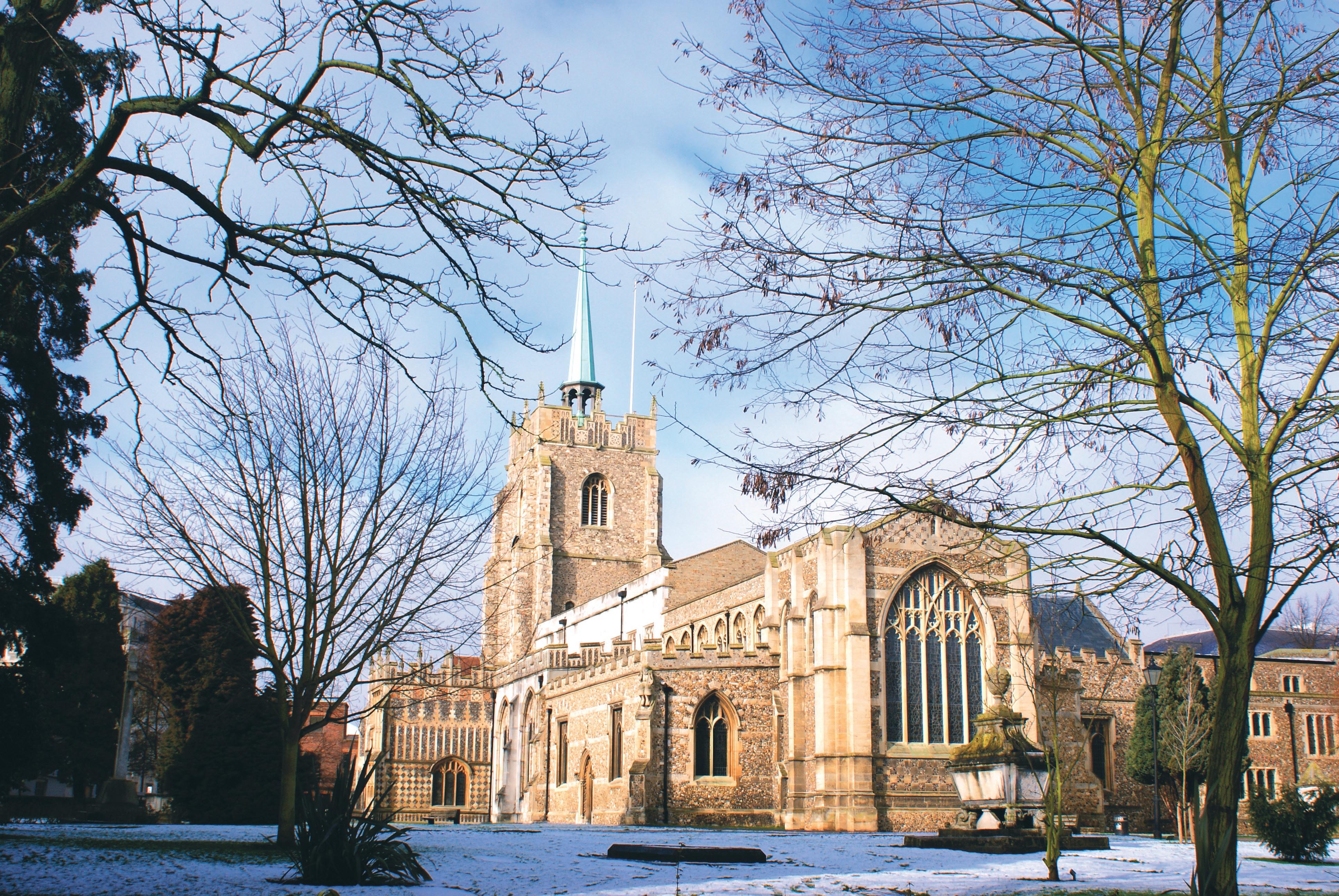
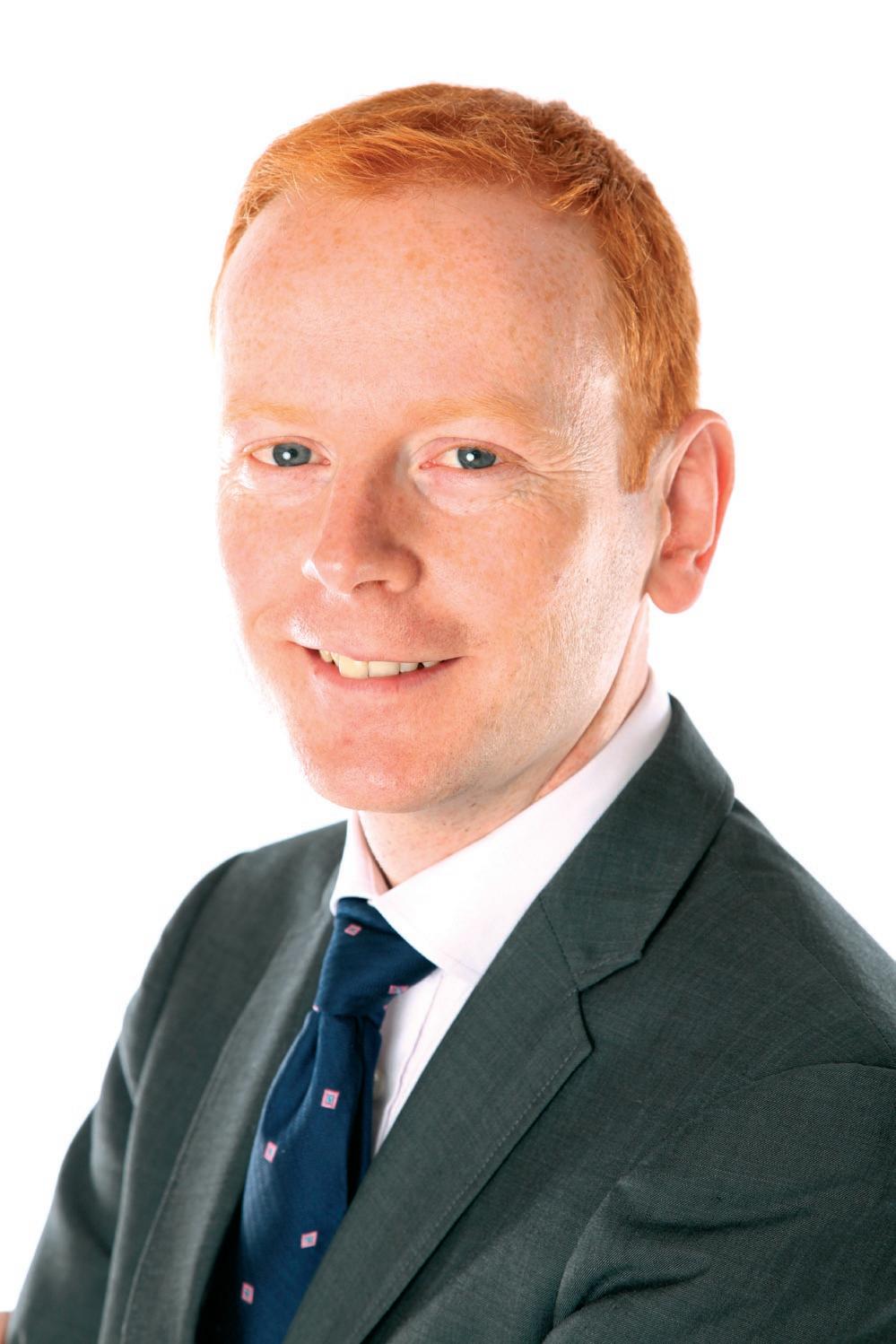

I’d often passed Chelmsford on the train to Suffolk, but the cathedral didn’t really register with me, beyond a brief glimpse from the train window. I was baptised in Shenfield, just down the road, but grew up in Suffolk, from where I went to Southwell Minster as a chorister. After a varied career to date enjoying different positions around the country, it’s nice to be back in my home region and it’s a privilege to be working in this vibrant and positive atmosphere where the music is hugely valued, but never taken for granted.
Chelmsford was chosen as the cathedral for the new diocese of Essex and East London in the 1910s, fighting off competition from bigger but more remote churches in the county, and has seen a number of renowned organists over the last 100 years. Roland Middleton, Stanley Vann, Derrick Cantrell and Peter Nardone all spent valuable time here, and Philip Ledger, John Jordan and Graham Elliott also did a great deal to foster the musical establishment at Chelmsford. None has matched the longevity of Frederick Frye, organist at the time that Chelmsford Parish Church became the cathedral, who notched up 66 years of service!
Although small, the building is warm, light and welcoming, and as a result of the reordering and restoration, full of colour (there are striking icons and other artworks and the main ceilings are painted). It’s a world away from the dark, cluttered atmosphere that characterised the cathedral at its founding.
We marked the beginning of the cathedral’s centenary celebrations with a commissioned work from Jonathan Willcocks. The Temple involved the girls’ choir singing in procession along the length of the building, accompanied by brass, timpani and both organs (played from the chancel console). In May, a four-day music festival will showcase choral and big band music, silent films with organ accompaniment and more.
In November, as the climax of the choral foundation’s centenary celebrations, we are performing Monteverdi’s Vespers of 1610 with Canzona, a terrific Baroque ensemble that I’ve had the privilege of working with before. Also involved are the Chelmsford Singers, a secular choir in the city that I direct. I am intending to spread the performers out around the whole of the cathedral to create some spatial effects that we don’t often get to hear.
In addition, we will be broadcasting Choral Evensong on BBC Radio 3 – our first broadcast since my arrival -- and we also have a number of other exciting ventures planned for the months in between. (At the time of writing, the boys have just been invited to sing in Owen Wingrave at the Aldeburgh and Edinburgh Festivals.)
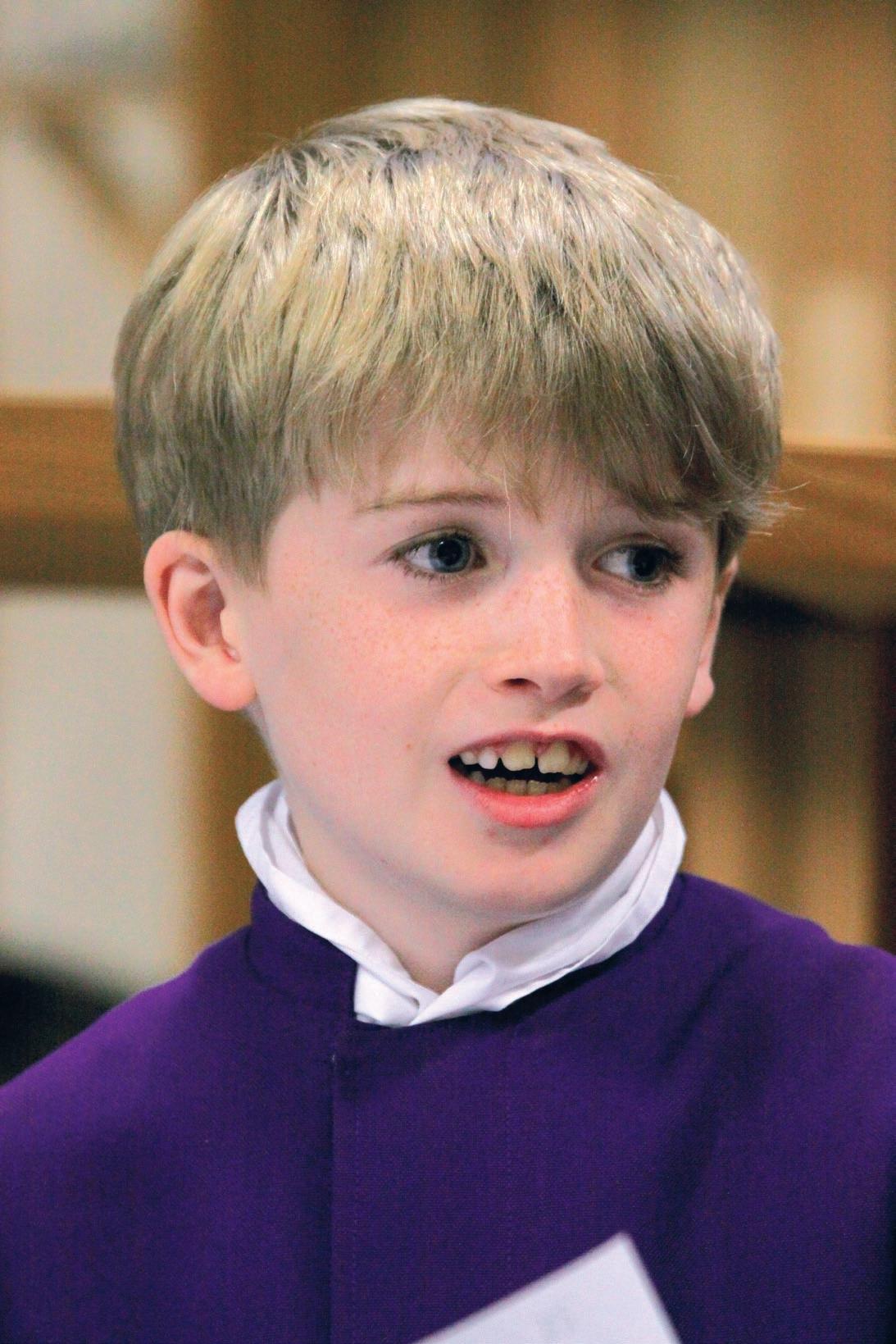
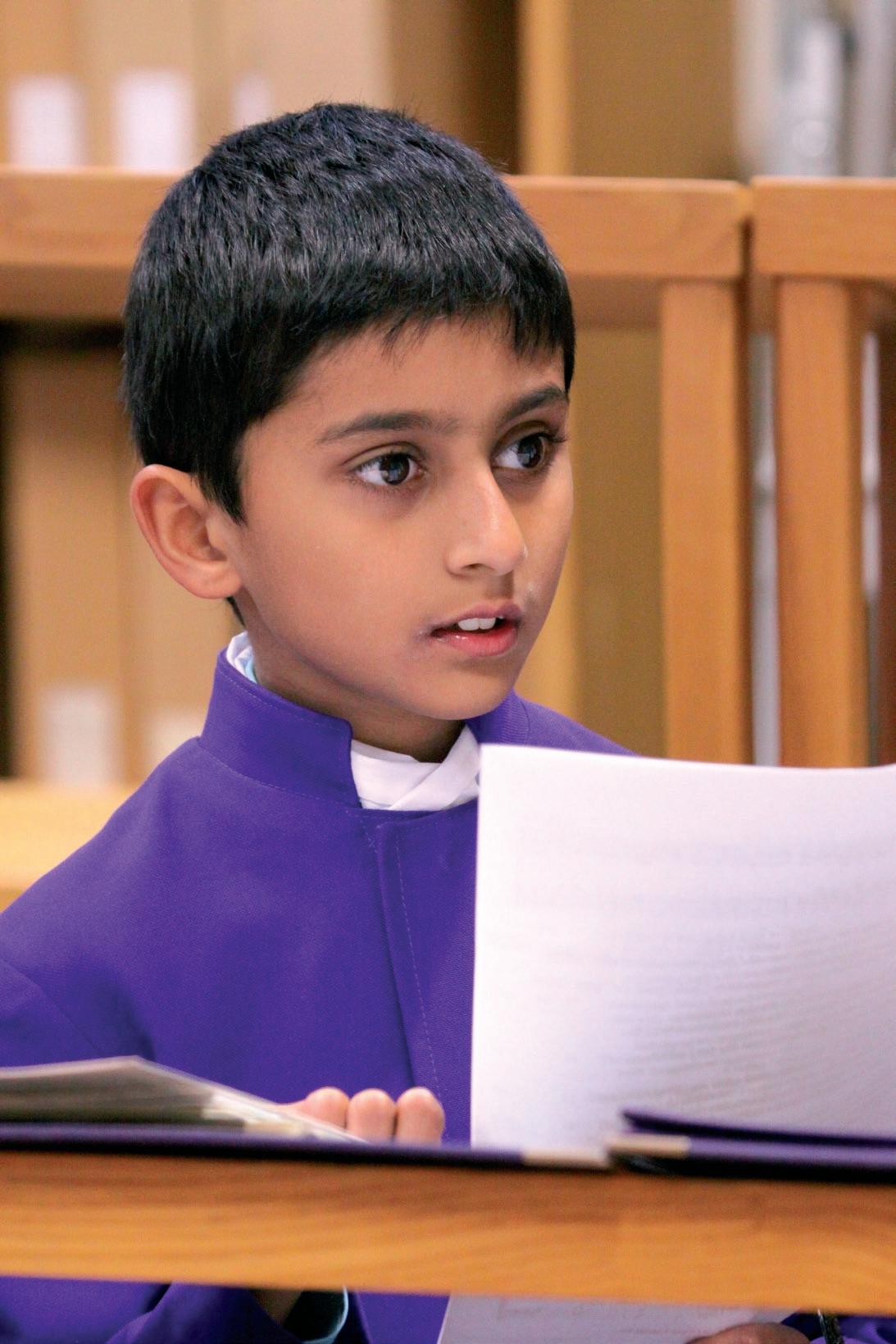
Our typical concert programme here is comprehensive. As well as performing larger works (and a regular performance
of Messiah), we take the opportunity to sing works with instruments that we might encounter in the liturgy. For example, in July last year we gave a performance of music by Britten which included Saint Nicolas, Rejoice in the Lamb (orchestrated by Imogen Holst) and his well-loved Te Deum in C in Britten’s own orchestration for string orchestra. To perform well-known choral works in this way can really change the way that one hears them and the sound world can be so different, as it was when we gave a concert of music from seventeenth-century Venice. Beatus vir sounds so much more exciting with period instruments, and although we can’t have them at Evensong all the time, the choristers don’t have to think too hard to remember what the cornets sounded like! It’s a valuable experience for choristers and audiences alike, and something that I remember well from my own time as a chorister at Southwell. I hope that our choristers will take the same inspiration from what we’re doing now.
The annual ‘Come and Sing’ events which the choral foundation holds – this year featuring Vivaldi’s Gloria and Pergolesi’s Magnificat -- have proved highly successful, partly from a fundraising point of view, but most importantly because they give the opportunity for large-scale choral singing to people who can only take part in such things on an occasional basis. Our many singers come from the west, north and east of London and thoroughly enjoy a good musical experience in a beautiful building like ours, working with professional musicians.
All this has to begin somewhere, so we hold two recruitment sessions a year for the cathedral choir (in spring and summer) and offer boys a taster session where they get to join a choir practice and then sing in the choir stalls with the choristers, with their parents watching. It seems to be a good hook: boys
here are clearly still keen to take part in voice trials, and the take-up figures are encouraging.
Recruitment would be much harder without the support of our schools and their teachers, particularly the two choral foundation schools that supply the majority of our boys at junior school age. I’m able to go into schools before the taster session and hear a selection of prospective singers and the more promising get a letter inviting them to attend the session in the cathedral. That said, we welcome auditions at any time of the year, and the girls’ choir operates on this basis. The bulk of the auditioning is done in the summer to replace leaving girls, but the occasional space opens up at other times and both ‘front row’ choirs are flourishing.
By far the hardest part of the chorister recruitment process for us is retention across the change to senior school. Chelmsford has excellent schools, but there are also a number of good selective schools just slightly too far away to allow boys who go there to attend morning rehearsals, so annually we lose at least one Year Six boy, which from the boy’s musical and developmental point of view is sad and frustrating. That’s the next challenge for us to tackle.

The timetable has developed well over the past few decades: Monday and Tuesday Evensongs are sung by boys and girls respectively. Every other Thursday is a men’s voices Evensong and the boys then have a 90-minute rehearsal; otherwise, services from Thursday to Sunday are sung by the boys and men, with occasional Saturday services and Mattins once a month. The girls’ workload is developing steadily: they have a morning practice before school, as well as another after Evensong, enabling them to look ahead through the term for the various extra services that they sing. There are sixteen girls, aged 10 – 18.
The back rows of the choir comprise a mixture of paid and volunteer singers. We have a flourishing choral scholarship scheme, taking gappies and post-graduates, and last year took the decision to double the number of choral scholars. There are tremendous benefits to being so close to London: it means that scholars are able to undertake further studies at music college or university and still get back here to sing, and it’s also very handy for lessons and concert work. We’ve had a great crop of past organ scholars, some of whom have gone on to become assistant directors of music in other cathedrals, which (I think) means that we have an important part to play in training future generations of organists and choir directors.
As if the back rows weren’t quite full enough, Chelmsford offers places to Junior Choral Scholars who, although still at school, are expected to fulfil the same obligations as the men. There is real value in this scheme as it offers a rigorous preparation for a gap year or university choral scholarship, in addition to the social benefits of learning to work with more senior and professional choir men. Past choristers are natural candidates for these scholarships, and although most tend to have a break of a year or two before re-auditioning, some have gone straight to the back row from the front. A very positive move has been to enlist a vocal coach for the choral scholars; this, combined with our geographical location and rent-free accommodation, allows us to offer young singers a valuable year (or two) to learn or refine their craft.
All of this excellent work takes a good deal of money to support and FCM have been very generous in their assistance, particularly of the choral scholars. At my installation service in September 2012, FCM presented a cheque for £20,000 towards the junior choral scholarship scheme. While this

doesn’t happen every day, it’s a sign of the great positivity that surrounds the music here, and we’re most grateful to all those who invest in the talents of our musicians.
Christmas is as busy and exciting as anywhere, but because Chelmsford is essentially a ‘one-room’ cathedral (i.e. it’s difficult to set the building for both Evensong and a carol service), the week is divided into two: Monday – Wednesday is given over to external carol services, and choral services resume on Thursdays. The girls’ choir joins the cathedral choir for the Advent Procession and a Christmas concert and then after Christmas sings for the Epiphany and Candlemas service. The cathedral choir sings at two Festivals of Nine Lessons and Carols, owing to our small size and the popularity of the event. The morning service on Christmas Day combines the parish and cathedral services, so it is packed and has a terrific atmosphere, but we’re all ready for a break by the end of it!
Perhaps a little unusually, we have a covenant with the Roman Catholic cathedral at Brentwood and enjoy good ecumenical relations, sharing a service at Pentecost every year, alternating venues and liturgies. Thus Evensong is held at Brentwood and Vespers at Chelmsford. A member of the visiting clergy team preaches and their choirmaster directs the joint choirs. It’s a great sign that both cathedrals are so committed to the covenant, and the RSCM locally mirrors the partnership: events are organised for churches in both dioceses and the Area Festival also alternates between the two
cathedrals, letting singers from both traditions experience something from the other. It’s easy to enjoy and even take that opportunity for granted as part of the cathedral’s mission, but it’s important for members of parish choirs to experience the same ecumenical opportunities and it underlines the good relationship enjoyed between the diocese of Chelmsford and its cathedral.
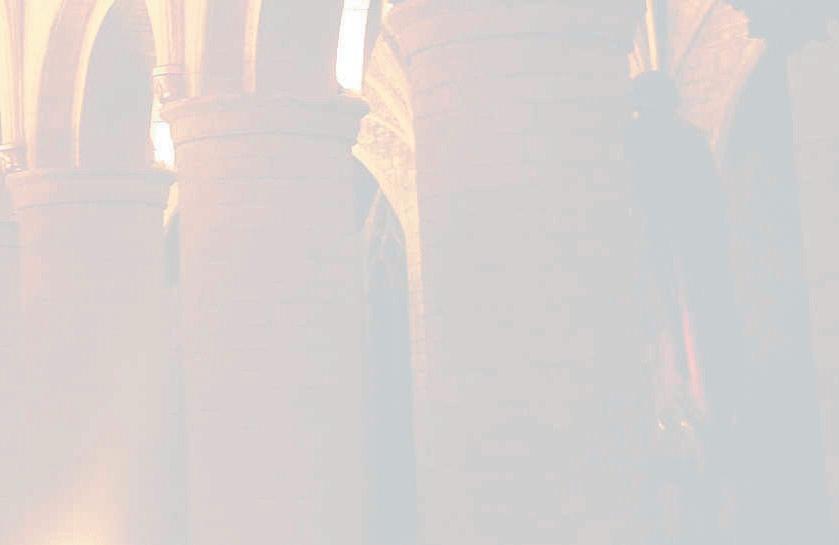
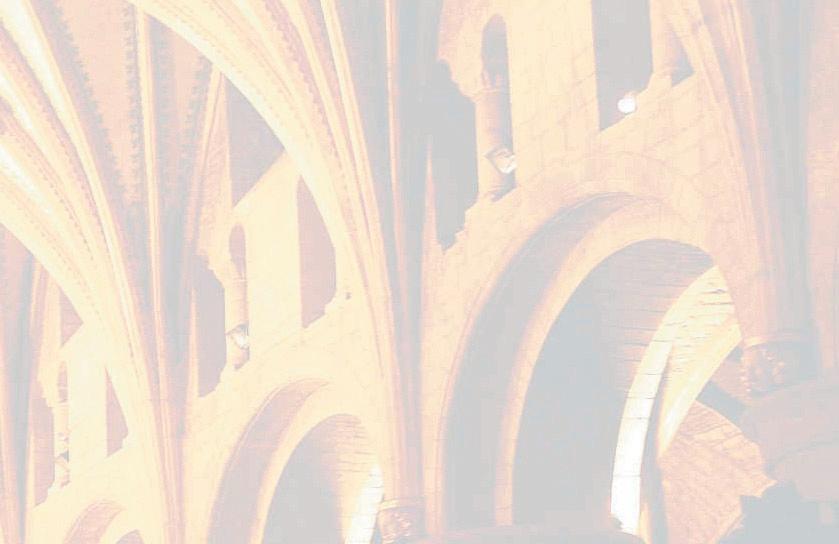

To cover choir holidays the cathedral has also a voluntary choir which gives an annual (and hugely well-attended) performance of Stainer’s Crucifixion on Good Friday evening and sings an evening service in the cathedral on Remembrance Sunday. There is a strong relationship with the Chelmsford Singers (mentioned above): the cathedral organist traditionally directs them, the organ scholar is the accompanist and several singers are also members of the voluntary choir.
All in all, the scale of the musical enterprise here is both impressive and realistic, given our resources. We have a very full choir diary, although there is usually just enough space for the occasional exciting ‘extra’. All our musicians (and their families) are so keen to make the most of the opportunities we enjoy that everything is approached with enthusiasm and care, whether we’re preparing for a concert, carol singing in the town, or a simple unaccompanied Evensong. I think that the devotion to maintaining a good musical tradition here must be one of the outstanding legacies of the last hundred years in Chelmsford and one that will surely last as a memorial to all those people who have contributed to it since 1914.
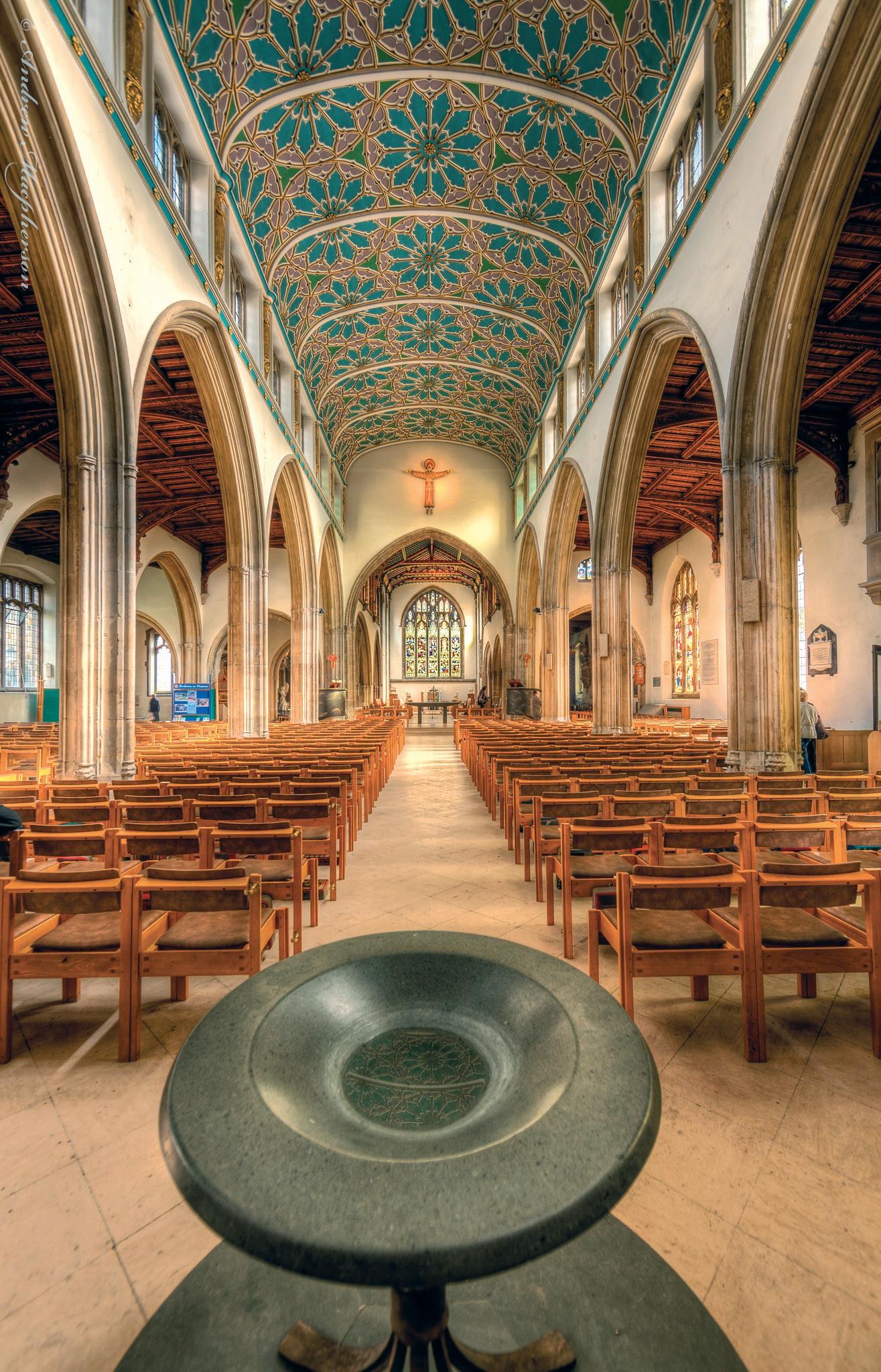
Education details:
Chetham’s School of Music, Manchester (2003-5)
Organ Scholar, King’s College, Cambridge (2006-10)
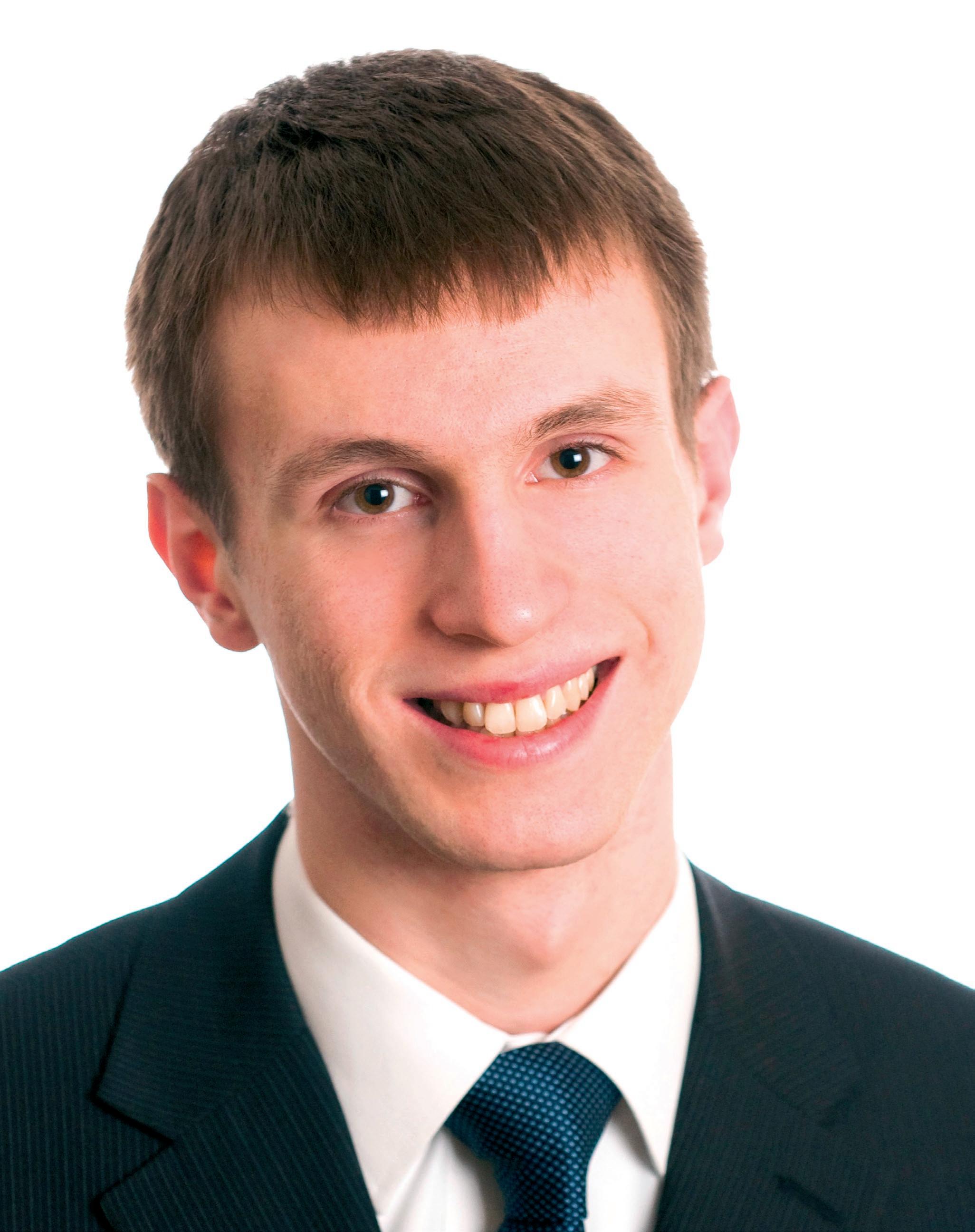
Career details to date:
Organ Scholar, St George’s Chapel, Windsor Castle (2005-6)
Organ Scholar, Westminster Cathedral (2010)
Assistant Master of Music, Westminster Cathedral (2011-present)
What were your early music experiences?
My dad is a keen guitarist, and a big Status Quo fan – listening
to his record collection gave me a good grounding in functional harmony! Sunday Mass was the musical highlight of the week, so I’ve been interested in church music for as long as I can remember.
What or who made you take up the organ?
I remember being fascinated by the sound of the organ when I was a small boy. I always looked forward to the one Sunday a month when it was played at our local Catholic church for Mass, and I’d go upstairs to watch the organist at work. My father had a small half-size keyboard at home, and I began having lessons at a local music shop.
What stands out about your time at King’s? Did your commitments ever threaten to overwhelm you?
King’s is the best possible education for a church musician. Working with Stephen Cleobury every day was a privilege. I can’t think of anywhere else where you can have so great a range of musical experiences in one place – I remember playing second continuo in the Bach St Matthew Passion, the organ part of the Dvořák Stabat Mater, and the celeste part in Messiaen’s Trois Petites Liturgies, all within the space of a week, and on top of the regular round of services! Juggling all that with a degree is very challenging, but it certainly teaches you to organise your time and work efficiently. The big occasions like Christmas Eve and the Advent Procession were always extraordinary, but my favourite services were the quiet weekday Evensongs in January and February – a small congregation gathered in a dark chapel, with contemplative music on the list. I found the chapel at its most atmospheric on those evenings.
What are the particular challenges of the Edington Music Festival?
The Edington Festival has a very special atmosphere about it, as all the participants are there for the love of church music. They form three choirs – the Nave Choir of men and boys; the Consort of mixed voices; and the Schola, made up of men who sing Gregorian chant. For three years I was Festival Organist, and it could be tough to prepare all the music in a short space of time. The organ in Edington Priory was a twomanual Henry Jones instrument, which made some very nice sounds, but had no playing aids and was never designed to accompany large-scale choral music! Happily, the Henry Jones organ is now on its way to a new home in Tallinn, and a brandnew Harrison & Harrison organ is being installed before this year’s festival. Last year I became Director of the Schola, and I thoroughly enjoyed my first year with them. There’s a vast amount of chant to get through, as Mattins and Compline are sung each day by the Schola alone, and more complex chants are sung at Eucharist and Evensong. Having said that, performing great music in the heart of rural Wiltshire is a lovely way to spend a week in the summer!
What organ pieces have you been inspired to take up recently and why?
I’m currently enjoying learning Bach’s C minor Trio Sonata BWV 526, which I’ll be playing at St Paul’s Cathedral as part of a series of recitals for the Sundays of Lent.
Have you been listening to recordings of them and if so is it just one interpretation or many and which players?
I’ve been listening to a number of different recordings, including those by Robert Quinney, John Butt, Simon Preston and Olivier Latry.
Do you do any conducting or teaching?
I conduct twice a week at the cathedral, and I’ve enjoyed taking occasional rehearsals for choral societies. Whilst I don’t do any regular teaching, I’ve found giving organ lessons very interesting – it really makes you think about your own playing and musical instincts.
What was the last recording you were working on?
The cathedral choir’s CD of James MacMillan’s choral music, including a number of pieces with brass and organ accompaniment.
What was the last CD you bought?
Two CDs of British organists of the early twentieth century.
What is your
a) favourite organ to play? I’d have to say the Grand Organ of Westminster Cathedral!
b) favourite building? Gloucester Cathedral
c) favourite anthem? It’s a tough choice, but I’d probably say Byrd Ne irascaris
d) favourite set of canticles? Howells St Paul’s
e) favourite psalm and accompanying chants? Am I allowed to say Dixit Dominus to Mode 1d ?!
f) favourite organ piece? Duruflé’s Prélude, Adagio et Choral Varié sur le Veni Creator
g) favourite composer? J S Bach
When was your most recent organ recital? Which pieces are you including?
I gave a recital at Westminster Cathedral on the last Sunday before Lent, when I played the Prelude and Fugue in A minor BWV 543 by J S Bach, Mozart’s Fantasia in F minor K 594, and the last movement of Vierne’s Symphony No. 6
Have you played for an event or recital that stands out as a great moment?
Playing for the Festival of Nine Lessons and Carols at King’s is a unique experience – no words can describe sitting on that organ bench at 3pm on Christmas Eve and seeing the BBC red light start to flash! A special privilege was playing for some of Pope Benedict XVI’s Mass at Westminster Cathedral in September 2010, a fortnight into my time as Organ Scholar. With the cathedral choir I’ve also taken part in two trips to Rome, including the Consistory in February 2014, during which I’ve had the opportunity to meet two Popes! As a Roman Catholic organist, there’s no greater honour.
What would be your Desert Island CD?
Probably Olivier Latry’s recording of the complete organ works of Messiaen. It’s such fascinating music, and I’m sure listening to it would keep one’s mind active on a desert island!
How do you cope with nerves?
Careful preparation is the only way to survive.
What are your hobbies?
I enjoy visiting monasteries and hearing Gregorian chant sung in its proper context. I’m interested in astronomy, although the centre of London isn’t the best place to observe the night sky! I also have a model railway, which is currently expanding at an alarming rate…
Do you play any other instruments?
I never learned an orchestral instrument, sadly, although over the last few years I’ve enjoyed playing the harpsichord, celeste and harmonium in different ensembles.
Would you recommend life as an organist? Absolutely.
What are the drawbacks?
Long hours of solitary work, often late at night in a cold building. But on the other hand, it’s wonderful to have a great building to oneself!
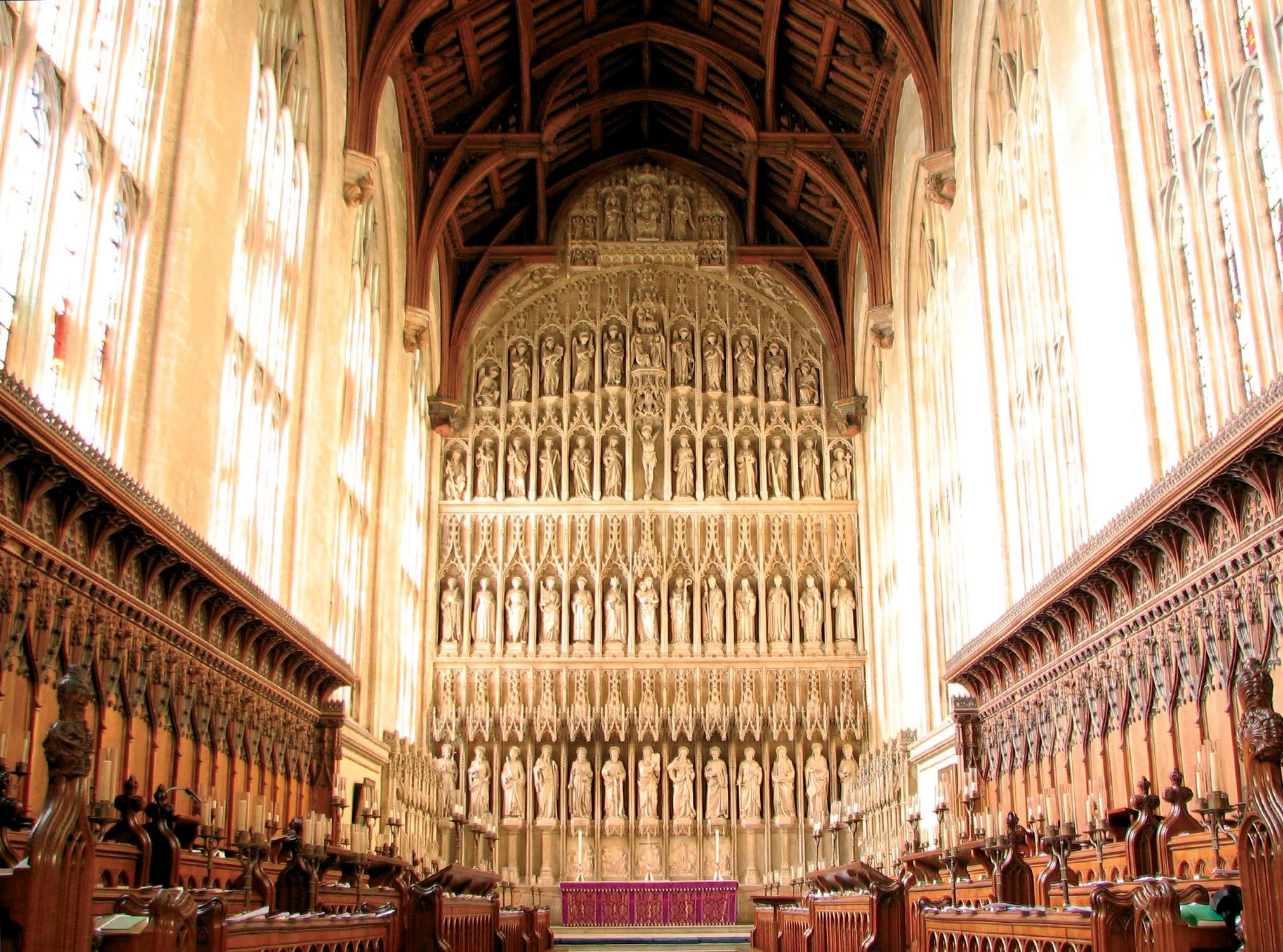
When I was appointed to New College at the age of 29, I could not believe my luck. In the scorchingly hot summer of 1976, as college lawns turned to stunted cornfields, I was coming to the end of a Cambridge junior research fellowship, and casting around for more permanent employment in the higher education sector. I had always kept up my music-making: lots of choral direction in Cambridge, two years in Paris studying organ with Marie-Claire Alain, a couple of organ LPs under my belt, and various publishing projects relating to performance. Some of this was likely to disappear on entering the HE sector, but I was able to wait for New College to make up its mind on its Organist vacancy. It duly did, more on a wing and a prayer, I sense, but a perfect decision for me. To be required by my employer to run a first-class college choir, with a reputation firmly established by H. K. Andrews and then Sir David Lumsden, to say nothing of Sir Hugh Allen, and then to contribute to the teaching of music undergraduates in a world-class university, was both a daunting and exhilarating prospect. I gave myself 10 years to do what I wanted to do. But I have stayed 38. I was having too much of a good time!
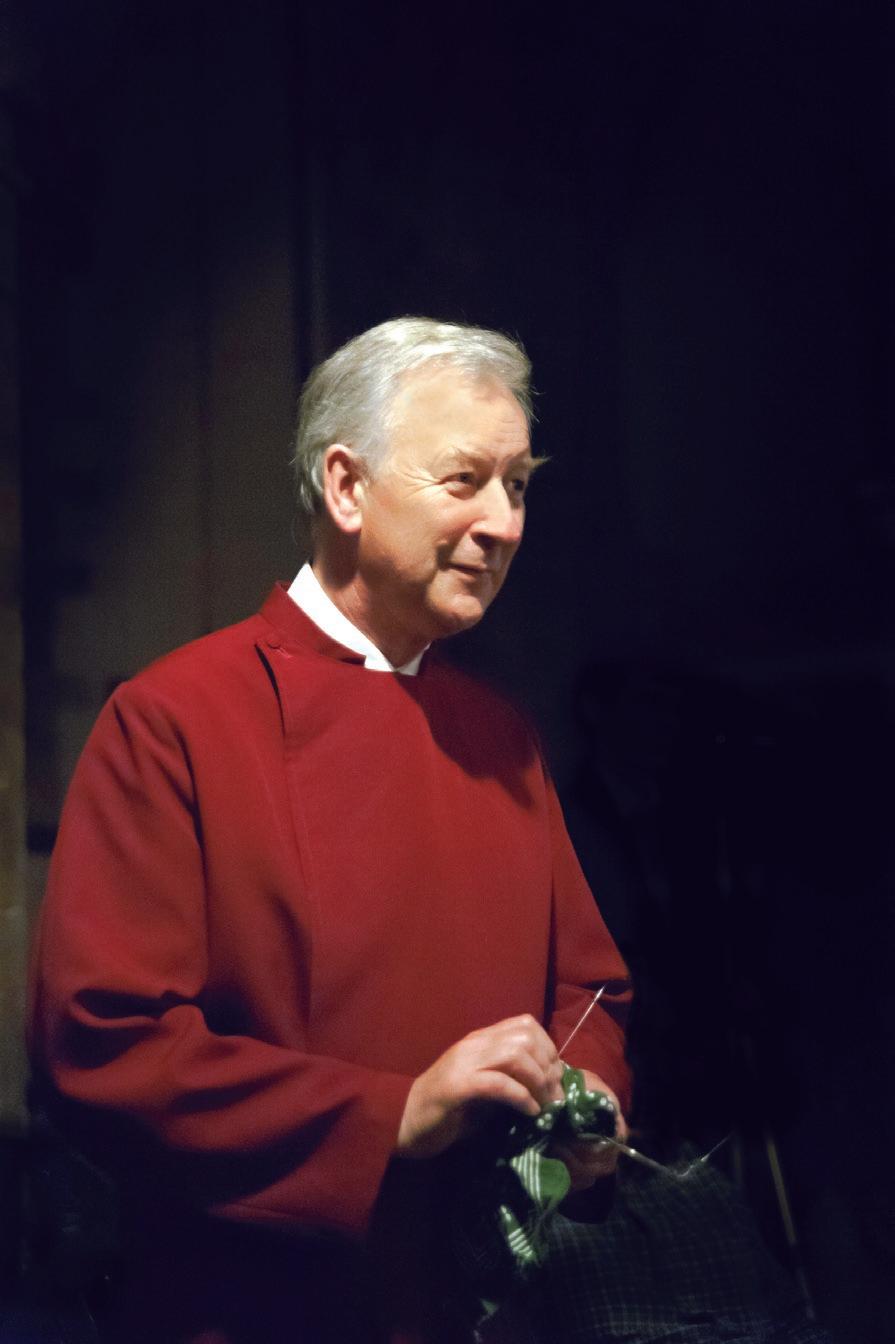
The first thing I noticed about the place was how different it was from Cambridge. New College was a much more formal, even abstract, place compared with my paternalistic Corpus Christi in Cambridge. And I was a greenhorn. It took me several weeks to persuade the domestic bursar of the day that I needed a telephone link in my flat, partly because he was a former naval Commander, and I a rating. Since then I have crawled my way up the ladder, and end now as Senior Fellow of the college. The great virtue of my cautious welcome was that I was left to get on with things. I had to contend with the then Dean of Divinity, who made the place feel at times glacial, and I’m not sure as a young man I knew how to deal with that. Most likely by getting drunk together, but we never did. The clerks of the day were fantastically patient as I got up to speed. And I recall sensing that the chapel operation was so well-drilled that it would look after itself. But I addressed the training of the treble voices immediately. I came in with all the bluff assurance of someone who had never done time in such an establishment, and didn’t really know, much less appreciate, what he might be overturning. David Lumsden had left me with a rising generation of choristers of great distinction, including the young James Gilchrist (I think I can say that I’m doing the same to my successor). So I was able quickly to produce from these boys the sound I wished to hear.
What about that sound? It’s been loved, liked, tolerated, contested. My objective was to have a top line (indeed a whole choir) robust enough to work on equal terms against an orchestra in concert halls (not simply engineered in the studio), and to have every boy in his last two years capable of singing a good solo, not just a bit of verse, but an aria. It didn’t always happen, of course, but it happened enough to allow me to make some early recordings for CRD Records with exceptionally demanding solo treble roles (notably the Western Wynde masses of Taverner and Tye). I’ve remained faithful to this ambition over my whole time here. Anyone who knows our recent recordings on the Novum label will know that our choristers take all the solo soprano roles, in works such as the Monteverdi Vespers, Mozart Requiem and Vespers, Couperin motets and Haydn Nelson Mass. This is

an approach I’ve extended also to the men of the choir. For me, New College Choir is an ensemble of solo voices, who (if you’re lucky) have the tact and discipline also to sing together -- in time, in tune, in balance. To get to that point with children, you need to give them some individual attention. Was New College the first such place to give its choristers regular solo singing lessons? I would be interested to know. But it was at least unusual in the late 1970s (whereas now of course it is commonplace). I also took lessons myself, and still do, with our present singing teacher, the wonderful Bronwen Mills, who followed the equally wonderful Colin Baldy. So New College trebles have vocal technique, and some of them turn out to be as accomplished as adult professionals.
An additional spur to finding a particular sound-world for New College was my experience of continental boy choirs. In the 1980s and early 1990s I led an International Academy of Children’s Choir Direction in Grasse (France). I heard at close quarters the work of Heinz Hennig (Hanover Boys), Gerhard Schmidt-Gaden (Tölz Boys), and Victor Popov (Moscow Boys). I encountered also the Escolania of Montserrat under the great Dom Segarra. One can’t hear these choirs and not be influenced. But one thing did strike me forcibly, particularly as a result of my work for the French government in its bid to re-establish choir schools in France: that the English system presented the perfect pedagogical tool for musical training. Such that, with its huge turnover of repertory, its daily routines and tasks, its selected numbers, its professionalised and supportive back rows, its frequent public performances, it was possible to echo in our work the purpose of choir schools so clearly articulated in the past: to provide an allround musical education for children. So, our boys know why they transpose certain pieces, they understand incipit clefs, they can turn a tremblement appuyé, they can hear a dominant ninth, they can appreciate the metrical and counter-metrical tread of a melodic line, and some of them compose descants -- to mention a few things at random. All New College trebles of my time will have inwardly digested their ‘Mini-mind’ (a comprehensive list of musical jargon for junior choristers), the most exotic datum being: ‘Direct – a sign looking like a worm that has hit a brick wall, signifying the pitch of the next note’. They never forget it! And that’s why I think a lot of them sing with real understanding, not only the understanding of which the famous RSCM prayer speaks, but the understanding that illuminates musical performance. If you need convincing of this, listen to what New College choristers can understand and then convey of the subtleties of the music of the esoteric Nicholas Ludford, their expertise quite rightly recognised in a Gramophone Award. No puppets on strings here.
This plays into what we choose to sing in our offices. We regard the whole of the Western European tradition of sacred music as relevant to our work. We can take an inclusive view of pre-Reformation music, and indeed of music written for other Christian denominations. And we don’t have to sing in English if the composer set Latin, French, German, Slavonic, or even Dutch texts. The size of our choir library has grown exponentially, as we continue to mine the riches of the Christian choral tradition. This makes us as much a cultural endeavour as a religious one, and as much an educational as a liturgical one.

These days, views on accessibility have greatly changed. On arriving at New College, it took me a little while to persuade
my colleagues that we might have a notice at the college gates cordially inviting visitors into our services: the prevailing view was that it was a private chapel. The choir rarely sang outside the chapel, but under David Lumsden’s guidance had begun the business of spreading its wings through recordings. Little by little it has not only become accepted that the choir should spread its wings, but highly desirable. These days we go on tour four or even five times a year (assisted in this regard by our relatively short – though intense – singing terms), and in my time we have made countless recordings (some 120 and rising). In the last few years we have started regular webcasts of our Evensongs. And of course the choir has a web identity, a Facebook presence, a Twitter moment. Taking our work out into the world at large is one of the most significant of the changes I have noted over the last 38 years. For some it will seem irrelevant, even perhaps questioning our core activity (singing the daily office); to others it is precisely what makes our singing connect with the modern world. Whatever the truth of these two views, I know that Christian faith and its liturgy lie at the heart of what we do. This is our irreducible asset. I also know that the experience of singing Messiah in the Amsterdam Concertgebouw, followed the next morning by lively conversation around some van Goghs, is an indispensable enrichment.
Why should I give up doing this job, scarcely a job, more a way of life? A good question. It is the university’s policy to move us on ‘at a certain age’. I’m not opposed to that, arbitrary and wasteful though it may seem. I now have time to diversify, and to freelance, with plenty of active years of musical engagement ahead of me, and the opportunity to share the experience accumulated in my New College post. But, undeniably, I shall miss my daily routine with fine and motivated singers, and that indescribable privilege of singing John Taverner in a candle-lit medieval chapel when things do not simply ‘go to plan’ but transcend time and place. I have to accept that this is not likely to be a daily experience in the future!
Edward Higginbottom retires in July 2014. Robert Quinney is to be Associate Professor, and Organist and Tutorial Fellow in Music at New College. Robert is currently Director of Music and Organist at Peterborough Cathedral, where he directs the choir with both boy and girl choristers. He was previously Sub-Organist at Westminster Abbey. He was organ scholar at King’s College Cambridge (1995-98), and will be familiar to many for his performance in the organ loft at the wedding of the Duke and Duchess of Cambridge.
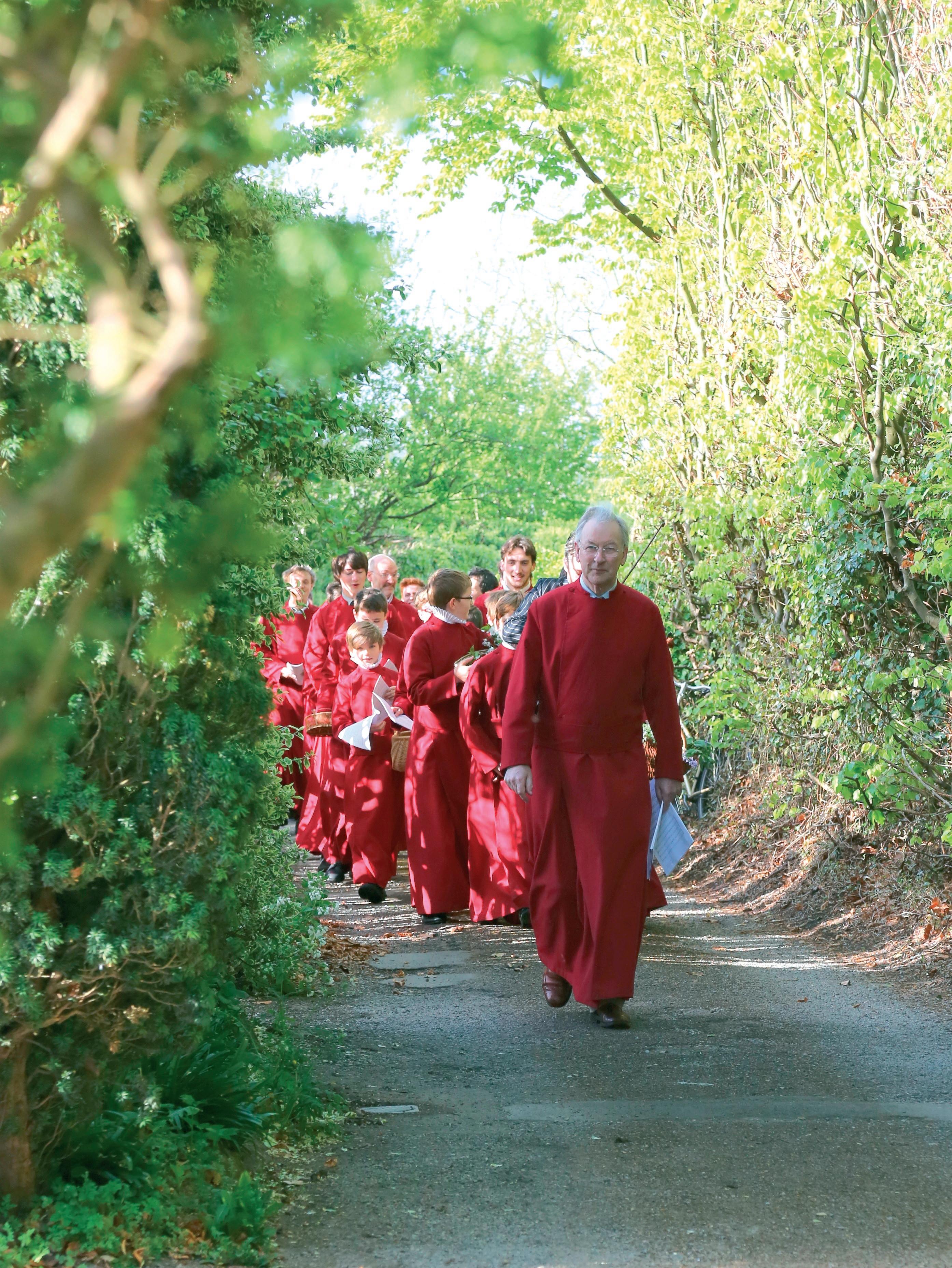
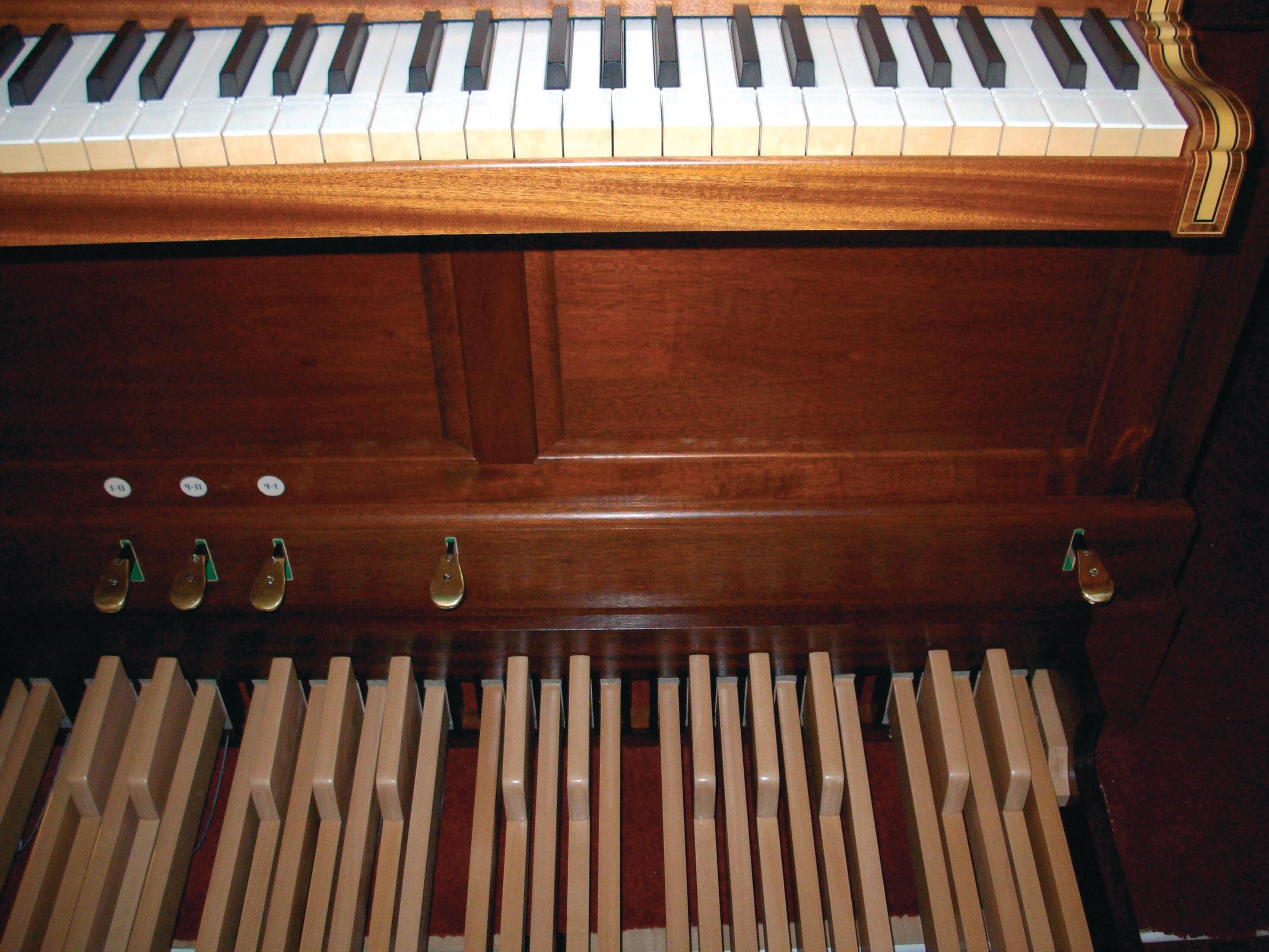
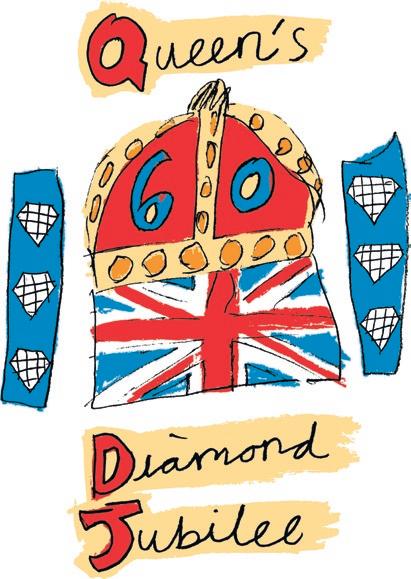

with a favourable acoustic. The Mansion House, designed by George Dance the Elder, was completed in 1752. It was built to occupy a very restricted site on what had once been a livestock market over the River Walbrook. It is now used as the Lord Mayor’s official residence and offices, and is therefore on a more domestic scale than Westminster Abbey’s Lady Chapel.
From the designer’s point of view, the more difficult of the two locations proved to be the Mansion House. Here, the organ was to be kept in the Salon, but when in use it was to be moved to the Egyptian Hall. The Salon is a large room
 The Mander organ at the Mansion House and (inset) the bands of inlay to the sides of the keys
The Mander organ at the Mansion House and (inset) the bands of inlay to the sides of the keys
subdivided by many rows of columns, the spacing of which established the width of the case. The height was restricted by the need to avoid the very large chandeliers! Space was less of a problem in the Egyptian Hall, but clearly the organ had to be moveable.
The initial design of the organ showed a higher centre section with curved roofs to the sides, but this was not well received at Westminster Abbey. Mander therefore came up with a rectangular design which turned out to be more practical, especially when accommodating some later additions. The Surveyor of the Fabric at Westminster Abbey, Ptolemy Dean, reviewed the design and asked that the Bourdon pipes at the back of the organ be enclosed; as a compromise, an opening was left in the lower part of the back panelling to expose the pipe mouths of the lowest eight notes of the Bourdon and give them sufficient room in which to speak.

It’s a small organ (1280x1785x2720mm), with 11 stops. Given this size and the restrictions on the specification, the eighteenth-century chamber organ seemed to be a suitable model for the case, and the eighteenth-century influence is also evident in the two keyboards, which are designed with short keys and no overhangs. The key cheeks (the wooden pieces which sit alongside each end of the keyboards) copy early organ profiles but, in addition, have inlays made of various coloured timbers. The inlay work is based on that on a small G P England organ of 1806 which Mander restored recently. Baumgartner, who made the keys, suggested mitring the bands of inlay to the bottom of the lower manual only. The bands run down the edge of both of the key cheeks (see photograph on opposite page) and then return at the bottom edge of the lower keys. The result is colourful and looks very smart.
The pedalboard is flat with a narrow spacing, and the pedal sticks are kept short. The result neatly fits just within the width
There is one particularly unusual feature: a Nightingale stop. John Mander had considered adding both this and a Drum stop to the organ. In July 2012 he attended the International Society of Organbuilders’ Congress in Switzerland where he heard an organ which has a Rossignol stop. On this organ the stop activated three birds, which appeared bobbing up and down at an opening in the casework. Inspired by this, it was decided to include the birds on the Nightingale stop, and a mechanism was created. The revolving birds are fixed to a fan, which is blown by wind when the stop is drawn on. In addition, the wind inflates a small bellows, which raises the birds so that they can be seen above the cornice. For the sound there is the usual arrangement of pipes inserted upside down in a container of liquid. This is mounted low down in the case for ease of access. The Thunder or Drum stop is activated by a hitch-down pedal to the bass side of the case above the pedalboard; this moves a steel trundle with a wide slotted plate, which progressively pulls on the trackers for the bottom six notes of the Pedal.
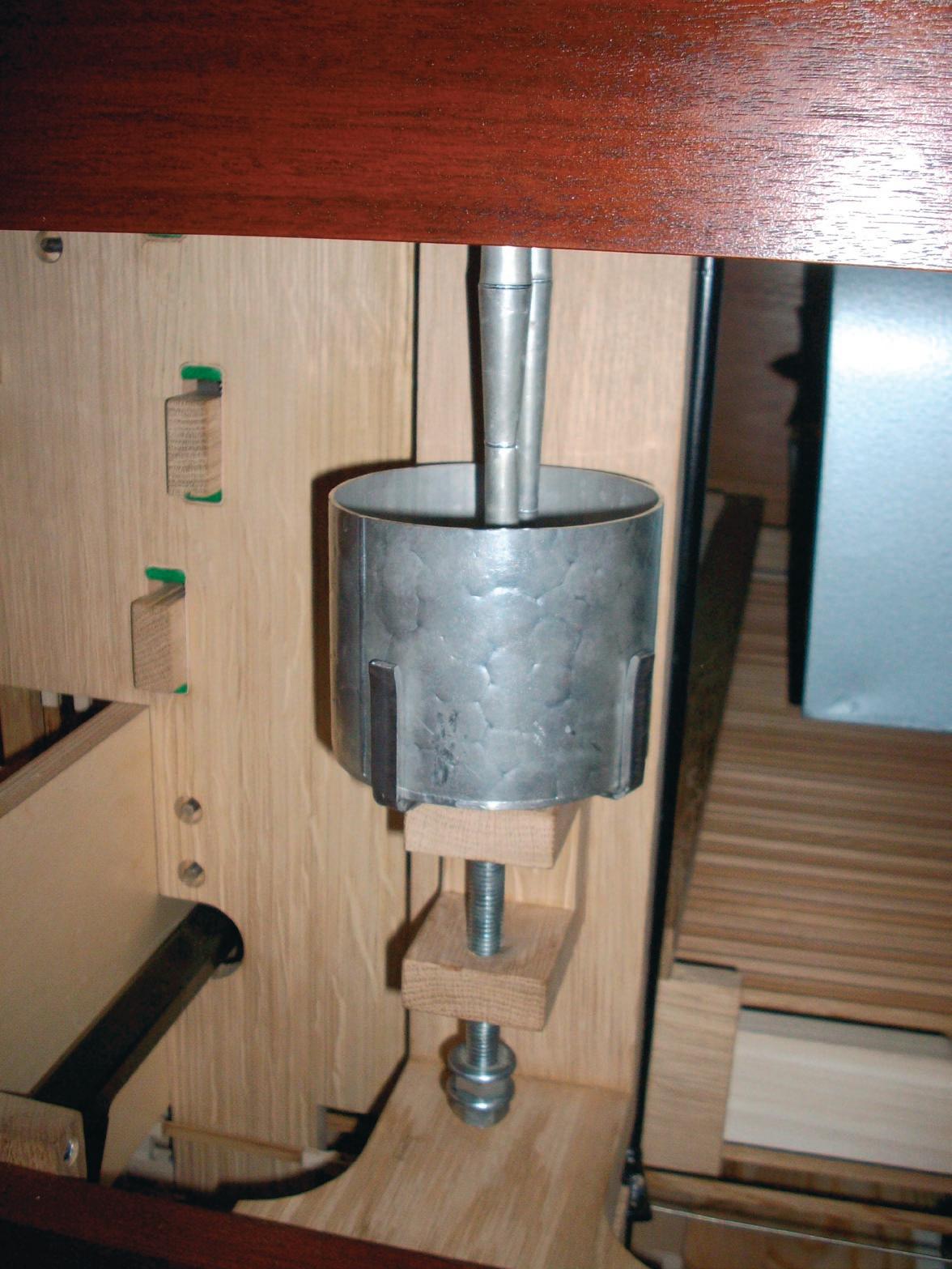
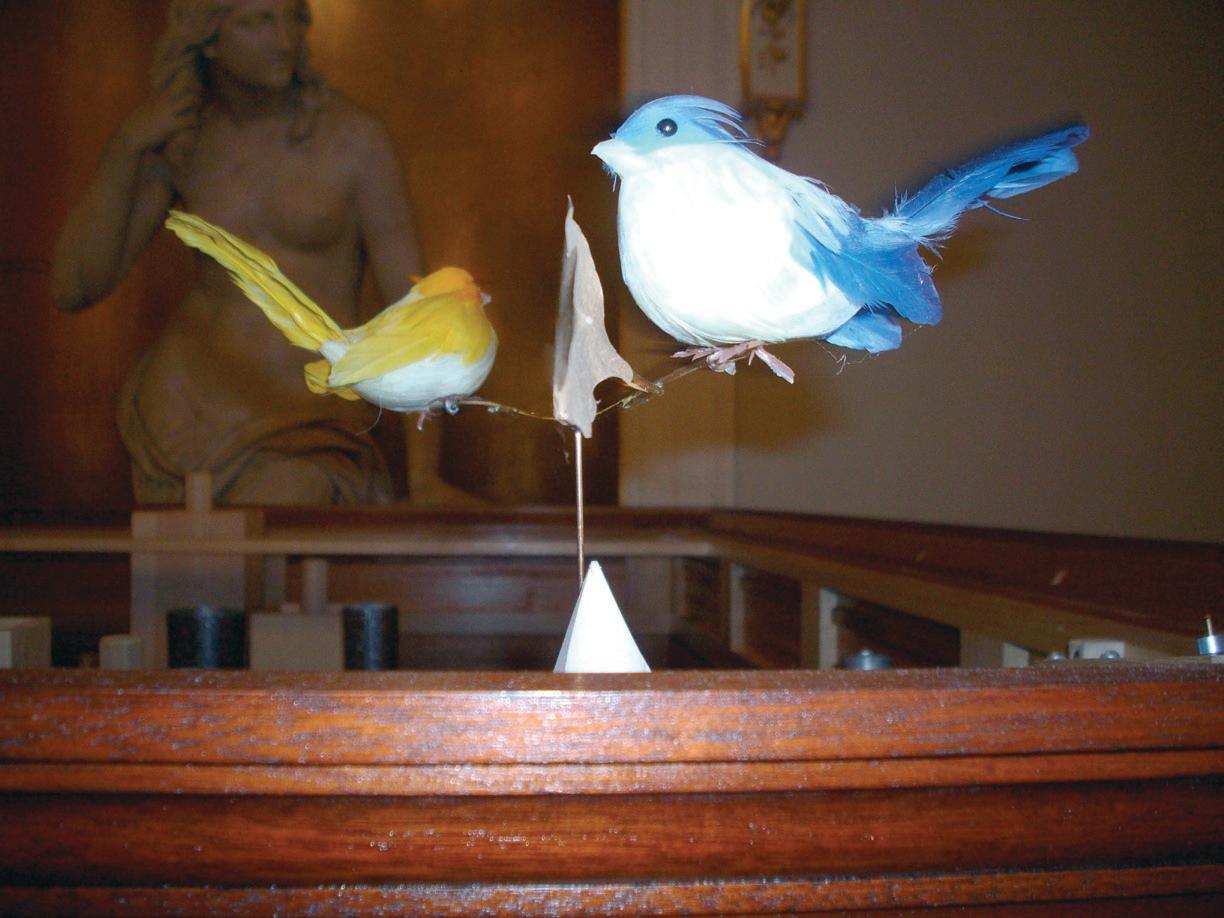
(Alderman Roger Gifford) at a special workshop concert given by William McVicker. Further recitals were given by organists of the Chapels Royal and the Royal Peculiars. All proceeds were donated to the Lord Mayor’s Appeal 2013, which aimed to secure the future for the next generation by supplying more music, lifting children out of poverty, safeguarding the environment, and protecting and enabling access to art in all its forms. The principal beneficiary of the Lord Mayor’s Appeal 2013 is the City Music Foundation, a charity established to give new opportunities to aspiring professional musicians in the early stages of their careers, both financially and through mentoring.
Playing the opening recital on the new Mander organ in the Mansion House was a real pleasure. The tone matches the elegance and character of the beautiful case. The heart of the organ, the Diapason chorus, is rich, bold and characterful. The Mixture is well balanced, adding both brightness and strength to the chorus. The Diapason is warm and forthright, and the flute is colourful and expressive.
On Manual II the Recorder is especially beautiful. The Trumpet has a lively response with a good bass which is useful in adding depth to the tutti. I played the Adagio from Mendelssohn’s Second Sonata on the Sesquialtera, which provides good colour with a rich tone in the lower register and a singing elegance in the upper register. The Chimney Flute 4 sounded a little unsteady in legato music, but it was excellent for Daquin’s The Cuckoo (which I played as an encore), having a real clarity of touch and good expression.
The Pedal Bourdon is a clever stop, able to play quietly with clarity but also support the fuller chorus in louder tuttis Inevitably the Pedal division is a little restricted -- from the player’s standpoint it would have been useful to have the Trumpet and/or other stops available separately on the pedals to give more independence to the bass line.

The action is even and responsive, giving a very expressive connection with the note. At times I found it just a little light though no doubt this is inevitable with a smaller organ. Occasionally I coupled Manual II to Manual I as this extra depth was just a little more satisfying to play with and easier to control. The Nightingale stop is very effective and enjoyable and caused quite a few chuckles! Generally the instrument is very pleasing, although the organist must make allowances for its size and historically-informed mechanical design. At 5’8” -- average height for a man in the 21st century -- I did find the drawstops and the drum effect lever somewhat difficult to reach comfortably while playing.
Overall, the organ belies its small specification; it was a joy to play and easy to make music on. There was singing tone in the Thiman, for instance, and a transparency in the flutes which was very engaging. The organ was at its best playing Bach and Handel, and the Mendelssohn (Sonata No. 2) was also very convincing. Congratulations on the wonderful craftsmanship and artistry to all who were involved in the making of this beautiful instrument.
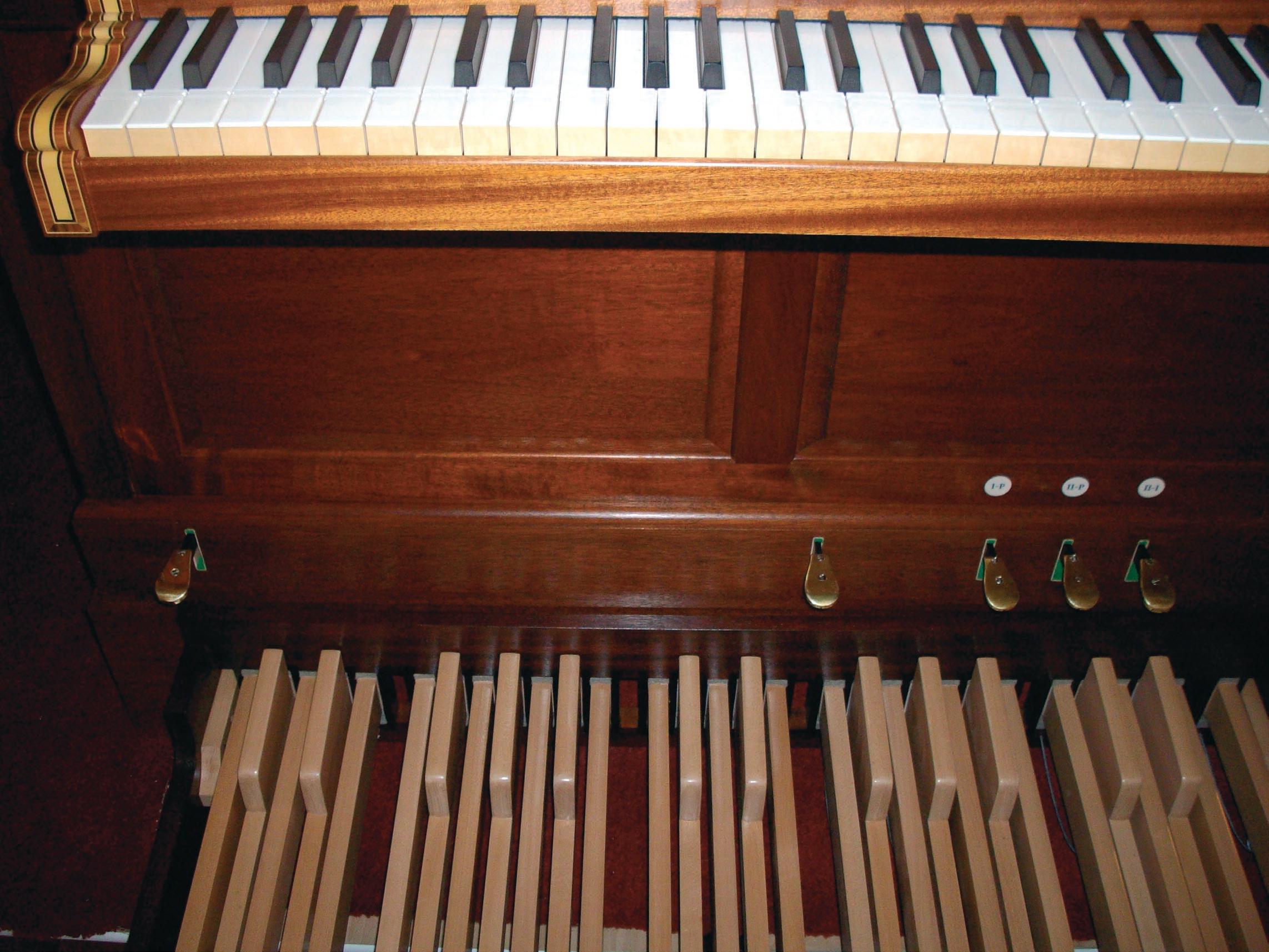
Overall, the organ belies its small specification; it was a joy to play and easy to make music on.Huw Williams is Sub-Organist at Her Majesty’s Chapel Royal, St James’s Palace, London. Lower console area showing brass toe pedals for the playing aids
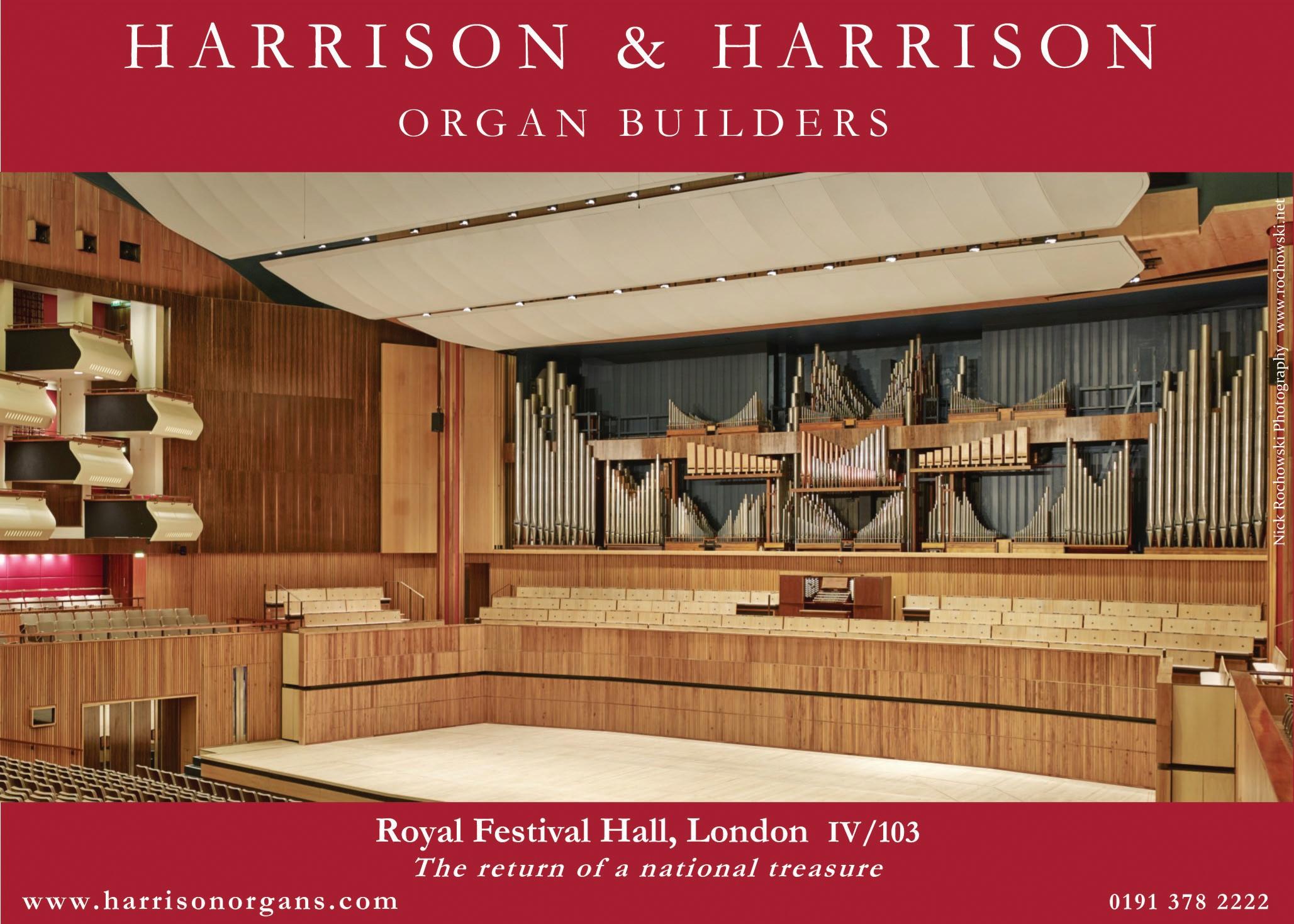


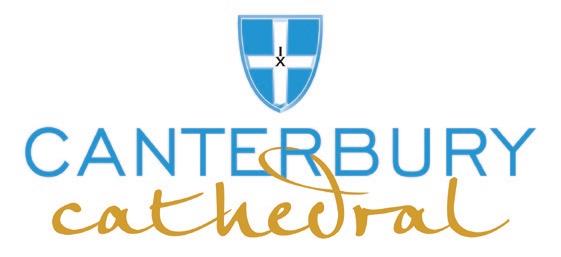
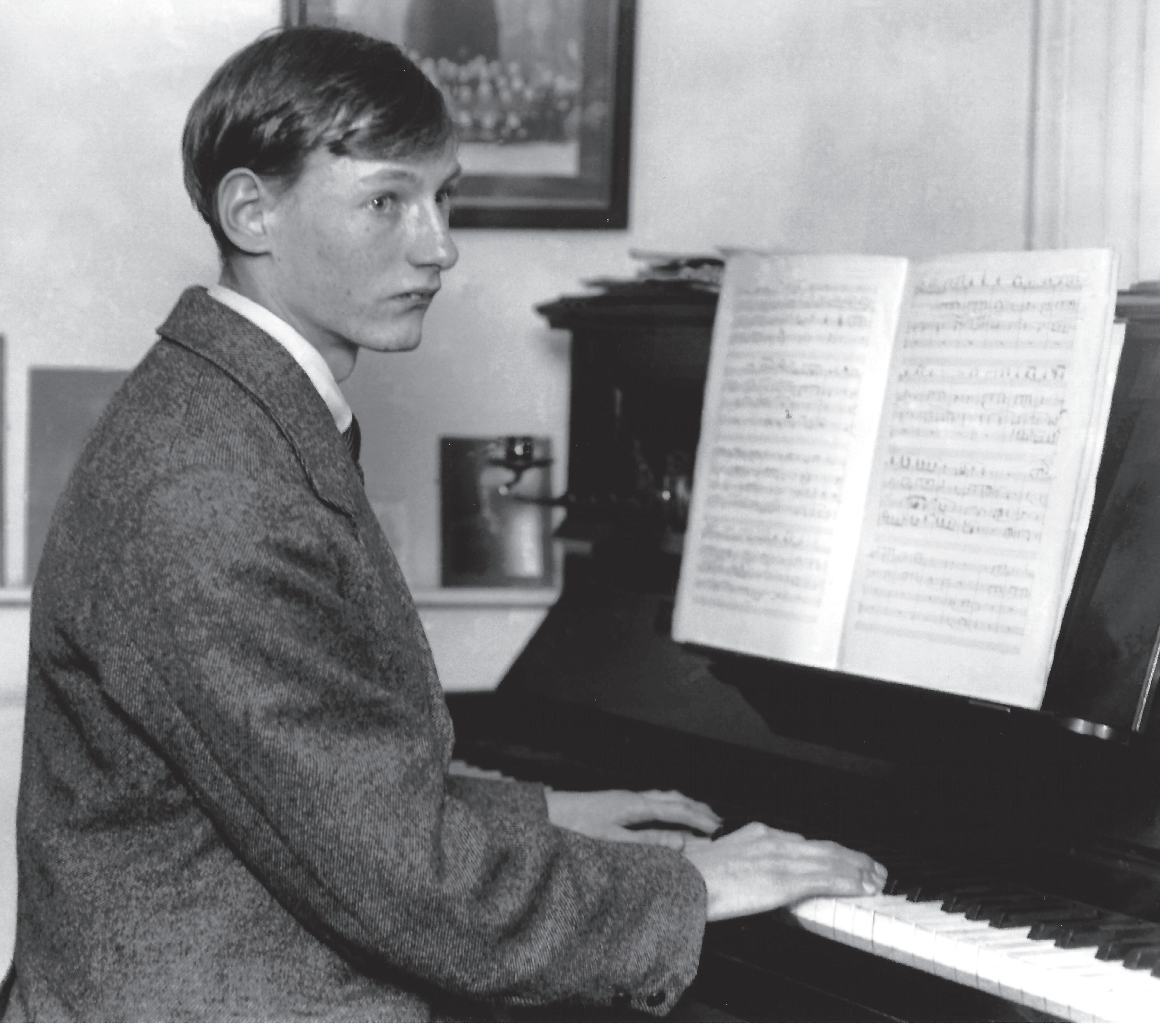
There can be few organ lofts or organists’ music cases which have not, over the past eighty odd years, been graced by one or more volumes of Percy Whitlock’s attractive music. The various collections of shorter pieces have withstood the vagaries of fashion particularly well, perhaps because the wide-ranging usefulness of these organ miniatures means that they serve just as happily as voluntaries as recital items.
Whitlock’s sacred choral music has, on balance, fared less well. How often is his Solemn Te Deum performed these days, despite its fine construction and strong motivic development? The Three Introits, however, are regularly sung, making highly effective Communion motets, with their blend of sensitive word-setting, warm textures and gentle modulations. The early Jesu, grant me this, I pray and the Magnificat and Nunc Dimittis – Fauxbourdons also make regular appearances on the service lists of those Anglophone ‘quires and places where they sing’.
Whitlock was, of course, writing for a fairly crowded market. Church choir libraries were already well filled with copious amounts of Bairstow, Boyce, Ireland, Purcell, Stainer, Stanford, Walmisley, S S Wesley, Charles Wood, and even early Howells (one hopes!). Whitlock’s earliest publications were exclusively choral: a set of canticles and a Motet for a Saint’s Day for SPCK, and a host of Anglican canticles and anthems published in the late ’20s and early ’30s by OUP, following in the footsteps of his ‘musical father’, Charles Hylton Stewart, who had done so much to train and encourage the youngster during his tenure as Organist of Rochester Cathedral from 1916-30. Hubert Foss (OUP’s founding music-department manager) had first refusal on anything Whitlock composed, taking several important orchestral scores (in manuscript) into the Hire Library, in addition to the longer recital organ works such as the Two Fantasie Chorals and the magnificent Organ Sonata (Whitlock’s longest composition). By the late 1960s these last pieces had fallen out of print. They were rescued from neglect in the early 1980s through the support of the Percy Whitlock Trust, the brainchild of Robert Gower, which – since 1983 – has done so much to restore Whitlock’s musical reputation by bringing little-known compositions into print and by subsidising recordings, concerts, organ scholarships and bursaries, exhibitions and the like.
The Whitlock Trust’s first patron was Percy’s widow, Edna (1901-93), who outlived her husband by 47 years. The Trust
was fortunate in having the late Christopher Dearnley, Organist of St Paul’s Cathedral, as its chairman; his energy and enthusiasm ensured that the Trust was put on a firm footing. The Trust has also been fortunate in having had the active support of so many fine musicians over the years, some – like Leslie Barnard – who knew the composer well, as well as those of the younger generations who recognised in his music a kindred spirit and began to promote it through broadcasts, recitals and recordings.
Long-lost manuscripts resurfaced. Many of them have subsequently been lodged in the British Library. The rediscovery of Whitlock’s personal diaries in 1990 was another major breakthrough, especially to the present author who, since his undergraduate days, had pondered the possibility of writing a book on Whitlock. This volume eventually appeared in 1998 and was launched at the May Festival held each year in St Stephen’s Church, Bournemouth, where Whitlock served as Director of Music from 1930-5 (and indeed there is an annual Whitlock Recital). Further musicological and editorial work produced a volume of the surviving piano and harpsichord music (published by Animus), and a set of Four Transcriptions for Organ (made by the present author) from original orchestral scores, as well as a Percy Whitlock Companion, which gathered together much of his surviving correspondence and organrelated articles for the Musical Times and Musical Opinion
Whitlock’s music continued to appear in broadcast recitals by (among others) George Thalben Ball, Francis Jackson, Philip Dore, Ernest Maynard, Douglas Hawkridge and Roger Fisher, providing a welcome extra trickle of PRS-derived income for Edna Whitlock. The tide seemed to turn decisively for the better in the late 1970s with the release of Graham Barber’s pioneering Sonata recording from Coventry Cathedral for Vista, and Robert Gower’s all-Whitlock Wealden Studios disc from St Stephen’s Church, Bournemouth, which included both Fantasie Chorals, played on the same instrument for which they had been conceived.
All three of Whitlock’s major organ works now became available in authoritative stereo recordings. The advent of the compact disc released a flood of new digital recordings, including Jennifer Bate’s recording of The Plymouth Suite for Hyperion, and Roderick Elms’ all-Whitlock disc from Rugby School chapel. Graham Barber went on to record the complete organ works for Priory Records over three CDs, whilst Roger Sayer guided Rochester Cathedral Choir through a wide
selection of the sacred choral music, including the hauntingly simple setting of O Gladsome Light, composed whilst Percy was still a boy treble at Rochester.
Bournemouth’s Food Control Office, as well as fulfilling night-time fire-watching duties.
All of this took its toll. In his last years he aged rapidly, suffering from increasingly high blood pressure and a ‘groggy’ lung. His death, just a month short of his forty-third birthday, came on 1 May 1946 (the same day as Bairstow). To his RCM contemporary, Robert Featherstone, Whitlock was a ‘musician and composer of rare quality’; to his friend Leslie Barnard, ‘a composer of very real merit’. Felix Aprahamian considered him the ‘Roger Quilter of the organ world’ – a rather limited description, perhaps, given the range and scale of his musical expression. Certainly, there is a great deal which is song-like about Whitlock’s melodic gift. He also distilled much from Handel (the lovely Poem for organ and orchestra of 1937 is a homage to the Baroque master’s celebrated Largo, which Whitlock recorded with the Bournemouth Orchestra under Godfrey in 1934 -- his only commercial recording with them), as well as Delius, Elgar, Rheinberger and Rachmaninov, whose ‘gorgeous’ Second Symphony bowled him over and provided the stimulus for his own organ Sonata
Whereas the financing of a solo organ or choral recording is usually readily achievable, subsidising orchestral recordings takes one into a higher and tougher league. It was, therefore, a great boon when the opportunity arose to record Whitlock’s lighter orchestral scores in Dublin with the RTÉ Concert Orchestra, conducted by the indefatigable Gavin Sutherland. This disc (now on the Naxos label) revealed not just how skilled Whitlock was at capturing a mood or a scene but how assured he was as an orchestrator.
From the late 1930s Whitlock often adopted the nom-de-plume Kenneth Lark for his non-organ music. Having relinquished (with great relief) his church position at the end of 1935, he relished the wider opportunities afforded him in his new fulltime position as Bournemouth’s Municipal Organist. From his perch at the console of the Compton organ, situated to the side of the orchestra pit in the Bournemouth Pavilion, he was able to spend many hours absorbing a wide range of music. Although he never broadcast as a theatre organist (referring to them as ‘denizens of the underworld’), he venerated such giants as Sidney Torch and the mighty Quentin Maclean. His fruitful association with Bournemouth’s Municipal Orchestra led to several commissions from the orchestra’s first three conductors, Sir Dan Godfrey, Richard Austin* and Montague Birch. Whitlock also played at various times for Dr Adrian Boult, Dr Malcolm Sargent, Sir John Barbirolli, Sir Thomas Beecham and Sir Henry Wood, who invited him to the Proms in 1942 as soloist in Handel’s Organ Concerto in B flat major. This performance, together with some other 120 BBC broadcasts (60 of which were solo recitals) meant that Whitlock’s name as a player stretched far and wide.
Quite how he managed to fit all of this into a busy life is still a puzzle. Despite a history of delicate health (which included a spell in Midhurst’s TB sanatorium in 1928), Whitlock found time to write a great deal of musical journalism (including three years as music critic for the Bournemouth Daily Echo), to teach privately and to collect and restore clocks. Much energy was spent on the construction from Meccano of a multipurpose chronometer and the installation of a 3-manual pipe organ in his Bournemouth home. Declared unfit for military duty, he served for the first two years of the war in
Percy Whitlock had a versatile and essentially gentle musical spirit. Just a few bars of his music can summon up the ambience of a lofty English parish church or cathedral or the ozone-laden salty air of the seaside. Such versatility is a rare gift.
*Whitlock can be seen briefly playing with the Municipal Orchestra conducted by Austin in six short musical features made by the Pathé Film Company in 1937. These have been posted on YouTube.
Programme to include:
Bach B Minor Mass
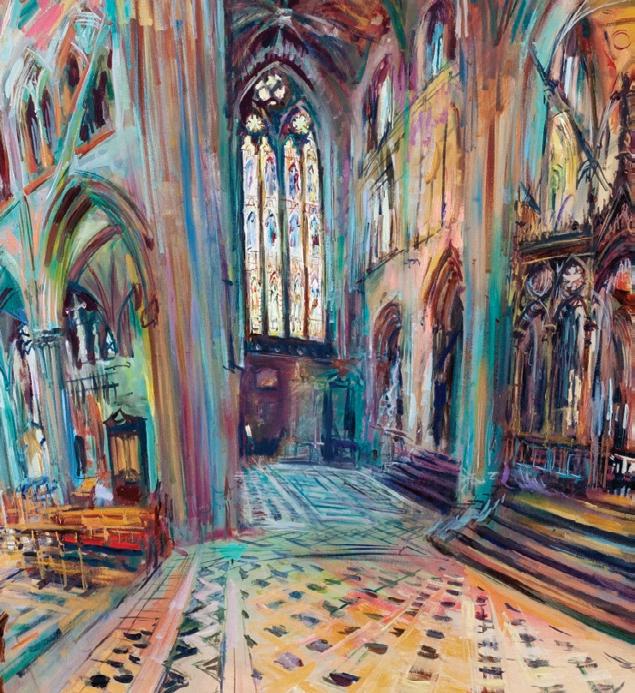
Britten War Requiem
Elgar The Apostles
Mahler Symphony No 2
Rasch A Foreign Field (World Premiere)
Guest artists:
Sarah Connolly
Håkan Hardenberger
Tenebrae
The King’s Singers
John Wilson
Percy Whitlock had a versatile and essentially gentle musical spirit. Just a few bars of his music can summon up the ambience of a lofty English parish church or cathedral or the ozone-laden salty air of the seaside. Such versatility is a rare gift.
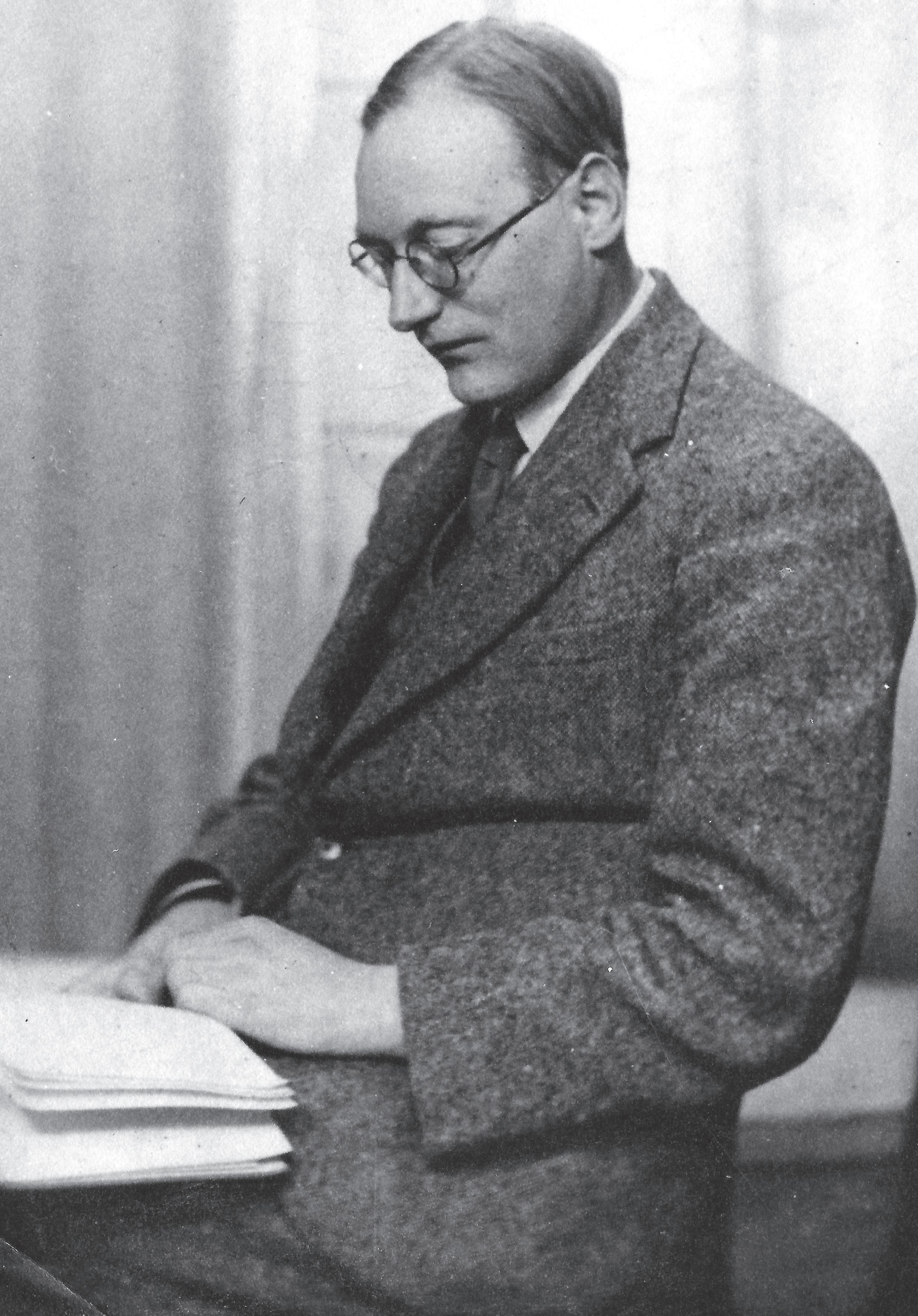
Until 2008, there was one sung service a week in the chapel, and the choir was directed by the organ scholar. The success of the music over these years is partly attributable to a partnership between Organ Scholar and Chaplain; the two chaplains who have served the college since 1963 are both fine musicians and experienced organists. Then in 2006 Peter Phillips, already known to the college through his regular visits with The Tallis Scholars, made the suggestion that a chapel of the significance and size of Merton’s should have a more developed choral scene. The then warden, Dame Jessica Rawson, and the chaplain, the Revd Dr Simon Jones, were receptive to this idea and the college agreed to fundraise to endow eighteen choral scholarships along with the posts that Peter Phillips and I now hold. In October 2008, the new college choir sang its first services (initially on Wednesday and Sunday evenings) and in 2012 I left Tewkesbury and Dean Close to work full-time at Merton, which is when the pattern of singing on Sunday, Tuesday and Thursday (with a termly Compline on Mondays) was established. In addition to leading the worship in the chapel, the choir undertakes the usual activities of touring (Sweden and the USA this year), recording (for Delphian) and broadcasting (most recently on and Radio 3’s Britten 100th
The number of applicants for choral scholarships has steadily risen since 2008. Visits by the National Youth Choir and the Eton Choral Courses along with various open days have inspired potential candidates to consider Merton, and now our choir includes a number of former boy and girl cathedral
anniversary of the college has been on the horizon since I started working at Merton, and it has proved to be a tremendous opportunity for the choir. At the heart of the , the brainchild of former
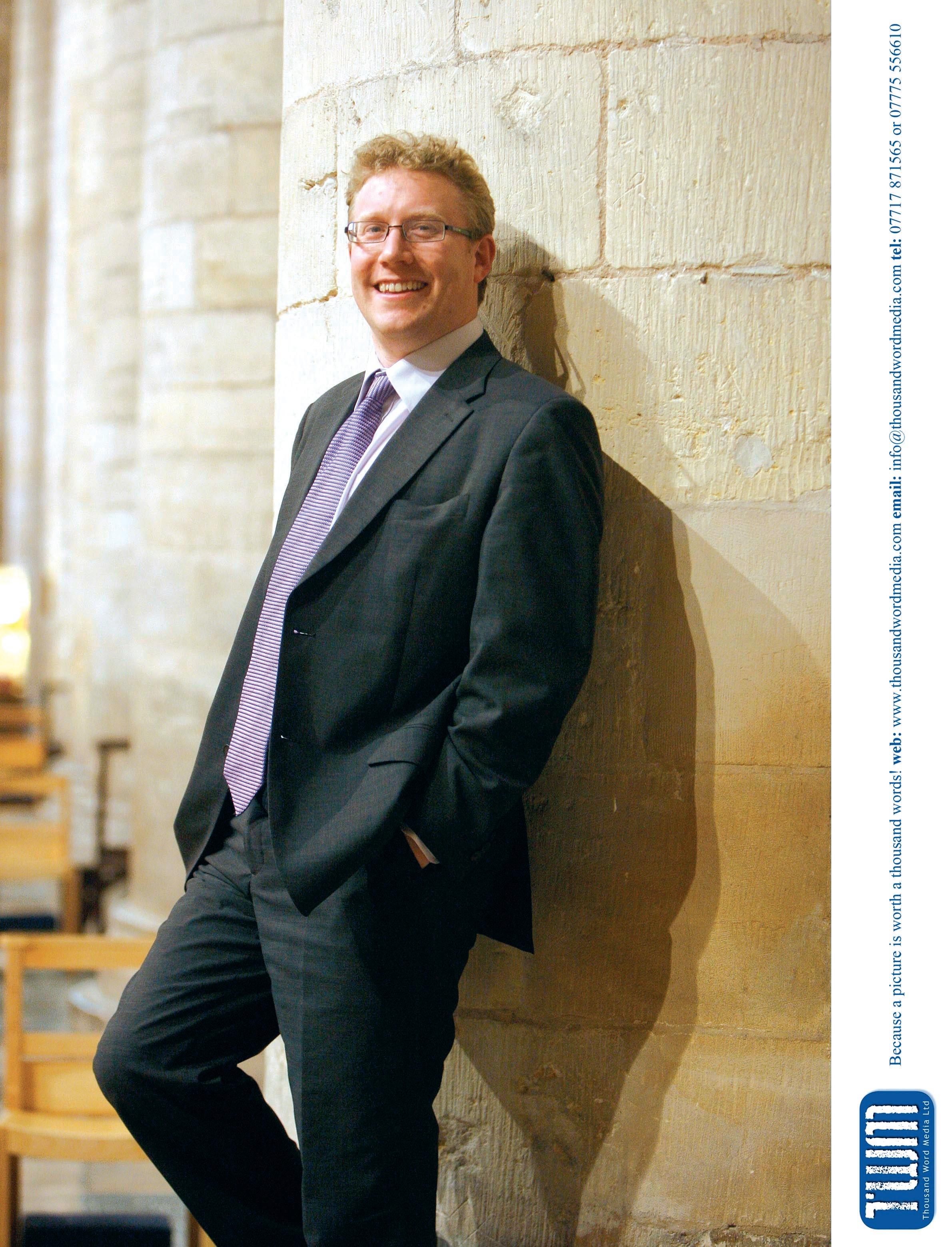
Many of the leading composers of the day are represented in
Organ Scholar and BBC producer, Michael Emery. The idea of a collection of choral music is not a new one: early Tudor anthologies, pre-eminently the late fifteenth-century Eton Choirbook, were substantial musical monuments in their own right and also created a rich legacy that defined the characteristic sound and style of English church music. More recently, the coronation of HM The Queen in 1953 inspired the collection A Garland for The Queen. Ten composers –including Vaughan Williams, Howells, and Mertonian Lennox Berkeley – contributed mainly secular songs for mixed choir. For the sixtieth anniversary of The Queen’s accession to the throne, Peter Maxwell Davies and Robert Ponsonby had the idea of presenting Choirbook for The Queen. This collection of 44 pieces, including 11 commissions, not only celebrates the reign of Queen Elizabeth but also the British choral tradition. Merton College Choir was one of eighty cathedral and collegiate choirs asked to sing from this collection during the course of 2012.
Many of the leading composers of the day are represented in The Merton Choirbook They include Sir Harrison Birtwistle, who has set a text by Sir Geoffrey Hill, Oxford’s Professor of Poetry, James MacMillan and Jonathan Dove. Within the collection there are some particularly interesting groups of pieces. Four female composers, including Judith Weir, have each set one of the Marian antiphons; seven composers have each written one of the Advent antiphons, with John Tavener and Cecilia McDowall heading the list. Music for Choral Evensong is also included within the Choirbook, with Preces and Responses by Matthew Martin, a hymn by John Joubert, and numerous new Anglican chants from composers who principally write for the church. Peter Moger, Precentor of York Minster and an Old Mertonian, has composed responsorial chants for all
of the psalms set for the college Eucharists throughout 2014. The evening canticles appear both in Latin and in English, and a number of anthems suitable for the different seasons of the liturgical calendar make this collection something that we will draw on through the year. The new Dobson organ has inspired some of the music, including David Briggs’s Messe Solennelle and Chorale Preludes by John Caldwell and Gabriel Jackson, composed as part of William Whitehead’s Orgelbüchlein Project
Another distinguishing feature of the Choirbook is the inclusion of composers from further afield. Reflecting the popularity of choral music from the Baltic States, Rihards Dubra and Ēriks Ešenvalds have both been commissioned by the college, as has Norwegian composer Ola Gjeilo, whose setting of Northern Lights has been widely performed. James Lavino, a Native American composer renowned for his film scores, has set Beati quorum via and Richard Pantcheff, currently based in South Africa, has included various African musical
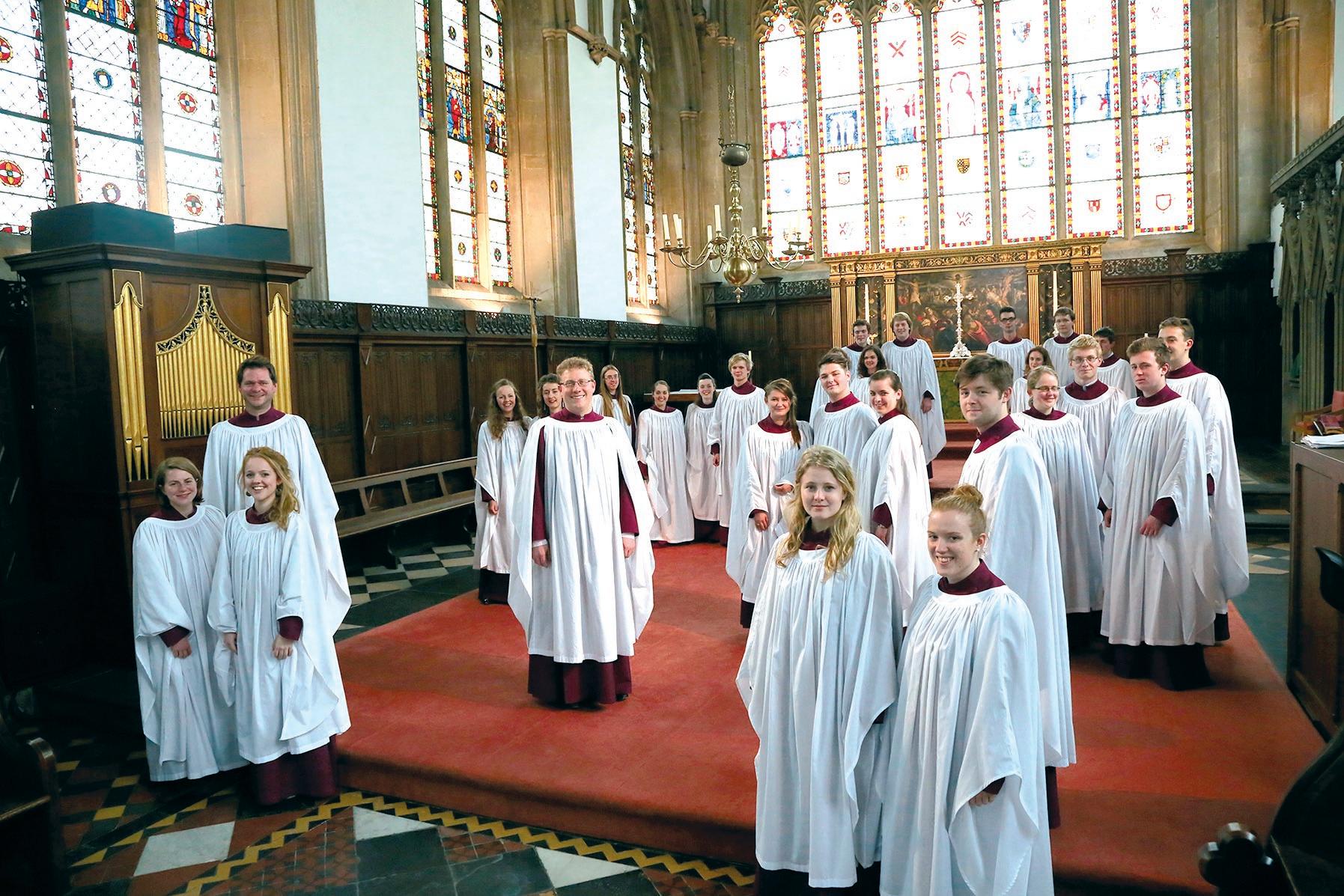
The splendid organ case is an impressive tribute to the skills of Lynn Dobson and his colleagues. A particular feature is the Zimbelstern (Cymbal Star), which shines at the top of the case.Merton Choir Photo: K T Bruce
influences in his contribution, a setting of the Jubilate in Zulu: Ihubo Ikhulu. Although the Choirbook is principally a liturgical collection, Gabriel Jackson’s The Passion of the Lord is more likely to be performed in a concert than a service. Lasting an hour and scored for instruments, soloists and chorus, this substantial addition to the repertoire of music for Passiontide has a libretto devised by Merton’s chaplain, Simon Jones. It includes texts by Mertonian poets alongside passages from the Gospels and the first performance will be at the Passiontide at Merton festival on 4 April 2014.
Very much linked in with the founding of the new choir and the 750th anniversary was the decision to replace the 1960s’ J W Walker organ, an instrument that had become increasingly unreliable over its last decade in the chapel. That the tonal scheme of the organ was principally designed for the performance of baroque organ music is now considered a flaw, given that the college choir sings from a broader repertoire, and a large congregation now regularly needs accompanying by an organ with much more presence.

After a thorough search, the college commissioned Dobson Pipe Organ Builders, of Lake City, Iowa, to build the new instrument. A brief tour of the USA, to hear and play some
eight of their instruments, revealed an organ builder whose warmth of tonal voicing and quality of external design are exceptional. Lynn Dobson and his colleagues visited the college on a number of occasions to hear the choir and congregation and gain an impression of how the new instrument needed to speak effectively from its position in the ante-chapel and provide the range of colours required for the accompaniment of choral singing.
Dobson, in consultation with me and with Paul Hale, the college’s organ consultant, designed a 3-manual organ of 43 stops housed in a case of American white oak. Placed against the west wall of the ante-chapel, the organ’s Great, Choir and Pedal divisions are located at a level immediately above the console, with the Swell division occupying the upper part of the case. The attached console is fitted with mechanical key action to slider soundboards. The stop action is electric, and has a combination action with 256 levels of memory.
Lynn Dobson writes of his design: ‘I believe the organ should look like an instrument from our time and not attempt to look antique. The organ should fit into its space in a handsome proportional relationship. Finally, the organ should visually take enough cues from its surroundings that it feels like a
natural part of the whole experience of being in the historic chapel. It should look like it belongs in its setting.’
The splendid organ case is an impressive tribute to the skills of Lynn Dobson and his colleagues. A particular feature is the Zimbelstern (Cymbal Star), which shines at the top of the case. The organist, on pulling this stop, brings on a peal of five bells, adding a little aural and visual splendour to a carol service or to the conclusion of an organ recital. The inaugural concert is to be played by John Scott on 26 April 2014, and other recitalists in the opening series include James O’Donnell, Daniel Hyde and Clive Driskill-Smith.
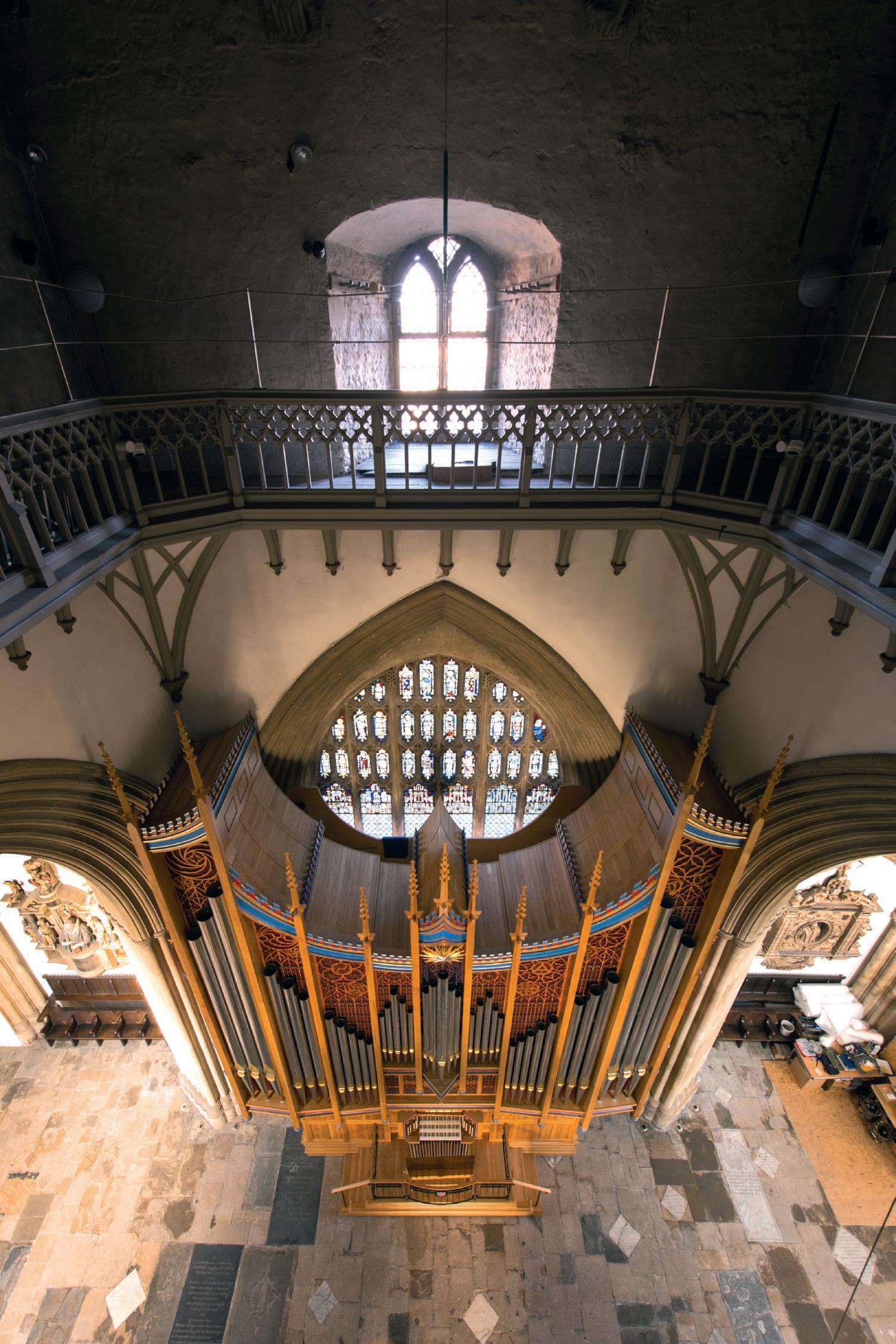
What of the other musical celebrations? On 1 January 2014, former organ scholar David Warwick led a team of bell ringers in a special peal, devised to celebrate not just the New Year but also the 750th anniversary. The college’s 333-year-old bells rang out for five hours, marking the start of a year of celebrations. On 1 March, the college choir, the Kodaly Choir (the college’s non-auditioning chorus), and the Oxford Bach Choir joined with the Oxford Philomusica in The Sheldonian Theatre for Elgar’s The Dream of Gerontius. The fifth Passiontide at Merton festival ran between 4-6 April when, in addition to the première of the Gabriel Jackson Passion, Emma Kirkby returned to the chapel she sang in as a student for a performance of Bach’s St Matthew Passion. Other concerts included Duruflé’s Requiem in Merton (9 May) and Gloucester Cathedral (8 July) as part of the Cheltenham Music Festival. In the chapel on St Cecilia’s Day there will be the first performance of Harrison Birtwistle’s new choral work.
All are welcome at services in the college chapel and details can be found on the website at www.merton.ox.ac.uk

Please come and visit us in this very special year!
Benjamin Nicholas is Reed Rubin Organist and Director of Music at Merton College, Oxford. He was previously Director of Tewkesbury Abbey Schola Cantorum.
59th Festival of Church Music within the Liturgy at the Priory Church of St Mary Edington (near Westbury in Wiltshire)
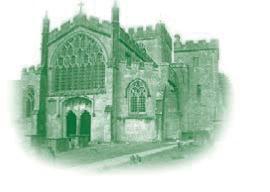
I wasn’t a chorister, and often wish I had that experience as part of my early development. Sadly, such opportunities are scarce in Canada, where I grew up. I think the skills I could have garnered from it would have been a great gift, and although I’ve managed so far without having had that background, the lack has undoubtedly contributed in some way to who I am today.
I fell into the organ when I was about sixteen years old, and didn’t take it very seriously at the time. My family’s parish church needed an organist to fill in occasionally, and I played the piano, so it was just a matter of practising the pedal parts of hymns until they were embedded in my muscle memory. I applied for a grant from the Halifax centre of the Royal Canadian College of Organists, which offered some lessons. Then I decided that I wanted to do a university degree in composition, and McGill requires that all students who study composition play an instrument. I thought it would be a good idea to use organ as my instrument as there would surely be fewer organists than pianists and I would therefore stand a better chance! My plan was successful.
Partway through my first year of lessons, my teacher, John Grew, convinced me to apply to do a double major in organ and composition. It wasn’t until then that I actually became serious about playing the organ and getting good. My composing has since become virtually non-existent!
Education details:
BMus, McGill University (2005-8)
MMus, McGill University (2007-9)
Career details to date:
2007-9: Assistant Organist, Christ Church Cathedral, Montreal, Quebec
2009-10: Organ Scholar, Truro Cathedral
2010-11: Organ Scholar, St Paul’s Cathedral, London
2011-12: Assistant Organist, Church of St Mary-Magdalene, Newark-on-Trent
2012-present: Assistant Organist, St Mary’s Episcopal Cathedral, Edinburgh

2012-present: College Organist, Fettes College, Edinburgh
I moved to the UK originally in 2009 to take up the organ scholarship at Truro Cathedral. I thought at the time that this might be a temporary move in order to gain experience in choral accompanying and to soak up the rhythm of daily choral worship, something that’s scarce in Canada. Since then, for both professional and personal reasons, I’ve stayed in this country and am now happily settled in Edinburgh until I get the itch to return.
You won first prize at the Concours d’Orgue de Québec and were finalist in the Prix d’Europe and the RCCO National Organ Competition. Do you think prizes make a difference in an organist’s career?
I think prizes look good on a CV and can help organists to secure auditions and concerts, if that’s what’s required. But at the end of the day, we’re only as good as our last concert or Evensong. I think the experience of competing is just as valuable and is excellent mental training, which after all is at least half the game. Prizes are the icing on the cake.
Are there many similarities between your position now and when you were Assistant Organist at Christ Church in Montreal?
The scope of the repertoire is similar, but scaled up severalfold. At Christ Church Cathedral we did two services a week, both on a Sunday. Edinburgh runs a full complement of daily services and still manages not to repeat itself (much) within eighteen months. Of course, this is what our choristers need to keep their reading fluent and to keep their minds engaged.
Patrick Wedd, Director of Music at Christ Church, was always very keen to introduce new pieces into the repertoire, especially contemporary ones, and I’ve enjoyed the challenge of learning these. Duncan Ferguson at Edinburgh likes to push the choir and myself in the same way, which I enjoy immensely.
I think my time at the cathedral in Montreal was -- broadly speaking -- a training ground for me, comparable possibly to an organ scholarship, whereas my position now is more established and comes with more responsibilities and more pressures.
What organ pieces have you been inspired to take up recently and why?
I recently learned a charming piece by Cecilia McDowall entitled Church bells beyond the stars (inspired by one of George Herbert’s poems). This was commissioned by the Edinburgh Society of Organists for its centenary in 2013. I wanted to learn something with a local connection, and it was an exciting bonus that the ink was barely dry when I got the copy.
I’ve also decided to get Bach’s Sonatas back into my regular diet, as they were when I studied with John Grew. I’ve started by re-learning No. 3, and will hopefully get through them all in the next year or so...
How much conducting do you do?
As it stands I conduct Evensong roughly once every two weeks, and always really enjoy it when I do. Because of my concurrent job as Organist at Fettes College, I’m not generally available to take choir practices or do probationer training in the mornings, something I wish I could do more of.
What was the last CD you bought?
iTunes download actually! Jeff Buckley’s Grace, an album I listened to a lot in my late teens, but had since lost.
What was the last recording you were working on?
John Sheppard: Sacred Choral Music with the Choir of St Mary’s Cathedral Edinburgh (Delphian, see review on p61). Though I can’t pretend there was much organ playing involved...
What is your
a) favourite organ to play?
I tend to get passionate about things the more time I spend with them. The Willis I play every day is quickly becoming my favourite, though St Paul’s Cathedral is up there too.
b) favourite building?
The Museum of Natural History in London. Built to last. There’s something really charming about the colour of the stone as well.
c) favourite anthem?
Stainer I saw the Lord. For the final section.
d) favourite set of canticles?
Changes all the time. Right now, Leighton Second Service, but only because we’ve done it recently.
e) favourite psalm and accompanying chants?
Psalm 107 to Bairstow chants.
When was your most recent organ recital? Which pieces did you include?
My last recital was in late March in St Paul’s Cathedral, London, at which I played a programme of Bach.
Have you played for an event or recital that stands out as a great moment?
First times tend to be memorable to me. So the first time I played a big concert in Montreal with a screen projector stands out, as well as my first radio broadcast of BBC Choral Evensong this past summer.
How do you cope with nerves?
I think the trick for me is knowing myself and my nerves, how they work, and what’s going to set them off. I know that one of the first things I lose when I’m very nervous is my ability to wing it. So for me, as is the case I think for many cathedral organists, the key is to be very prepared. This means practising. A lot. If I’ve done my preparation, then I have the confidence to know that my nerves generally won’t cause problems. My best performances have been the ones where I’ve taught myself the notes so thoroughly that I can simply sit back and enjoy the music as a listener.
I’ve recently been re-reading The Inner Game of Tennis by Timothy Gallwey, and am finding lots of good nuggets in there as well.
What are your hobbies?
Cooking, swimming, running and craft beer.
Would you recommend life as an organist?
My experience of life as an organist is necessarily different from anyone else’s, but the more time I spend with this life, the more I get comfortable with it and enjoy it. I couldn’t imagine myself doing anything else just now, so I guess that’s a good sign.
What are the drawbacks?
By and large I find my work very fulfilling. However, one drawback may be the anti-social hours (evening practice) this can be wearing in the lead-up to holidays. But usually after a week off I’m ready to go again. I suspect the job of daily service playing has a shelf life for most people, though, as the case may be for me. But at the moment, I find it incredibly enjoyable and don’t want to live without it for the foreseeable future.
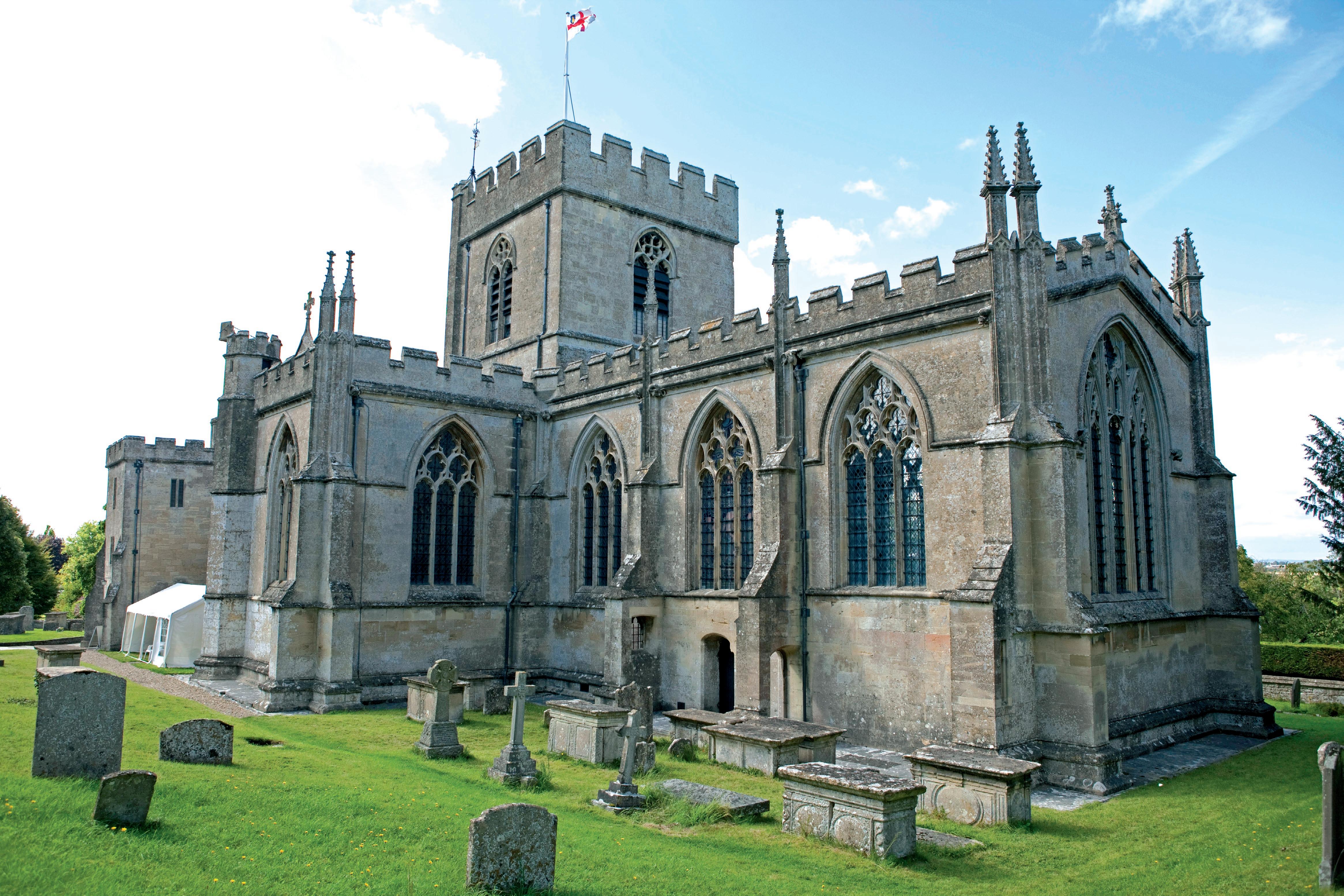 Edington Priory
Edington Priory



Iam a great believer in recycling rubbish, although I am really not a believer in recycling sermons. Unlike other rubbish, sermons should be crafted afresh for every new encounter with the divine, with this congregation, in this church, in this moment. However, in a brief abandonment of my principles, this is an adaptation of a sermon I have preached before.
The occasion was the Feast of St Cecilia; the place St Paul’s Cathedral; and the date was 22nd November 2006, when the annual St Cecilia’s Day sermon was to be preached -- by me. The Roman martyr, St Cecilia, the patron saint of music, was the theme of the sermon, and I also wanted to bring something of Salisbury to my reflection on the music at St Paul’s. Sermons don’t always stay in the memory, even of those who preach them, but this one has stayed in mine, not least because it is the only sermon of mine in which I sang from the pulpit – which seemed appropriate on St Cecilia’s Day.
‘Lord, have mercy’ (Kyrie eleison) would have often been on the lips of the seventeenth-century poet for whom we in Salisbury have a special affection, George Herbert, who is commemorated in Edington also, for it is here that he married Jane Danvers. On the right of the reredos behind the Edington high altar is a carving of Herbert carrying not just the scriptures but a lute as well, for he was not only a priest, pastor and poet but was also a musician. So embedded was music in the man that the very shape of his verse, and its variety, reflects musical form. Take his clever yet simple reflection on the words of my text, ‘Lord have mercy’, in his poem Sin’s Round
A round, as we all know, is a musical form -- a canon – through which a single melody is harmonised by the expedient of introducing two, three or more voices singing the same phrase but at later intervals. And round and round it goes: not knowing when to stop or how. Like sin: says Herbert. We are caught in a never-ending circle of sin. And he makes the point of our inescapable treadmill by beginning each of his three verses – devoted to sins of thought, word and deed – with the last line of the previous verse. And when he comes to the last line of the whole poem: ‘Sorry I am, my God, sorry I am’, we find that we have come full circle, and off we go again, condemned to commit sin’s round:

Sorry I am, my God, sorry I am, That my offences course it in a ring. My thoughts are working like a busy flame, Until their cockatrice they hatch and bring: And when they once have perfected their draughts, My words take fire from my inflamed thoughts.
My words take fire from my inflamed thoughts, Which spit it forth like the Sicilian hill. They vent their wares, and pass them with their faults, And by their breathing ventilate the ill. But words suffice not, where are lewd intentions: My hands do join to finish the inventions.
My hands do join to finish the inventions: And so my sins ascend three stories high, As Babel grew, before there were dissentions. Let ill deeds loiter not: for they supply New thoughts of sinning: Wherefore, to my shame, Sorry I am, my God, sorry I am.
But reformed Catholic though Herbert is, and conscious of his sinfulness and need of grace, he is no Calvinist. His poems are as resourceful to us today, and way beyond a Christian readership, because they are suffused with a sense of God’s grace. Even in this poem, which sees humanity caught on the logic of its first disobedience, grace abounds. For without destroying the conceit of his metaphor, Herbert brings us within the ambit of God’s mercy. The words ‘Sorry I am, my God, sorry I am’ are the words that allow us, caught on sin’s spiral as we are, to receive God’s forgiveness, his love and his mercy, through which we are ransomed, healed, restored, forgiven. George Herbert’s ‘Sorry I am, my God, sorry I am’ is the equivalent of the returning’s prodigal’s plea to his father from the Gospel: ‘Father, I have sinned against heaven and before thee’, which is the key which opens the door to the Father’s love – though
it is a door that is in fact always open, as God lavishes his love on us even in the depths of our human degradation.
Twice a week George Herbert walked from his parsonage in Bemerton to the cathedral in Salisbury to attend Evensong which, according to his biographer Isaak Walton, Herbert regarded as his ‘heaven on earth’. And very often Herbert would stay on in the cathedral close to make music with his friends, as though his pastoral ministry, his prayer and his poetry were all bound up in the compline of musicmaking, and ‘Lord have mercy’ found its counterpoint in the outpouring of God’s love, mercy and forgiveness, of which music was and is so often a sacrament.
Today, George Herbert’s house in Bemerton is occupied by another poet, a man who is regarded as one of our finest novelists. Vikram Seth describes himself in his latest work Two Lives as a quasi-atheistical Hindu, and yet his novels map the hinterland of the human spirit, and the sense of God inevitably, if imperceptibly, arises, nowhere more so than in his novel An Equal Music. Here, the theme of music and its power to penetrate and reveal, and express, clarify and heal, becomes the vehicle by which the human heart and its passions and pains are explored. And if God is not explicitly evoked, then the sense of God pervades the narrative.

An Equal Music is the story of a string quartet and the closeknit relationships and the sense of belonging that such an ensemble represents. It is also the story of Michael, the quartet’s newly-arrived second violinist, and his passionate love for Julia, a brilliant pianist and his former lover whom Michael meets again by chance. Julia is asked to join the quartet for a performance of Schubert’s ‘Trout’ Quintet in Vienna, and the difficulty of including her in the intense relationship of a wellestablished string quartet is compounded both by Michael and Julia’s passion for each other and by the revelation of Julia’s increasing deafness which puts the ensemble’s performance at risk. The passion, the pain, the intensity, the ecstasy, the solitude, the sense of loss, the laughter and the love of what it means to be human is conveyed by the poet-cum-novelist with such compassion and insight that music – even conveyed in words – becomes the necessary vehicle of feeling. As with George Herbert, music becomes more than a metaphor, it becomes the shape and the substance of what he has to say. When he describes the fictional Maggiore Quartet warming up before a rehearsal, Vikram Seth is describing something universally recognised about the power of music:
“Every rehearsal of the Maggiore Quartet begins with a very plain, very slow, three-octave scale on all four instruments in unison: sometimes major, as in our name, sometimes minor, depending on the first piece we are to play. No matter how fraught our lives have been over the last couple of days, no matter how abrasive our disputes about people or politics or how visceral our differences about what we are to play and how we are to play it, it reminds us that we are, when it comes to it, one. We try not to look at each other when we play this scale; no one appears to lead. Even the first upbeat is merely breathed by Piers, not indicated by any movement of his head. When I play this I release myself into the spirit of the quartet. I become the music of the scale. I mute my will. I free myself.”

Those whose lives revolve round making music are doing more than earning a living. Music-makers are not only giving us an escape from the exigencies of life on a small planet, they are also creating and re-creating a vision of what it is to be human, recalling us to what we have in common across the boundaries of sexuality and gender and race and religion. We celebrate now the gift of music and those who make it, who create an equal music as mercy and truth meet together, and righteousness and peace kiss each other. ‘It reminds us that we are, when it comes to it, one.’
and no time signatures. There’s a sense of timelessness and eternity about the chant. We believe it helps those who are dying to unbind, to let go of time and slip into timelessness, what you and I might call ‘God’s time’.” And it was with the words of that American hospice carer in mind that I sang to Michael Mayne.
While Michael was living through the cancer and undergoing the surgery and radiotherapy that followed, he wrote a book, a remarkable book, part diary, part reflection, part autobiography, called The Enduring Melody. In it he records an entry for the previous Ascensiontide:
Spend the morning with Vikram Seth in George Herbert’s rectory in Bemerton. Vikram and I take chairs and sit by the River Nadder. We drink green tea and talk about Herbert but more widely about poetry and what in life proves of lasting value, about the nature of goodness and the power of empathy. I ask him to read for me Herbert’s astonishing small poem which so powerfully conveys the nature of God’s gracious love: Love bade me welcome. He recites it by heart. Eighteen lines which change for ever any false concept of a dominant, authoritarian God into that of one who serves and invites us to let Him wait on us.
‘You must sit down,’ says Love, ‘and taste my meat.’
I see them there in the garden at Bemerton, talking together about the things that matter, the things that endure, that pass beyond our understanding. A holy trinity, a Rublev icon of the seventeenth-cum-twenty-first century: George Herbert, Vikram Seth and Michael Mayne. With poetry and music their common link, inviting them, as they invite us, to enter more deeply into the mystery of what it is to be human, and in so doing to enter more deeply into the mystery of God.
The St Paul’s sermon on St Cecilia’s Day 2006 was preached just a few weeks after the death of Michael Mayne, former Dean of Westminster, whom I visited at his house in Salisbury. I said some prayers with him, and then I sang. Years before this, I learnt from a hospice nurse in Montana that all the staff of the hospice where he worked were musicians, and music was a major component in the nursing and palliative care of patients and their families. He said: “We often use plainsong when we tend the terminally ill, because there are no bar lines
At every act of worship wherever we are, we are invited to enter more deeply into the mystery of God. And we hardly need a sermon to spell out for us the way in which liturgy and its music, and the daily rhythm of prayer and praise, deepens our sense of God and gives expression to our response to his love. As we celebrate St Cecilia and give thanks to God for His gift of music, I find no better words than Michael Mayne’s with which to end.
It is this steady and discernible melody of prayer and Eucharist, morning and evening, that is the ground base of the Christian life, as constant as the tides advancing and receding on our sea shores day after day after day. Something given, a sheer act of grace; and something given back in response, in obedience and trust.
Here sustained by Word and sacrament, liturgy and music, we are called home from the depths of our Kyrie eleison, by a sheer act of grace.
Here Love bids us welcome. And we must sit and eat.
Jeremy Davies was Residentiary Canon and Precentor at Salisbury Cathedral from 1985 until his retirement in 2012. His book, In Season and Out of Season: Crafting Sermons for All Occasions, is published in May 2014 by Canterbury Press.
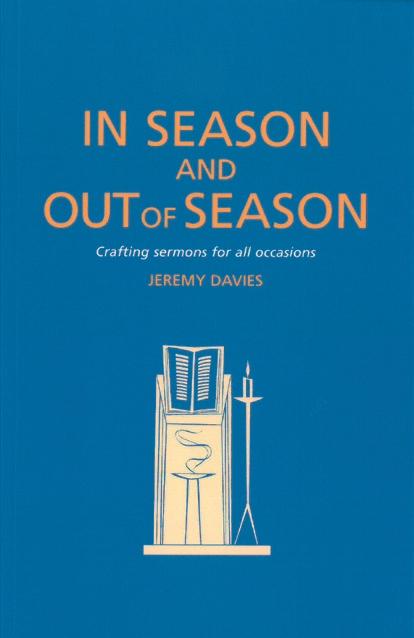
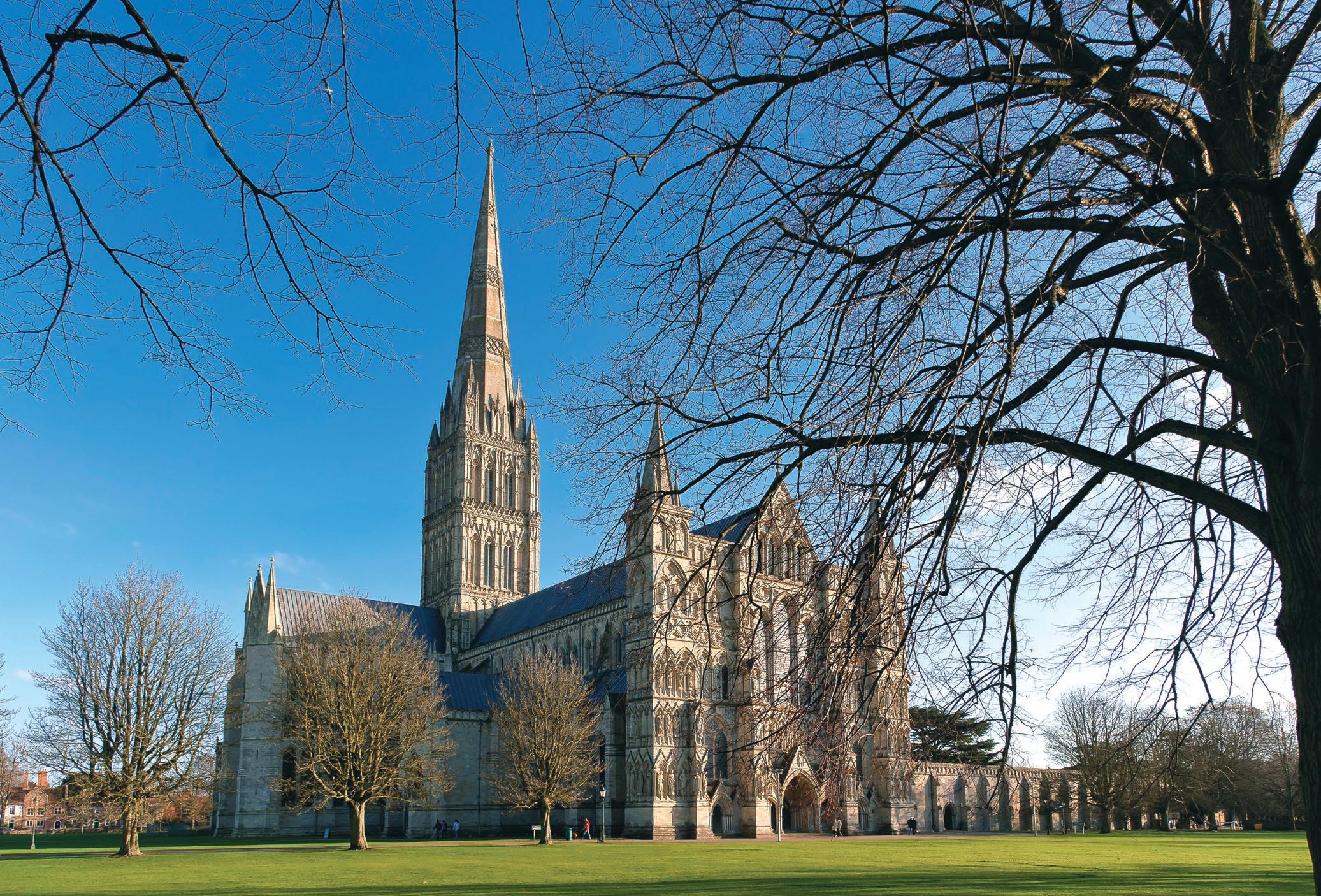
WhtithIAO dhtditd?


What is the IAO and what does it do? ����������������������������������������������������������������������������������� ���������������������������������������� ������������Organists’ Review����������������������������������������������� ����������������������������������� ������������������������������������������������������������������������������ �������������������������������������������������������������������� ��������������������������������������������������������������������
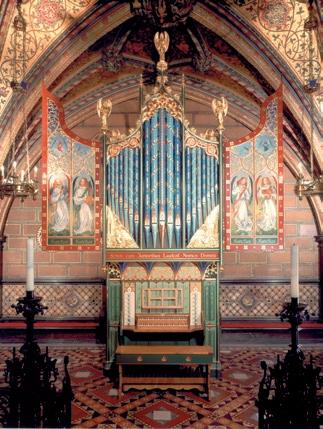
and

are our objectives.
objectives. our

Over the twenty years he served as Provost of St Mary’s, he worked tirelessly to get off the ground projects he fervently believed in. His first challenge was how to save the choir. The choir school was threatened by financial problems and faced possible closure. Determined to resurrect the school, provide excellent education and maintain a healthy choir, he looked for a creative and sustainable solution. He came up with the vision of a specialist music school and worked doggedly to attract the financial and political support to make this vision a reality. He asked Yehudi Menuhin to be patron and the school opened its doors to its first pupils in 1972. Today, the music school is flourishing over 40 years later, and it educates all the choristers as well as music specialists in all instruments, the only school of its kind in Scotland. It was very fitting that the pupils of the school took part in Philip’s funeral in March, a service which was filled with the most glorious music from the choir and the young musicians.
Philip Crosfield, who has died at the age of 88, was Provost of St Mary’s Cathedral in Edinburgh from 1970-1990. In that time he brought about considerable change to the cathedral, most notably in the field of music, founding St Mary’s Music School in 1972 and supporting the introduction of girls into the choir in 1978, the first time this had been done at any cathedral in the UK.
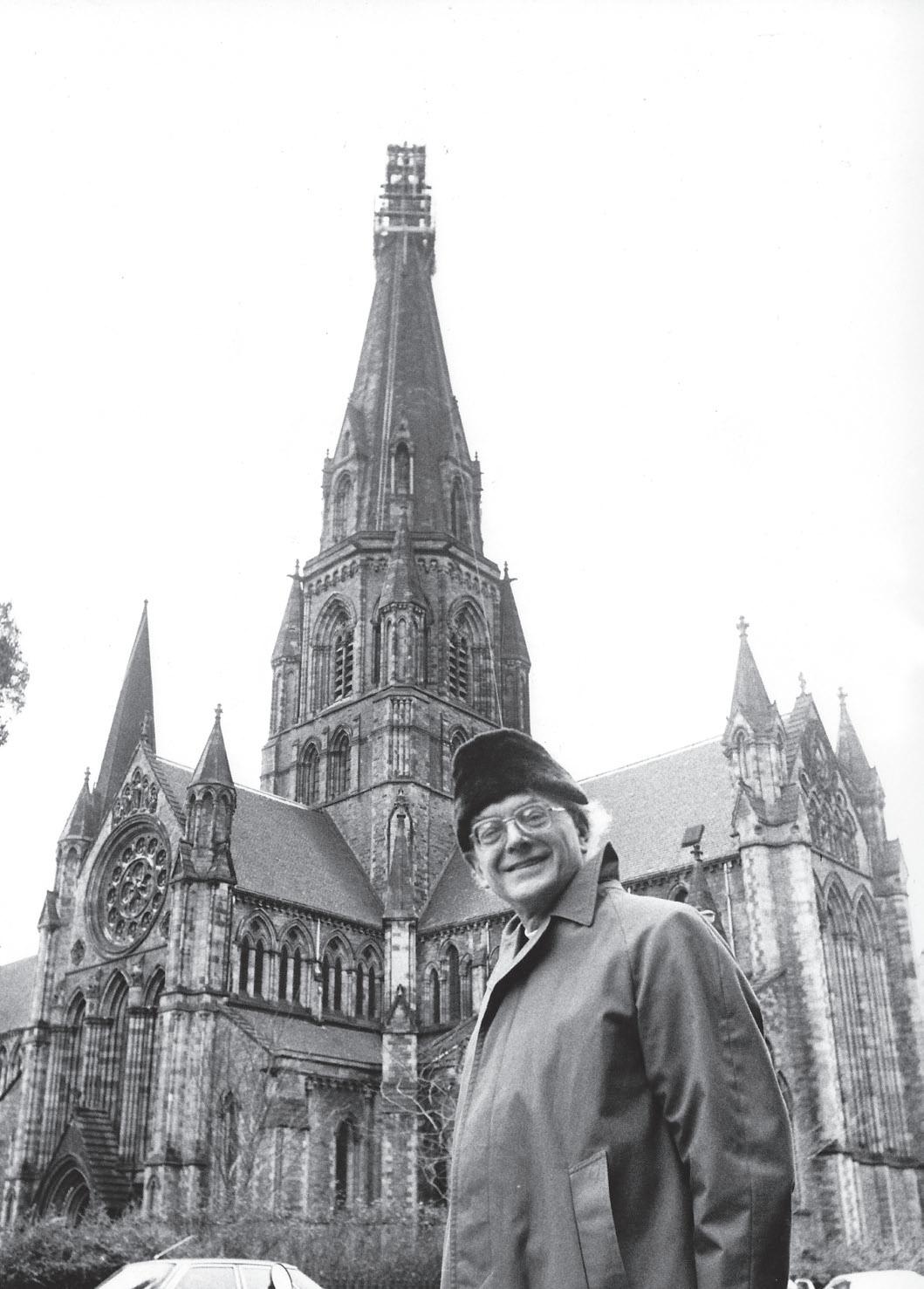
Philip was born in Barnes, south-west London in 1924, but his family moved to Edinburgh when he was only eight, so he spent nearly all his life in Scotland. Educated at George Watson’s College, Edinburgh, he joined the army in 1942 and saw active service in the Royal Artillery, landing in Normandy in June 1944 and making his way across France, the Low Countries and finally into Germany. After a spell teaching field gunnery to the Indian Army in Bombay, he was demobbed in 1946 and trained for the priesthood at Edinburgh Theological College, now the site of the music school he was later to found. He won a place at Selwyn College Cambridge and graduated with a first in Theology in 1951. He served in a number of ministries in Scotland, including St Andrew’s (where he met his wife Susan) and Hawick, before being appointed Chaplain of Gordonstoun School in 1960, where he was known as ‘Moral Phil’ to his pupils, who included Prince Charles, with whom he kept in touch and whose charity he supported.
Philip was never afraid to challenge convention and in 1978 the choir admitted girl choristers, the first Anglican cathedral in the UK to do so. This was an act of extreme heresy in the eyes of the musical establishment. Philip vehemently defended the move, proving that the quality of the music produced had been enhanced rather than reduced. He masterminded a year of triumphant celebrations to mark the centenary of the cathedral in 1979 and it was as part of those celebrations that he set up the choral scholarship fund, which has offered so many the opportunity to sing in the cathedral and have a firstclass education. He developed a passion for music as his life became steeped in it (even though he couldn’t pitch a note very well, as generations of choristers at Evensong will testify) and it was for services to music that he was awarded his OBE in 1990.
A deep-seated concern about unemployment and the plight of the young drove him to found the Cathedral Workshop in the 1980s, a project to encourage young apprentices to learn their trade on the fabric of St Mary’s, which was in desperate need of repair. When the cross on top of the tallest spire was refitted, he clambered up all 275 feet on a spindly ladder, stood on the tiny platform at the highest point, and rededicated it.
In retirement, he remained active as a priest just outside Edinburgh and was an avid hill walker and gardener. He is survived by his wife Susan, his children Fiona, Margaret and Paul, and by four grandchildren.
Paul Crosfield (Philip’s son and Head Chorister of St Mary’s 1979-80)f you were to mention Exeter Cathedral Choir to those involved in church music in any part of the country, the likely response would be – ‘Is that big fellow with the beard still in the choir?’ The answer would be a resounding ‘Yes’, and the jovial giant is Gordon Pike, who has celebrated an almost continuous span of 50 years’ service, man and boy,
Gordon’s chorister career began in January 1963 in snowy conditions. From a local farming family, Gordon describes his arrival at the cathedral school: “My father wasn’t going to be put off by bad weather so he delivered me to school on his tractor.” He recalls that the chorister day was quite similar to the current routine, though the boys sang many more services per week prior to the formation of the girls’ choir. Furthermore, all the choristers were boarders in those days. Lionel Dakers was the organist at the time. He and his wife would invite the choristers to tea after Evensong on a Sunday at 11 The Close. “It was always a treat to be invited to ‘the Dakery’, as we called it, because not only were we royally fed with crumpets and cream buns, but we also got the chance to spend time with Dakers’ four daughters whom all the choristers adored.” Gordon’s favourite time of year as a chorister was Christmas, with all the special services and singing from the famous Minstrels’ Gallery, festive meals and presents, (and the Headmaster used to dress up as Father
After a few years at senior school, Gordon returned to the cathedral in 1974 as a tenor choral scholar under Lucian Nethsingha, and studied at St Luke’s, a teacher training college. The following year he joined the staff at the cathedral school where he has taught ever since. His progression to the position of Lay Vicar was then followed in 2008 by his appointment as ‘Punctator’. This is an ancient title unique to Exeter and is synonymous with the post of Senior Lay Vicar. Over 50 years Gordon has served under three organists, six deans, four bishops and seven headmasters. He has featured on many broadcasts and recordings and has been present on every choir tour including some to the USA, Newfoundland, Russia, Norway and many European countries. He is very well known on the ‘oratorio circuit’ throughout Devon and the South West, and he works tirelessly for the Exeter Old
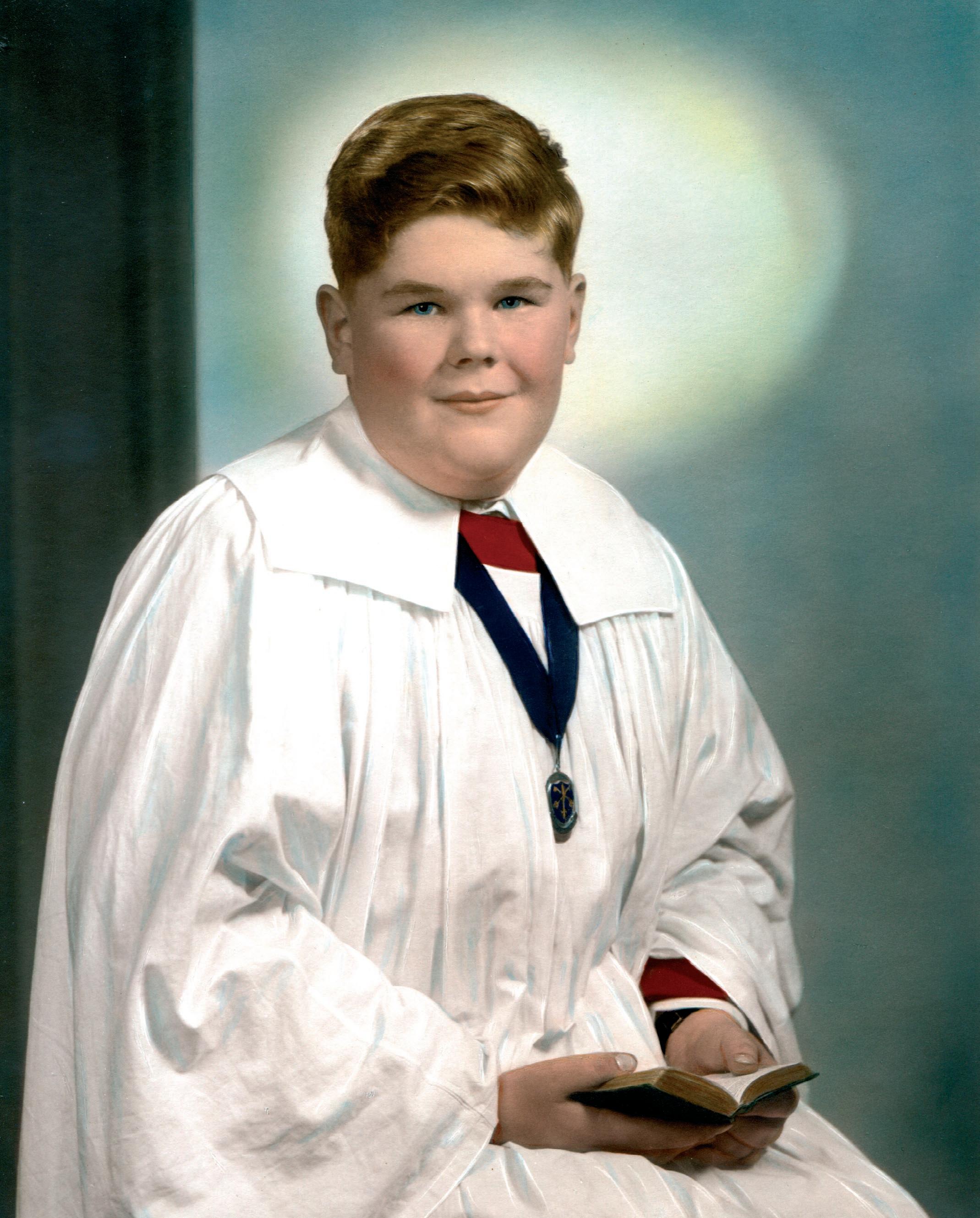
Gordon has served under three organists, six deans, four bishops and seven headmasters.
Choristers’ Association, surely the most vibrant and most wellsupported OCA in the country.
All these achievements, however, are secondary in significance to Gordon’s exceptional qualities as a human being. ‘Larger than life’ only just begins to describe Gordon’s infectious and generous persona. His love for the daily round of cathedral singing knows no bounds and he combines a fine voice with huge experience. He has kept a record of his performances of the tenor solo in Harwood’s Magnificat in A flat (86!), and I soon learned that it was best not to beat time through the top note, as he would come off it only after maximum enjoyment had been achieved! He often has his colleagues in stitches not through his clever wit but because of his unrivalled prowess in the art of malapropism. His famous sayings are known as ‘Pikelets’ and are recorded in a notebook at the cathedral school.
Gordon’s enthusiasm and constancy has a profoundly positive influence on the esprit de corps in the choir and cathedral, and his love and respect for his fellows is reflected in the caring way he treats everyone from the bishop down to the smallest chorister. His total commitment to the cathedral and its school has been wonderfully supported by his wife, Penny, and his three grandchildren have just started as pupils of Exeter Cathedral School.
The title for this article was not chosen lightly. In recent years we have had two visits from HRH The Prince of Wales, as patron of our cathedral fund-raising appeal. Such is the impact that Gordon makes that on the second visit, HRH was heard to say, “Ah, you’re still here then?” Yes, very much so, and cathedral music is greatly enriched by this exceptional man.
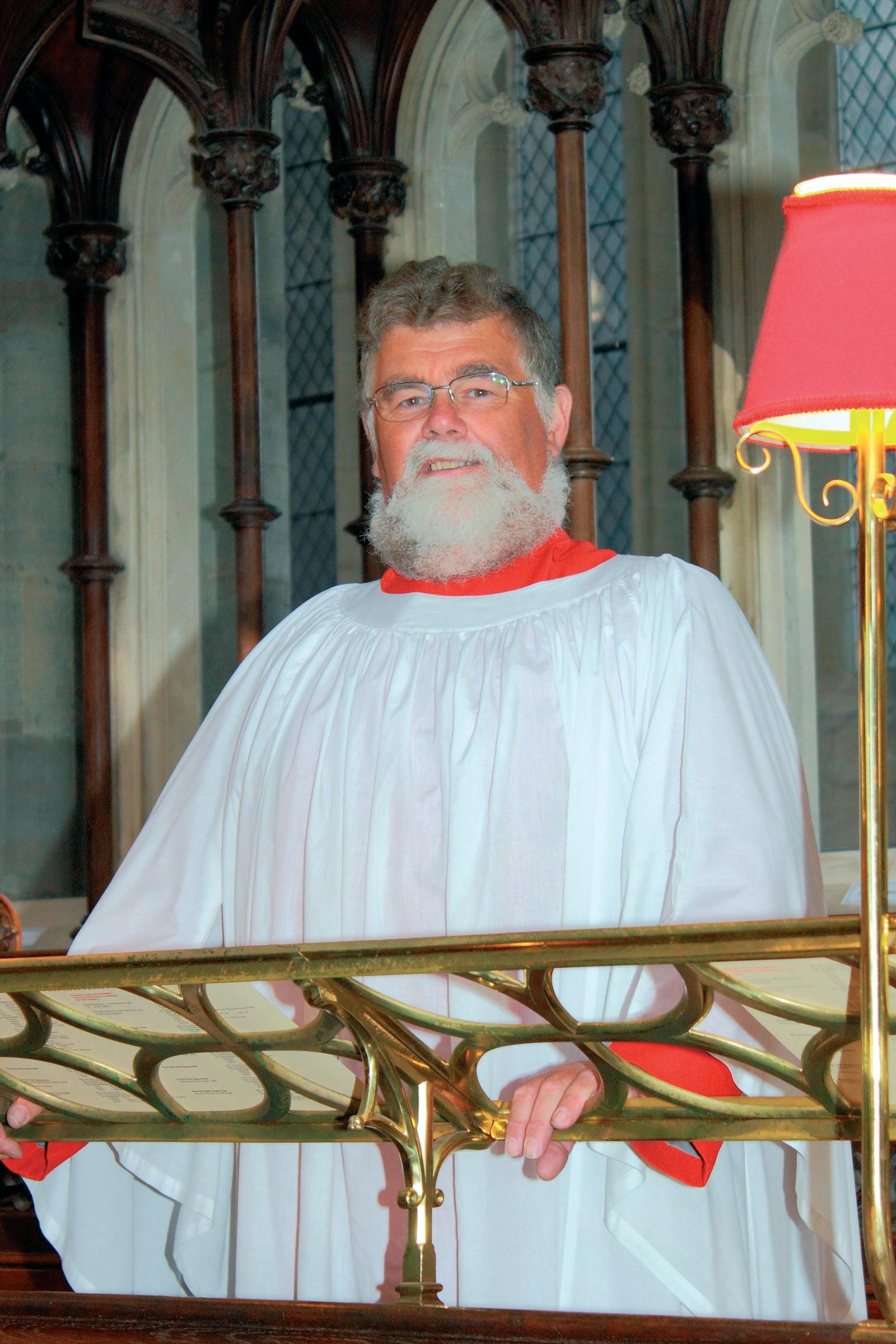
Gordon’s enthusiasm and constancy has a profoundly positive influence on the esprit de corps in the choir and cathedral, and his love and respect for his fellows is reflected in the caring way he treats everyone from the bishop down to the smallest chorister.

In the world of classical music, About Sound produces recordings of works by many leading orchestras, choirs, chamber musicians and soloists for record labels such as Hyperion, Signum and a burgeoning number of own-label ventures. A newish one of these is the promotional video for artists to release on YouTube. The move from producing CDs to webcasting came about via a request from a client – in this instance St John’s College Cambridge. Whilst on a tour recording the choir in Venice for a fascinating book (Sound and Space in Renaissance Venice by Deborah Howard, a fellow of St John’s), the Dean expressed interest in following in the footsteps of St Thomas in New York, which had recently begun webcasting (incidentally, John Scott was himself also a Johnian).
The brief was to enable St John’s to work the system themselves, so we scoured the market for a 60ft retractable microphone winch which would deploy high-quality microphones from the roof space and remove them from view after use. Other elements of the system included the DAW (Digital Audio Workstation, i.e. a computer) onto which the services would be ‘captured’. We had to make the recording system fairly simple, and then spent time training a choral scholar to postproduce the content and prepare it for online distribution. The system we have installed in various chapels (New College Oxford is another one) does not webcast live but offers an on-demand streaming service which over time becomes something of a library.
The setting-up of the webcast itself need not be complicated. St John’s was fortunate in having the Cambridge University Streaming Media Service at its disposal, but for subsequent installations we realised that the technology available on the open market (such as Soundcloud) was not quite right for the specific requirements of the music and liturgy of the church. We joined up with a leading provider of streaming radio who built a custom player and administrative back end to our specification. A client can upload their finished service and then enter the details of the musical items and readings. This populates the player, the look and feel of which can be made to blend in so, for example, the same player drives the websites of King’s College Cambridge and New College Oxford yet they look totally different. We call it AMP – Audio Management Platform -- and this is available on a monthly subscription covering the hosting, bandwidth and software licence. Any organisation seeking to build up an audience through regular webcasts could use this platform, and indeed many of our customers have started this way.
The process starts with the making of test recordings to determine the ideal position for any permanent microphones, and the tests are then used to demonstrate to those such as the Cathedral Friends (from whom funding is perhaps being sought) how the system works. Or a client may have an existing preferred local provider of recording services, in which case certain services can be captured as individual location recordings and then uploaded to our player to stream
off the client’s website without investing in the permanent equipment to do it on a whim. However, once the positive effect of webcasting is felt, clients generally want to do more of it and seek to be able to record with no set-up time and often on a speculative basis, recording most services and then cherry-picking the ones they want or need rather than being under the pressure of an almost-live broadcast.
As with all technology, webcasting shouldn’t be viewed in isolation but more as part of an overall media strategy which also uses the internet and social media. Many of About Sound’s recording clients have been ahead of the curve on this – organisations such as the Royal Opera House and the LSO employ in-house social media managers whose sole role is to maintain the Facebook, Twitter and YouTube accounts for their respective organisations. How the traffic is driven to the webcasts and what people see when they access them are all part and parcel of maximising the investment. Any musical director will see the benefit of having archive recordings whether or not they are made public, to hear how things come
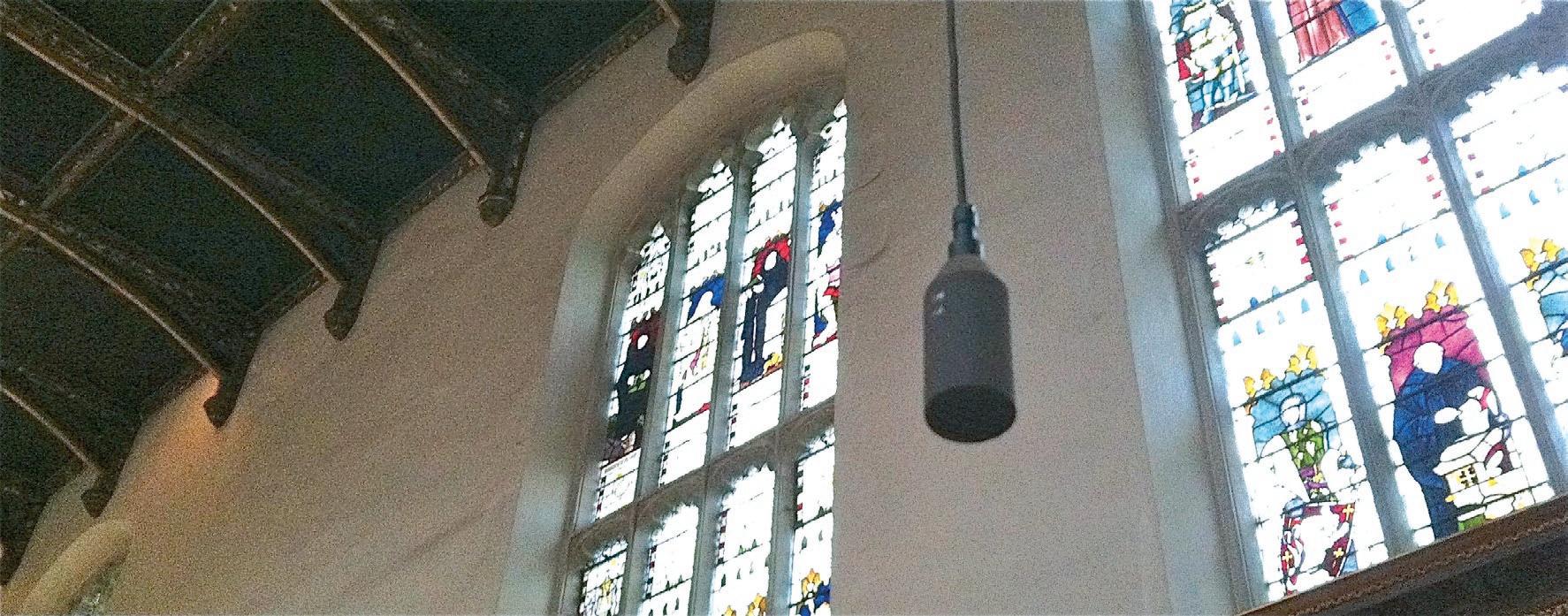
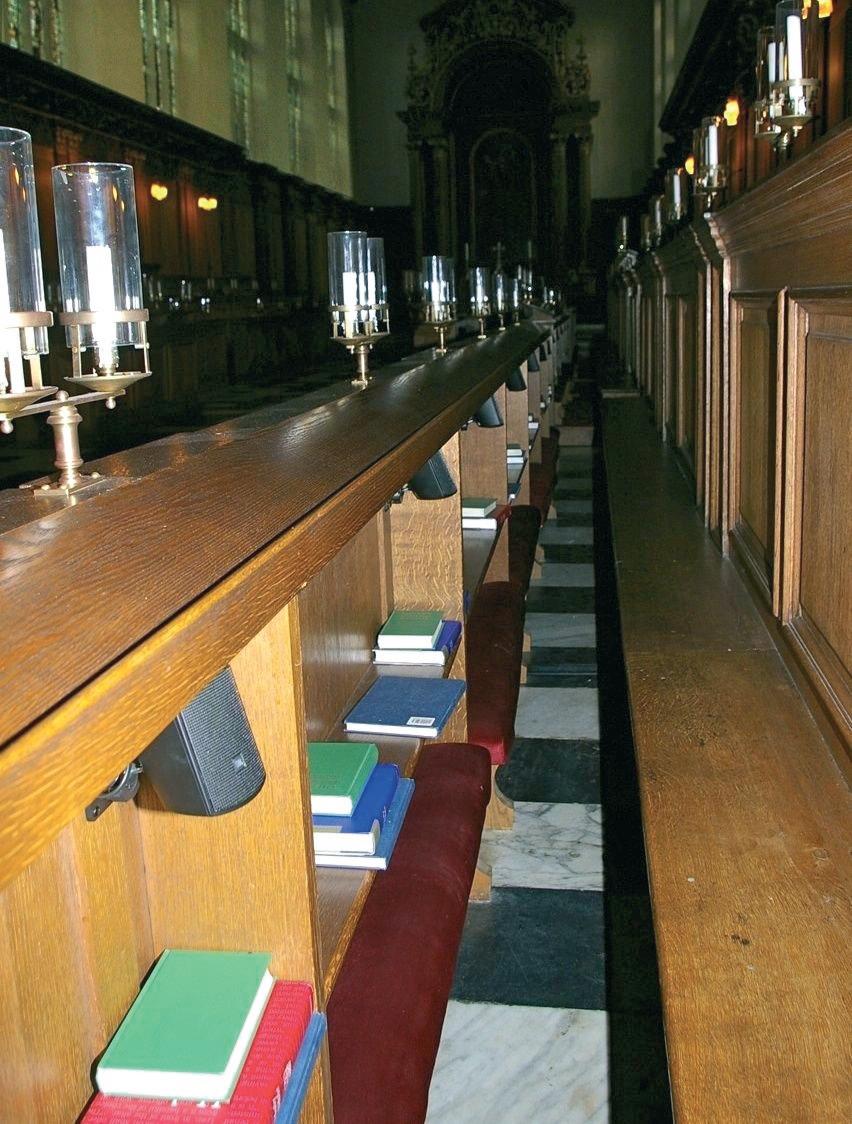
across and to document current performance practice for future generations. It is also possible to link the music heard in services to commercial recordings of the choir available on CD or via iTunes so that proper revenue generation ensues. None of our clients currently charge for the webcasting service they provide, but the content is streamed rather than downloadable and tends to be available for a limited time period before being removed.
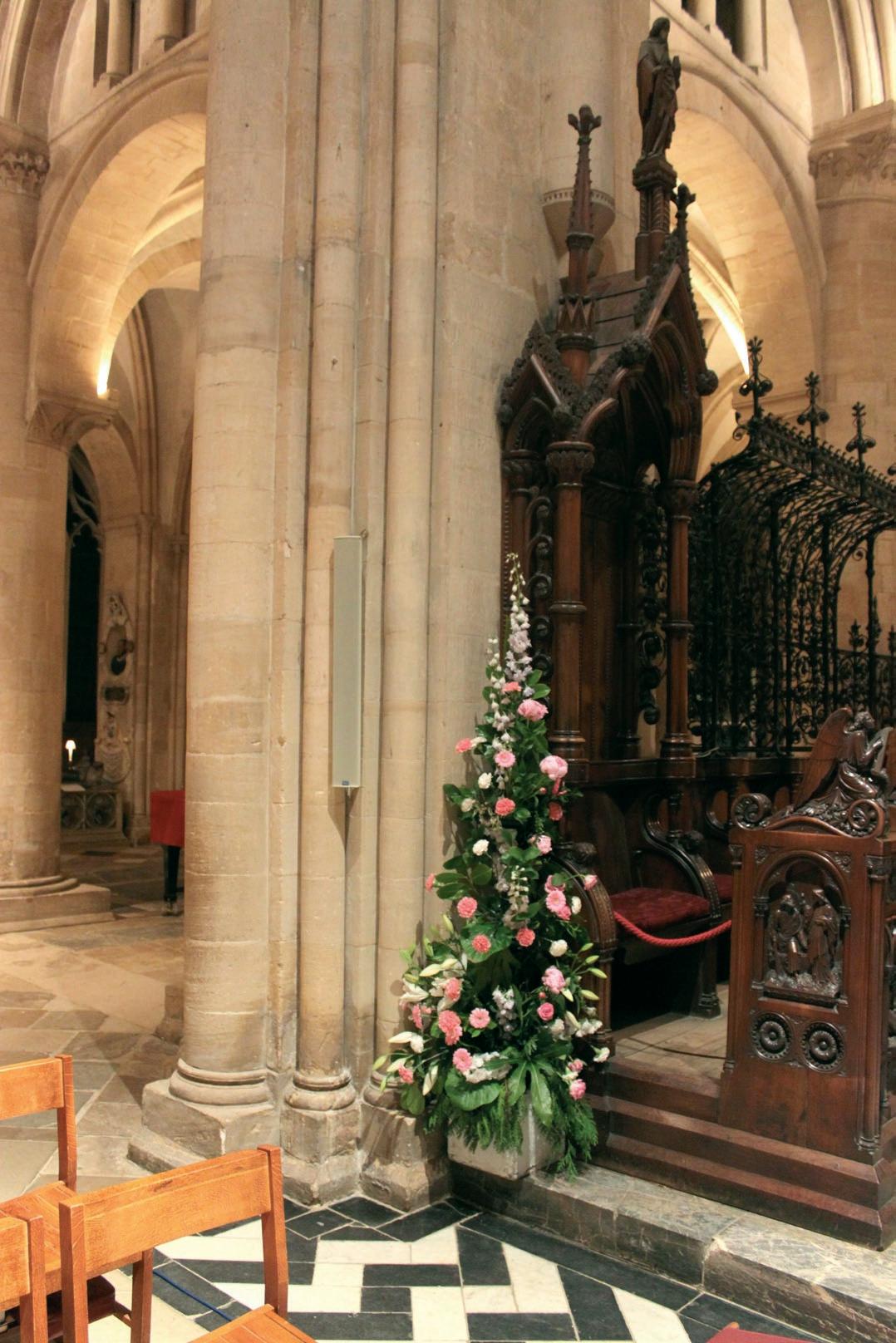
We also get a lot of requests to film concerts, because using a sound expert to provide video services is much better when it comes to musical content. The TV industry of course considers picture to be king, and sound therefore often an after-thought, but the microphone on a video camera will never capture a performance properly. We treat a film session as a location recording, setting up a broadcast-quality sound mix which is synchronised to the cameras. A video company would not carry the large variety of microphones suited to recording classical music because with them everything is geared towards directionality and extracting speech in otherwise noisy environments.
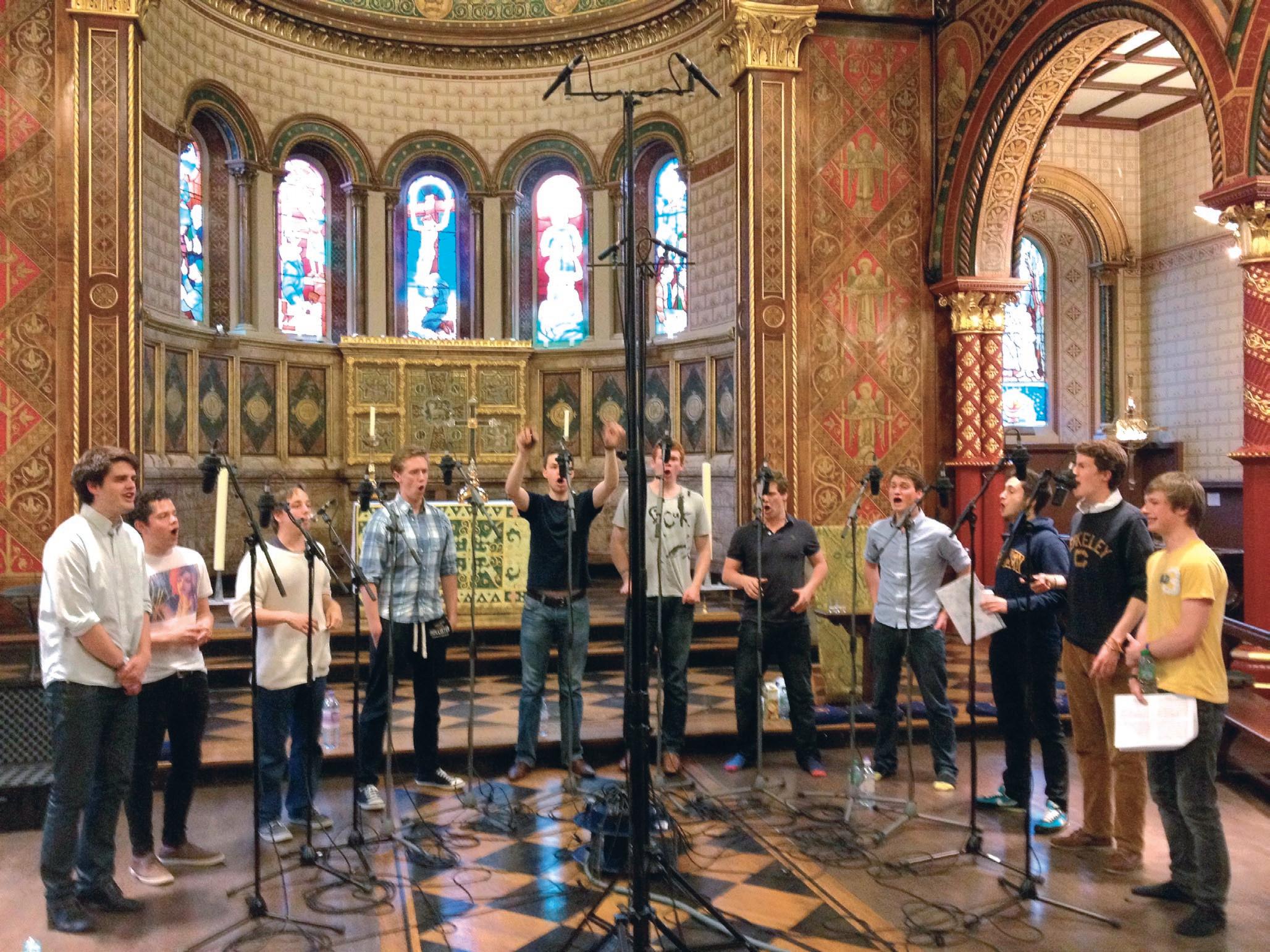 King’s College London
The positioning of speakers and microphones is as sympathetic and as discreet as possible
King’s College London
The positioning of speakers and microphones is as sympathetic and as discreet as possible
About Sound also provides a service to design and install highquality PA systems, mainly for the amplification of speech in challenging reverberant acoustics such as cathedrals and large churches. The aim here is to deliver intelligible sound to every seat in the house with the minimum of impact upon the architecture of the heritage buildings in which we work. If there is an existing system, we try to make the new system less visible than the previous one, taking advantage of new technology at the same time to improve the sound as much as possible. It has been quite shocking to see how badly the spoken word is distributed in many prestigious buildings. This is partly because much of the equipment dates back 15-20 years to when such systems were first available, and these have reached the end of their natural life. Cathedrals, which often spend large amounts of money on lighting – sometimes over ten times what a state-of-the-art sound system would cost -- are usually very hesitant about releasing funds for a PA system, even if the spoken word cannot be heard clearly. Of course, PA has improved greatly in recent years in public places such as airports, where the nasal and incomprehensible announcements that used to be a source of great frustration are a thing of the past. This is no coincidence, but rather the result of international standards and indices for intelligibility of sound, not least for evacuation purposes, which in turn has driven the development of loudspeakers which are capable of overcoming reverberant acoustics with technologies such as beam steering. It is now possible, and affordable, to build acoustic models of spaces in which loudspeaker positions and performance can be reliably simulated, and this now forms part of our design process on every job we do.

It’s not just about the loudspeakers, though. We regularly encounter travesties – a frequent one is a handheld microphone in a clip in front of a lectern or pulpit. These highly directional dynamic mics are designed for extremely close address because they totally exclude everything except the very closest source, making them ideal for a pop singer on a stage with lots of backline guitar amps and drums thrashing away. Anything more than about 6 inches away and the mic barely works.
At the heart of any modern sound system is a DSP or Digital Signal Processor – basically a digital mixer with many functions for optimising the incoming signal and distributing it. Gates can be used to open and close microphones when they sense a certain level of sound. In our larger installations, we tend to provide bi-directional control of the speaking positions so that the clergy can operate the muting and activating of their microphones, but this can also be moderated by a verger using a wireless tablet, such as an iPad, in case the status is forgotten. The really good news is that in most cases, the number and size of loudspeakers are greatly reduced, in itself a great benefit architecturally, and in many cases this is an opportunity to reverse previous eyesores.
Further information on webcasts or PA systems can be obtained from www.aboutsound.co.uk. Our consultancy is available to churches of all sizes and, where possible, we attend a service and offer our recommendations with approximate costs free of charge.
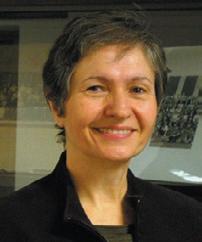
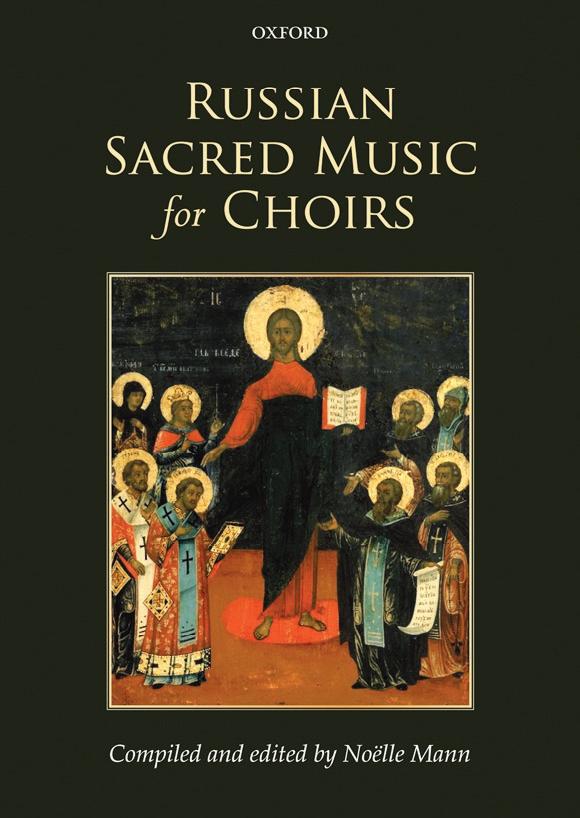
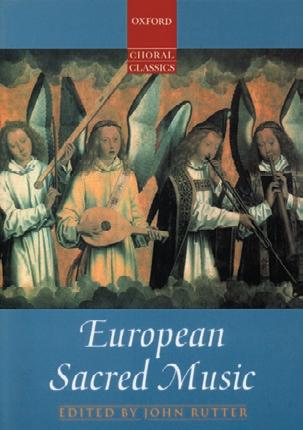

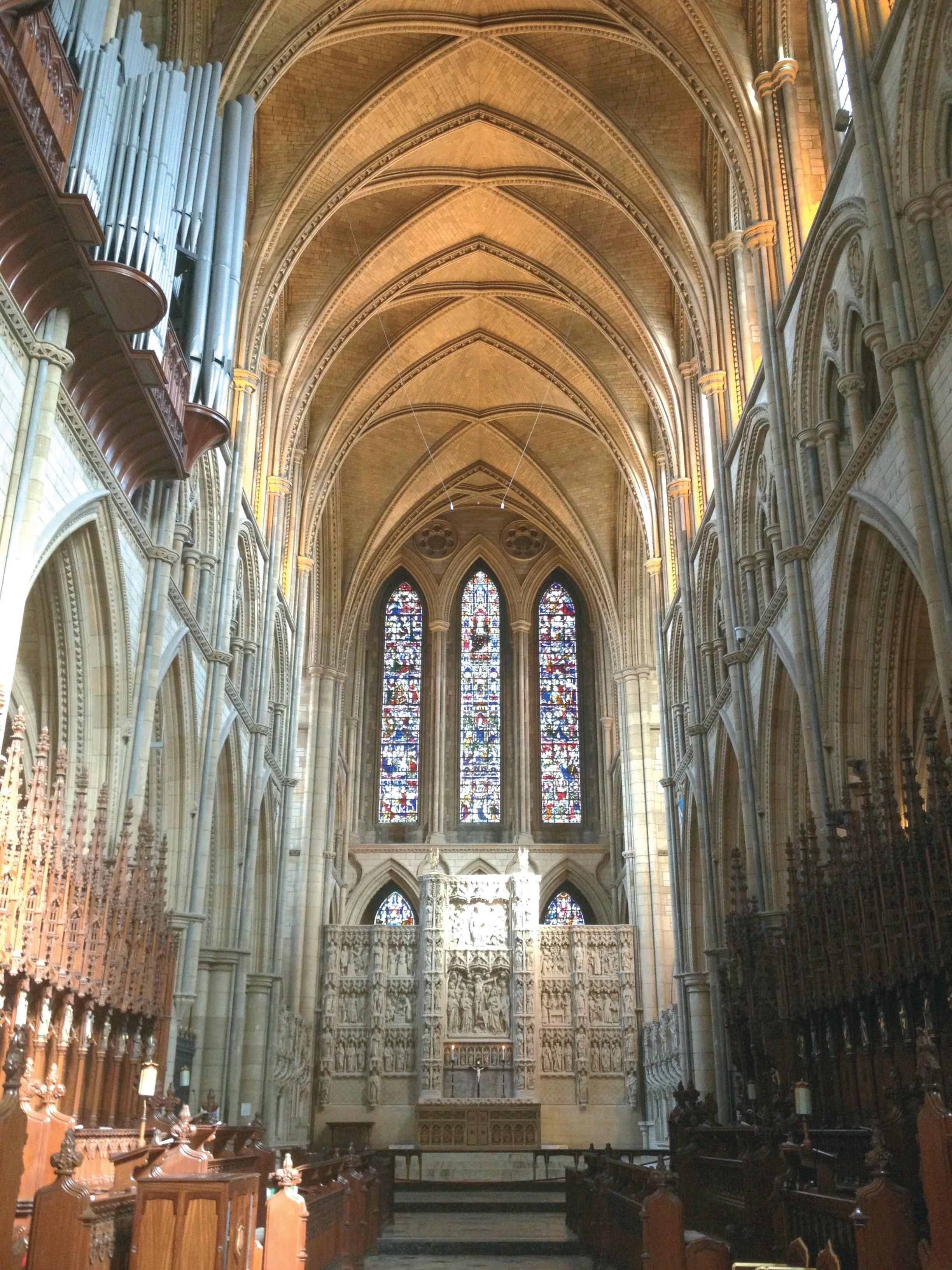
Former Beverley Minster organist Dr Alan Spedding, who influenced generations of young musicians in his 42 years at the Minster and who retired in 2009, died in hospital recently after suffering a heart attack earlier this year. He was made an MBE for his services to music, and met the Queen twice. He leaves behind a widow, Ann, two children and six grandchildren.
At the age of eight, Alan joined the choir of St Mary’s Wimbledon (the church that can be seen during the closing credits of the Wimbledon Championships) through the recommendation of his piano teacher. Alan was initially daunted by the thirty other boys, but soon found that sightsinging came naturally to him, and he rose to be head chorister. His musical grounding was already extensive piano playing and accompaniment, theory, aural training, listening to records etc and his father frequently took him to orchestral concerts and piano recitals. His weekly evening piano lesson lasted three hours, from 6-9pm, and cost the princely sum of two shillings!
The St Mary’s choir was affiliated to the special choirs of Westminster Abbey and St Paul’s Cathedral. Both these choirs attracted boys and men from parish choirs all over London, giving them the opportunity to sing exciting repertoire. Alan relished the thrill of performing Bach’s St Matthew Passion to a packed congregation under the dome of St Paul’s. At the
time, both the north transept and the high altar were blocked off until the work of restoration after the wartime bombing had been completed. Many of the soloists were famous names − Alfred Deller, Norman Allin, Thomas Helmsley and others − which impressed Alan greatly!
At the age of 11, Alan learnt the rudiments of organ-playing from the organist at St Mary’s, and thereafter he was allowed the use of the organ. He had no problem with the manuals but was determined to conquer the pedals, and sat himself at the organ for three hours one afternoon, playing through a Bach fugue until he had achieved some measure of independence of hands and feet. His parents could not afford organ lessons but he learnt a lot from watching some of the best London players of the day, one of whom was George Thalben-Ball at the Temple Church, who allowed Alan to stay on and play after the morning service. Subsequently Alan became assistant organist of a church in Tooting Bec, and then St John’s Wimbledon, which had a fine 3-manual Hill, Norman & Beard organ.
After National Service (from which, much to everyone’s surprise, including his own, he passed out with the champion recruit’s medal), Alan gained a place at the Royal College of Music and at last had regular organ lessons, with John Birch. His harmony professor was Phillip Cannon, whose lessons ‘were always stimulating and interesting’.
 Alan Spedding
Alan Spedding
Shortly before graduating in 1963, Alan was appointed organist of the parish church of Kingston upon Thames and also became Head of Music at a new school there. Some five years after that, following the birth of his son, he applied for and was offered the job at Beverley Minster, where he was to remain for 42 years (having planned to stay for five!). The daily round included Sunday services, mid-week evensongs, weddings, funerals, occasional services and civic events, concerts, recitals, broadcasts, lectures, rehearsals and choir practices. Beverley Minster is not a cathedral and there was no choir school, but a high standard of music was expected by visitors to the church, who found a magnificent building of European significance. The organ, a particularly fine Snetzler of national importance is, in Alan’s words (written for an article published in Cathedral Music in 2002), ‘a constant joy to play for both service accompaniment and recital work’. He went on: ‘It is, without doubt, one of this country’s greatest organs, and I have been privileged to make it even better known through recordings and broadcasts. It is a complement to the Minster in elegance and quality.’ One obviously knows the instrument intimately. He loves it deeply too, for his programme displayed the instrument perfectly. And what an instrument! A beautifully blended, light and airy sound with some gorgeous stops...’
The Church of England not being a generous employer, Alan supplemented his income by taking subsidiary positions. For
four years he was Head of Music at a large comprehensive school in Hull before becoming Music Master at Beverley Grammar School. He taught there for almost 20 years, after which he taught part-time at Hull University. In addition, he conducted two large choral societies, made recordings, adjudicated in music festivals, worked as an examining member of the Council of the RCO, directed many RSCM courses, festivals and other events, and served as an Associated Board examiner. He also composed choral and organ music and was for nine years the co-editor of Organists’ Review
Alan directed many broadcasts on radio and television from the Minster. The choir was invited to contribute to the BBC Radio 3 series Great Cathedrals and their Music, the only noncathedral choir to take part. In the 1980s, he said, “Broadcasts came thick and fast, and we appeared on television so frequently that at an organists’ meeting in London I was
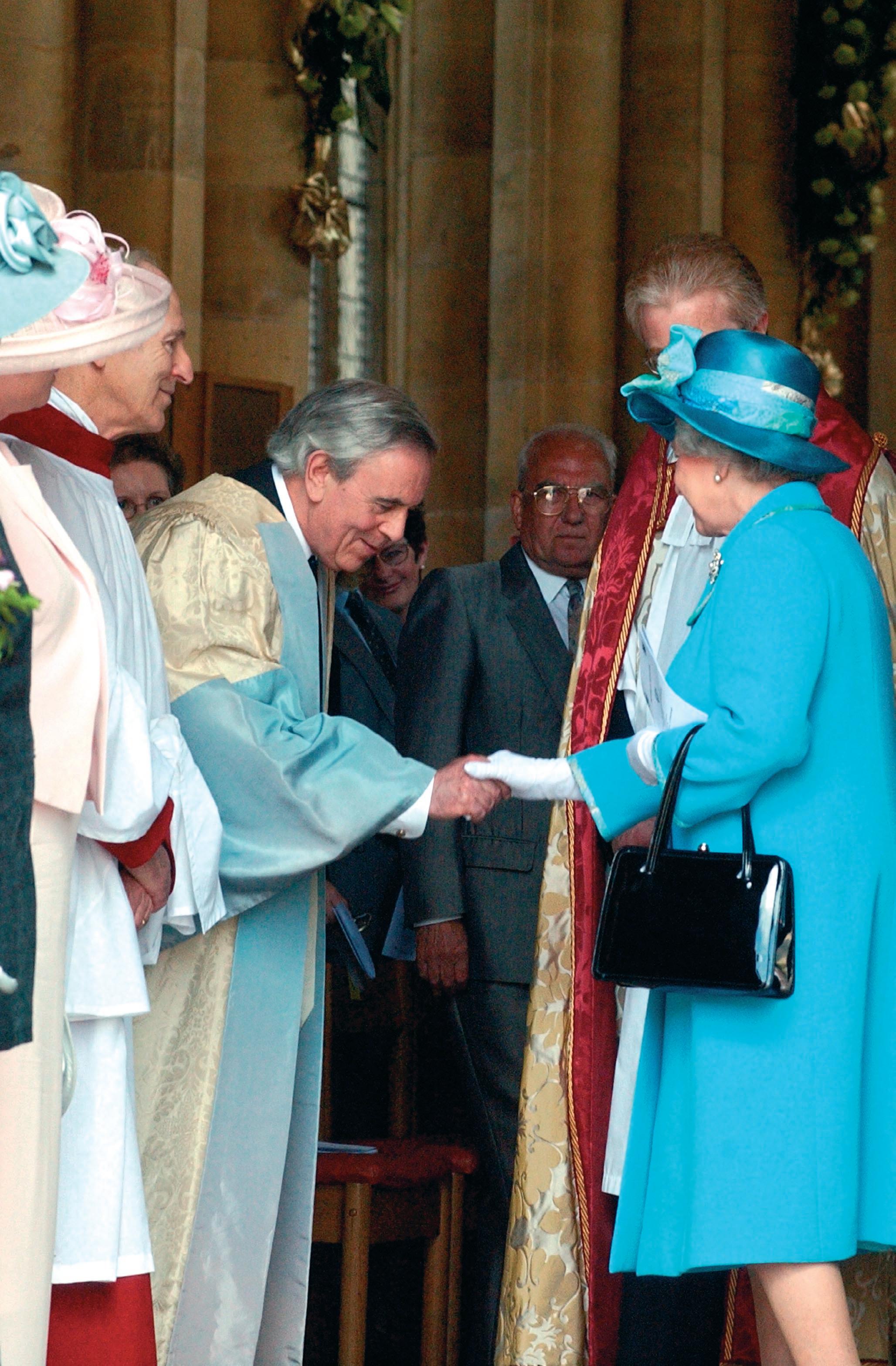

all for specific occasions. Several of his CDs − of his own and others’ music − are still available, featuring the organ of the Minster which was rebuilt in 1995. He was made Organist Emeritus in recognition of his contribution to the music of the Minster, and was rightly proud of the building in which he spent so much of his time. When addressing those visitors who had first been to York, he would say: “I understand that you have been to the largest minster in Yorkshire this afternoon. Now let me welcome you to the most beautiful.”

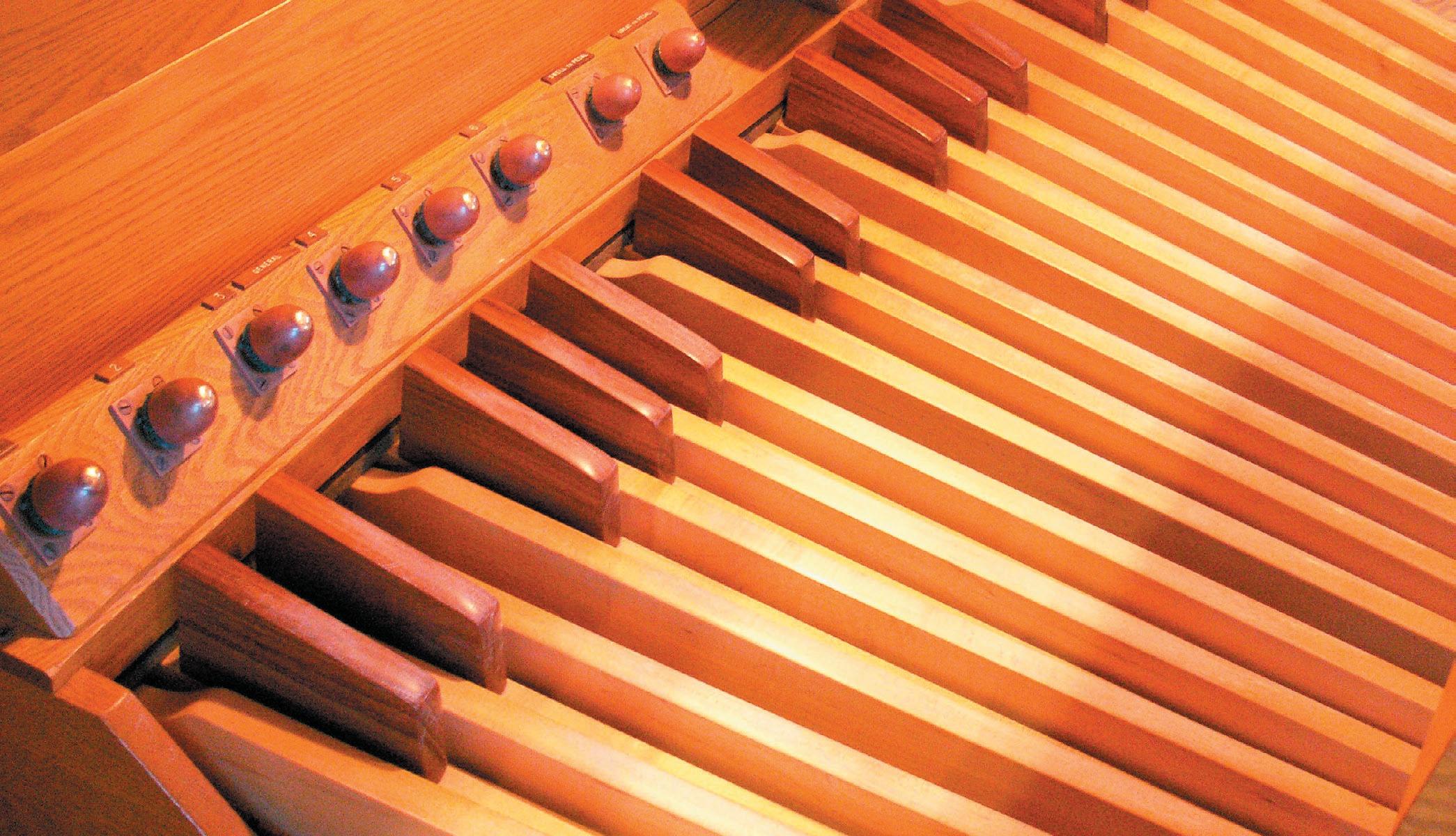
Concluding his CM article in 2002, he wrote: ‘One of the most satisfying aspects [of the job] has been the pleasure one takes in following the careers of former choristers, pupils and organ scholars. God’s most important blessing of all, however, has been the wonderful family life created by my wife, Ann, who, as well as being my most enlightened and honest critic, supports me in everything I do. My gratitude to her knows no bounds.’
Alan will be sorely missed by all who knew him.

As one of Alan Spedding’s first Minster choristers in 1967, and having kept in touch with him ever since, I was enormously sad to hear of his recent death. I was proud to have the privilege of being a chorister under his directorship, and I know that I am not alone in this. It was a most worthwhile and uplifting experience that charted the pattern of my life.
When Alan started at the Minster he spoke to my mother, a regular attender there, to enquire if my two elder brothers might be interested in joining the choir. This was not the case, “But,” my mum declared – “I have a third boy at home who loves singing.” This was the start of my chorister days at Beverley Minster, and what a kick start it was! I was in awe of the building, its beauty, the organ and the new Master of the Choristers. Alan had a clear idea of what he expected from us, and he also had the skill and expertise to get it. Evensong on Thursdays was a highlight for me; I will never forget those dark winter nights where we would sing this wonderful service in a building of such beauty and magnificence. Historically, the organists of Beverley Minster have had long tenures and Alan Spedding was no exception; surely this must have been at least partly because of the building itself.
Sadly, my chorister days at the Minster were cut short due to a family move to North Yorkshire, but I never lost contact with Alan, and sang under his direction for a few years on a summer
course at Salisbury Cathedral. With a love for cathedral music and very much thanks to his influence, I went on to become a lay clerk at Ripon Cathedral for seventeen years. This was Alan’s inspiration to me, and to many other choristers, organ scholars and lay clerks.
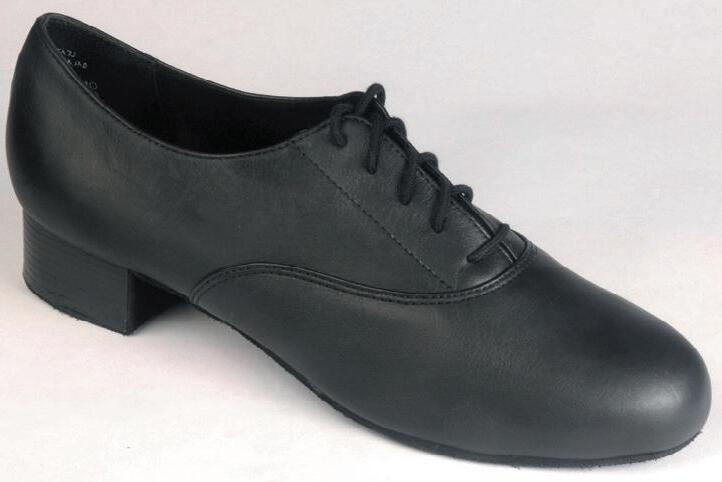
Alan was a true gentleman, very scholarly and well-spoken. He had a delightful sense of humour which would manifest itself occasionally in a small wry smile, though he was known also to grimace when something displeased him. One such time was on my first choir trip. We were a coachload of some 20-odd choristers with only one adult (Alan) to accompany us (something that would never happen nowadays), visiting Flamingo Park Zoo. In great excitement on the journey we sang snippets of cathedral music in as bad a fashion as we could muster – and the expression on his face was a sight to behold! This expression returned with a vengeance when the older choristers gave a rendition of some rugby songs they’d picked up from heaven knows where!
Alan retired in 2009, and a very large congregation attended his retirement service. He had been such an influence on so many lives, and so many people were grateful to him for all he had done as a musician – not just in his position as Minster Organist but in all his other musical associations as well.
chorister in his 1950s’ boyhood, and four personal members who were persuaded to renew their annual subscriptions after the standard reminders from the membership department in London were followed up by yours truly. Unfortunately we also lost three members, who failed to respond.
One of my first actions as FCM representative was to send a newsletter to existing members in order to introduce myself and to attempt to gauge the level of interest in a possible ‘gathering’ type of event. Of the 28 members mailed (I did not include myself!), I received a reply or acknowledgement from a mere six!
In their January 2013 DRs’ Newsletter, Terry Duffy and Michael Wiles welcomed new DRs, including me, with the comment, ‘There’s a challenge!’. In Cathedral Music 2/11, Michael Deasey, who is Precentor/Liturgist/Organist/ Director of Music at All Saints’ Cathedral, Bathurst in New South Wales (yes, he is a busy man!) quoted the story of the bishop who carried a chair (cathedra) in his car so that to whichever church he went in his vast outback diocese, that church could be his cathedral! Little did I know when I agreed to take on the position of FCM representative here, how true Terry and Michael’s words were, or how far apart are the main centres of cathedral music.
My research tells me that the land mass of Australia is approximately 7.69 million sq. km with a population of around 21 million at just over 2.7 people per sq. km. The UK (from which I emigrated to live in Sydney just under five years ago) has only 245,000 sq. km, but 61 million people at just under 249 per sq. km. The combined population of the five major cities in Australia (Sydney 3.5m, Melbourne 3.16m, Perth 1.8m, Brisbane 1.51m, and Adelaide 1.01m) totals well over 50% of its population, and to travel from Sydney on the east coast to Perth on the west coast is around 25% further than from London to Moscow. Thus the arrangement of a ‘diocesan’ gathering certainly presents problems, while a National Gathering would be miraculous!
Nevertheless, undaunted, I set out last September with the aims of letting the church music world in Australia know that the FCM exists here, to increase membership (this necessarily has to be done by email, letter or telephone outside the metropolitan area of Sydney where a personal approach is more practical and much more likely to achieve success) and to let existing members know that FCM recognises and values their financial contributions, and needs and appreciates their support and interest.
When I took over as FCM representative we had a grand total of 29 members in the whole country, ten of whom were in the Sydney and general New South Wales area. We have now grown to 31 (believe it or not, an increase of almost 9%!) including three new corporate members (the first in Australia – St Andrew’s and St Mary’s Cathedrals and St James’s Church, King Street, Sydney), two new personal members, one of whom is a golfing friend who was a Canterbury Cathedral
Since then, the FCM recruitment committee has approved the design and production of a membership recruitment leaflet (MRL) for use in Australia. This is very much based on, and in the same typeface, style and colours as, the UK version, but it emphasises the existence of FCM and cathedral music in Australia and the financial support already given to Australian cathedrals (some £15,000). It contains both personal and corporate membership details. Graham Hermon, our FCM Production Manager, has been most helpful with this, and Ross Cobb, Director of Music and Organist at St Andrew’s Cathedral, Sydney, has offered to print quantities as needed – for which I am extremely grateful. This MRL is now being sent to all remaining Anglican and Roman Catholic cathedrals in Australia, however large or small (there are 52 in total). I hope, during future travels, to visit some of them. I have also contributed a piece promoting FCM to Newsclef (the quarterly magazine of the Royal School of Church Music, New South Wales branch).
Terry, Michael and our Recruitment Manager, Rosemary Downey (who persuaded me to take on Australia) have been most encouraging and each has emphasised that recruitment can be a very time-consuming, thankless and frustrating exercise. Nevertheless, I shall press on regardless with the ‘Abraham Initiative’, and yes, a small ‘gathering’ in Sydney may be attempted!
If any of you have relatives or friends in Australia who may be interested in supporting FCM, please send me their details and I will gladly send them an FCM Australia MRL. (Email: dsewardfcm@yahoo.com.au)
Note from the Editor: This piece was written in June 2013 and accompanied Terry Duffy and Michael Wiles’ July 2013 newsletter for diocesan representatives. Nine months later FCM membership in Australia, compared with the position David inherited when he became DR, has grown to 40 members, an increase of almost 38%, despite a few non-renewals and a death. St Paul’s Cathedral, Melbourne has become an additional corporate member, a further eight personal members have joined, and seven existing personal members have renewed their annual subscriptions following ‘gentle’ reminders from David. And, yes, the Abraham Initiative continues!
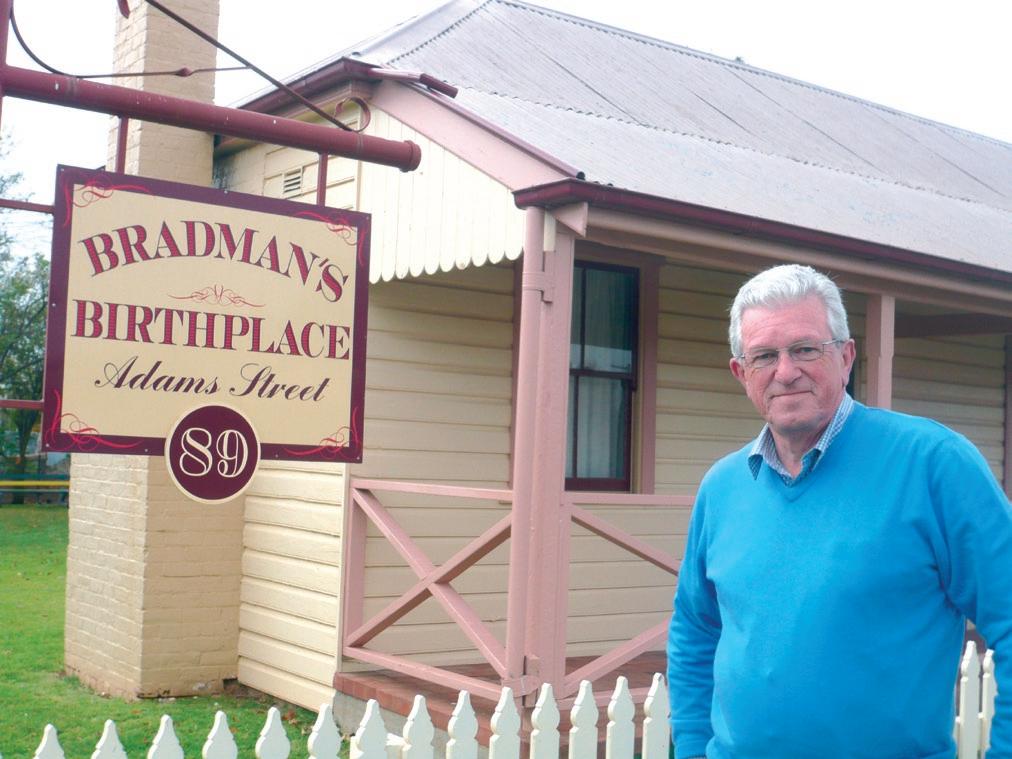
Music is at the heart of the daily routine of St Paul’s Cathedral and has been since the 12th century
It is entirely self-funded each year by generous support from patrons and the public For more information about how you can help continue the tradition of the choristers of St Paul’s and the music that takes place here please visit www.stpauls.co.uk/choristers or call 020 7246 8333
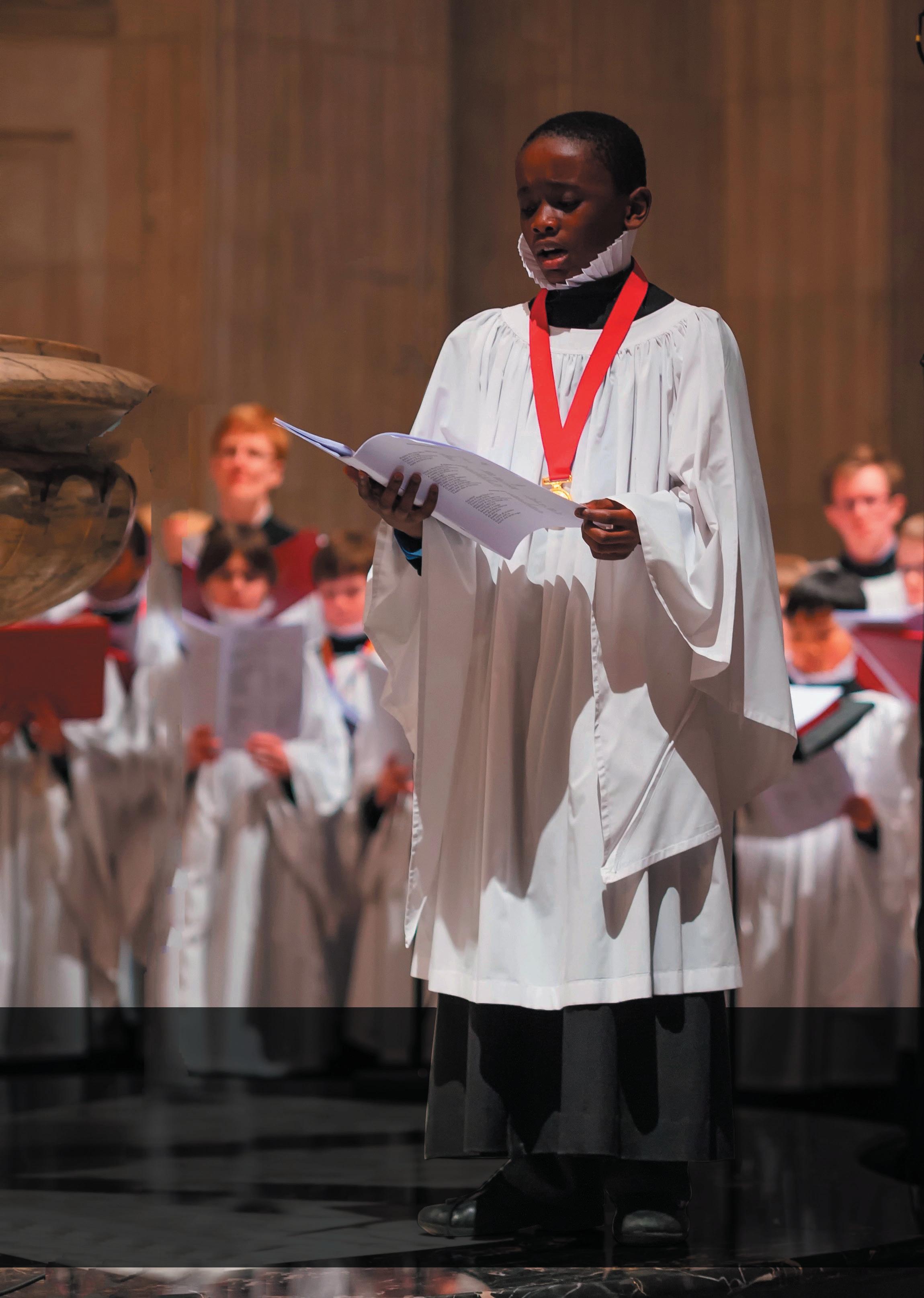
Timothy Dudley-Smith
Price: £6.95 (£5.21 RSCM affiliates)
ISBN: 978-0-85402-234-2 also from RSCM Music Direct
The thirty contemporary hymns in this collection are based on the psalms, and are set to both familiar and new tunes. Writing in the preface, Bishop Timothy Dudley-Smith, the author of more than 300 hymn texts, refers to the lost art of chanting the psalms, and the value of metrical psalms as an alternative: ‘To congregations used to hymn-singing they can offer something of the riches that singing (or saying) of the psalms can provide.’
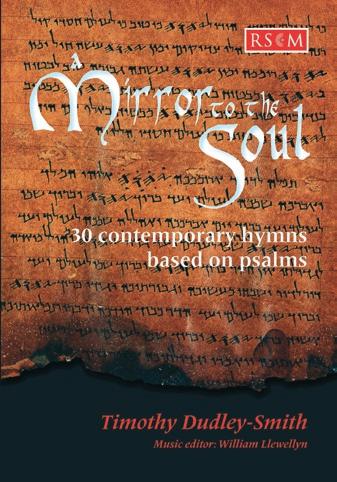
Bishop Timothy’s poetry is wonderful, imaginative and often visionary. His two most celebrated hymns, Tell out, my soul and Lord, for the years are masterpieces of poetic structure. Here, Bishop Timothy responds to the unique mood of each psalm not just through often challenging metrical structures but through changing linguistic tone, sometimes archaic, sometimes formal, and sometimes colloquial. Borne out of a lifetime’s experience of hymn-writing, inherently musical and -- the hallmark of great hymnody -- able to continue to yield new fruit with every repetition, these hymns succeed in marrying the distinctive, impulsive poetic world of the psalm tradition with the equally distinctive, often sturdy, manner of the Anglican hymn tradition.
Sensibly, a wide range of styles is catered for, though traditional is predominant. Over half the hymns are set to well-known melodies, including ‘Hyfrydol’, ‘Abbot’s Leigh’, ‘Ellacombe’, ‘Richmond’, ‘Wolvercote’ and many more besides. Several alternatives are given, both within the book and from other hymnbooks. The more successful of these unions of old and new is in Gibbons’ ‘Song 34’ (usually sung to ‘Forth in thy name, O Lord, we go’) set to Psalm 8. Here, the words mirror the simplicity and child-like wonder of the 1623 Hymns and Songs of the Church for which Gibbons originally wrote his great melodies -- ‘How great our God’s majestic name!’ proclaims Dudley-Smith’s opening line; another is Mendelssohn’s torturously sinuous harmonisation of ‘Breslau’ being set against Psalm 130 -- this really is a serendipitous marriage of words and music, with the introspection of the first half of each verse balanced by the expressive openness of the latter half. There are new tunes by John Barnard, Michael Baughen, John Carter, Paul Edwards, Howard Prior, John Scott, Richard Simpkin, Ronald Turner, Norman Warren and William Llewellyn (who has done a splendid job as music editor of the collection); but the one that stands out is ‘Toronto’, written especially for this collection by John Rutter to Dudley-Smith’s paraphrase of Psalm 103; every bar reveals mastery. Here is
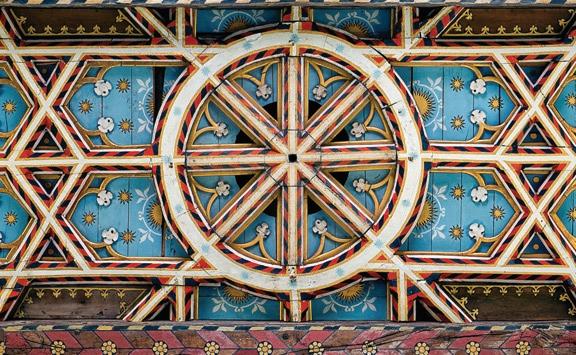
a complete union of musical and poetic sense: set in D flat major and inhabiting a similar musical language to Stanford’s When in our music God is glorified or Howells’ Holy Spirit, ever dwelling, impeccably subtle choral writing of the middle verse (every bit the match of What sweeter music) is framed by unison outer verses of great strength and power. Harmonically inventive, a wonderfully effortless modulation in the 3rd line from dominant to tonic to subdominant manages to reflect beautifully both the inwardness of the text in the first two verses and the sense of wonder in the last verse. This is hymn writing at its most potent, and I would not be surprised to see this quickly join the canon of great hymns.
The collection as a whole can be thoroughly recommended as a useful supplement to your hymnal of choice. It would suit any church seeking further opportunities for singing (rather than saying) the psalms during morning and evening services, as well as services of Holy Communion.
Simon Toyne Director of MusicTiffin School & All Saints Church, Kingston
Truro Cathedral Choir
Dir: Christopher Gray
Organ: Luke Bond
Pascoe Truro Evening Service (canticles); Missa Brevis; Drayton Ave maris stella; The World’s Desire; Fitkin The Christmas Truce; Lost; Pott Lament; Philips Church Music; I sing of a maiden; MacMillan Ave maris stella; GJackson Cantate Domino; McGlade In the bleak midwinter; Bednall Noe, noe.
REGENT REGCD422 TT 68:52
What an explosion of wonderful music-making is taking place in Truro! The artistic partnership of Christopher Gray, Luke Bond and the singers is one that should be a cause for unbridled rejoicing throughout cathedral and church music circles, and beyond. This disc celebrates the first 125 years of Truro Cathedral by showcasing music that is connected with its foundation, and shows just how vibrant the music is in Truro. None of the music is more than six years old. Some of the pieces were commissioned for the year-long anniversary celebration, others to enrich the Festival of Nine Lessons and Carols, which was created in Truro back in 1880 by the then bishop, Edward White Benson.

Some of this repertoire I have heard Truro broadcast over the last few years, but the bulk of the programme was unfamiliar to me, as were some of the composers, but I have to say that I was riveted by the music and the performances. The performers so obviously believe in the music they are bringing to life that they sweep the listener along with them. I’m not going to attempt a track-by-track analysis; it would be too long. My recommendation to buy this CD is whole-hearted -- put your trust in the Truro musicians and their composers; and also the superb recording by Gary Cole, which does them proud.
Roger Judd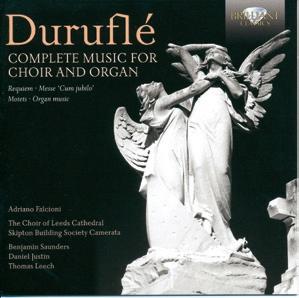
Leeds Cathedral Choir
Dir: Thomas Leech Organ: Benjamin Saunders, Daniel Justin, Adriano Falcioni
CD1: Requiem; 4 Motets sur des thèmes
Grégoriens; Notre Père; Messe ‘Cum jubilo’.
CD2: Prélude, Adagio et Choral varié sur le thème ‘Veni Creator’; Prélude sur l’Introït de l’Épiphanie; Fugue sur le thème du Carillon des Heures de la cathédrale de Soissons; Scherzo; Prélude et Fugue sur le nom d’Alain; Méditation; Hommage à Jean Gallon; Suite.
BRILLIANT 9264 TT 69:31 and 71:44
The twentieth-century French composer Maurice Duruflé allowed only a very small number of his compositions to
survive and be published, so this boxed set of two CDs really does contain the complete music for choir and organ. That Duruflé’s output was influenced by plainsong is evident in nearly all the works recorded here. The Requiem was dedicated to the memory of the composer’s father and is heard on this disc in the version for small orchestra and organ prepared by the composer around a decade after the original version (for full orchestra) was written. The balance between the choir and orchestra is mostly well managed and the performance catches the ‘atmosphere’ of the music rather well. I especially enjoyed hearing a complete rendition of the Cum Jubilo mass.
Turning to the organ music, Adriano Falcioni, who is Principal Organist of St Lawrence Cathedral in Perugia, gives a thrilling account of this most virtuosic music. He also succeeds in coaxing some convincingly French sounds out of the resolutely English organ in Leeds Cathedral. Readers who are not aware of how the name ‘Alain’ can be turned into notes, when the keyboard only reaches G, might find it useful to know that Duruflé used German notation (A to H) and then repeated those letters until he reached N. This makes the first five notes of the fugue subject ADAAF.
The possibility of having the whole of Duruflé’s choral and organ output in one boxed set makes this a compelling purchase.
Tim Rogerson
Choir of Merton College, Oxford
Dirs: Peter Phillips/Benjamin Nicholas
Organ: Anna Steppler
Ešenvalds Magnificat & Nunc Dimittis; Dunstaple Veni Sancte Spiritus/Veni Creator; Sheppard Libera nos, salva nos I; Pärt The Woman with the Alabaster Box; Parry There is an old belief; Byrd Praise our Lord, all ye gentiles; Gibbons This is the record of John; LBerkeley Veni sponsa Christi; Purcell Hear my prayer, O Lord; Remember not, Lord, our offences; Vaughan Williams Valiantfor-truth; Stanford Justorum animae; Beati quorum via; Mundy Magnificat & Nunc dimittis; Lavino Beati quorum via; Greene Lord, let me know mine end; Gjeilo Sacred Origins.
DELPHIAN DCD34134 TT 74:04
What a fine choir this is! Performances are full-blooded and expressive, and the sopranos (and contraltos) sound like young ladies, not strange disembodied sexless creatures. The programme succeeds in its stated aims of displaying ‘this accomplished ensemble’s versatility’ and giving a Cook’s Tour of the choral repertory. Some very familiar ground is explored (Parry’s There is an old belief seems to turn up in recorded anthologies rather frequently these days), but most welcome is the inclusion of such rarities as the works by Lennox Berkeley, John Dunstaple (c.1390-1453), William Mundy and Vaughan Williams. The college is fortunate in being able to claim the first two of these composers as its own, and even more special
to Merton are the works in this programme by Eriks Ešenvalds (Latvia), James Lavino (USA) and Ola Gjeilo (Norway) which were commissioned for The Merton Choirbook, compiled for the college’s 750th anniversary which falls this year. This is attractive new music of great interest and real quality, whose inclusion is one of the many virtues of this splendid CD, which I recommend with great enthusiasm.
Timothy StoreyLincoln Cathedral Choir
Dir: Aric Prentice Organ: Colin Walsh
Psalms 68-77
PRIORY PRCD 1100 TT 71:01
One of the fascinating aspects of the BBC’s long-running broadcasting of Choral Evensong is hearing, week-by-week, the singing of the psalms for the day, and hearing the different approaches that each director of music brings to the task. Indeed, one should add, almost equally fascinating is the skill of the organists in supporting the singers and colouring the texts with imaginative use of the resources of their instruments.
This can now be heard on a number of CDs devoted to the psalms, and the disc under consideration here is one made in Lincoln in 2013 by the boys and girls and twelve men of the cathedral choir directed by their director of music, Aric Prentice. The CD captures the psalms set for the thirteenth morning through to the fifteenth morning, and it just so happens that each is one of the longer ones, so there are only ten psalms on this CD. It also just so happens that the majority are of the breast-beating category. Lincoln clothes the psalms in a rich variety of chants and a pleasing mix of the familiar and the unfamiliar, and those special to Lincoln itself.
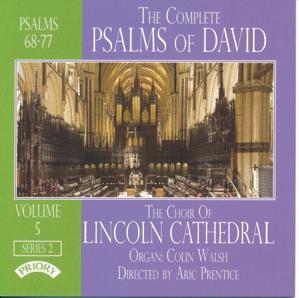
The singing is of a uniformly high standard; tuning, balance and ensemble are excellent. Underpinning all this is the splendid Colin Walsh, colouring the words with glorious freedom, on the Willis organ that he knows so well. The Priory recording has captured the sound of the choir and organ in that wonderful building with great faithfulness, so that one feels that one is in the choir-stalls with the musicians.
Roger JuddMusic for Remembrance
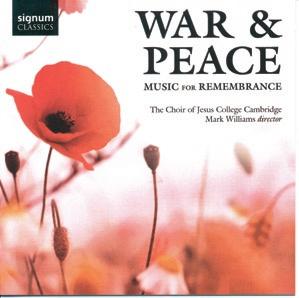
Choir of Jesus College, Cambridge
Dir: Mark Williams Organ: Benjamin Morris, Robert Dixon
Parry Crossing the bar; There is an old belief; Wood Nunc dimittis; Pärt The Beatitudes; MacMillan A Child’s Prayer; Ireland Greater love; Blatchly For the Fallen; Brahms Geistliches Lied; Thalben-Ball Elegy; Stetsenko Blahoslovy dushe moya hospoda; Martin Justorum animae; Lewis The souls of the righteous; Harris Faire is the heaven; Guest For the Fallen; Trad Kontakion; Vaughan Williams Lord, thou hast been our refuge.
SIGNUM SIGCD328 TT 74:48
It is good that Jesus College continues to maintain its chapel choir of boys and undergraduate countertenors, tenors and basses; the boys’ work is shared with and enhanced by soprano and contralto choral scholars. Both ‘top lines’ are heard on this CD, and both are very good (as are the men), though I cannot help wishing that the boys had been given more to do;
they sing Mark Blatchly’s For the Fallen on their own and are joined by the men in Ireland’s Greater Love, but otherwise they are only to be heard alongside the ladies, on four tracks where they add a distinct and attractive brightness to the sound. This ingeniously-compiled programme will surely tempt the discerning collector, if only for Charles Wood’s Latin Nunc Dimittis in B flat (not his only Latin setting, but one of the two he composed for Westminster Cathedral, if I may presume to correct the liner notes), for The souls of the righteous, Geraint Lewis’s tribute to the late William Mathias, and for Lord, thou hast been our refuge (Vaughan Williams) complete with a real trumpeter, who just happens to be an alumna of Jesus College. Some of the works included herein seem to stretch the definition of ‘Music for Remembrance’ overmuch; the notes admit that Greater Love has nothing to do with war, peace or remembrance, and I for one wish that it could be left in Passiontide, where it belongs. Arvo Pärt’s Beatitudes could well have been left somewhere else also! Matters of personal taste apart, this is an excellent anthology, well sung and played, which I recommend.
Timothy StoreyTenebrae
Dir: Nigel Short
Responsories for Maundy Thursday Nocturn II & III; Good Friday Nocturn II and II; Holy Saturday Nocturn II and III
SIGNUM SIGCD 344 TT 72:01
This disc presents the Responsories composed for the service of Tenebrae for Maundy Thursday, Good Friday and Holy Saturday. These form part of Victoria’s Officium Hebdomae Sanctae, which consists of 37 works intended to be sung between Palm Sunday and Holy Saturday. The choir Tenebrae, founded by Nigel Short in 2001, numbered four sopranos and three each of altos (male), tenors and basses for this recording, with two sopranos and one each of the other parts for the semi-chorus parts. The choir’s sound is well balanced with a wide dynamic range, and serves the austere nature of the music well.
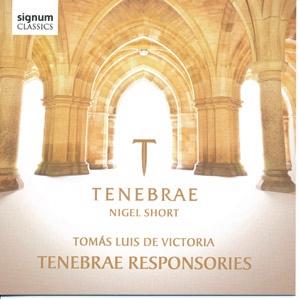 Tim Rogerson
Tim Rogerson
The Sixteen dir Eamonn Dougan Ave Maria; Missa Concertata
‘La Lombardesca’; Audite mortales. CORO COR 16110 TT 65:59
This CD was a delightful discovery, and I hope very much that readers will be tempted down this by-way, for they will be richly rewarded. If The Sixteen are sufficiently committed to record a disc of the music of Bartłomiej Pękiel (fl. 1633-70), then we can be sure of the quality of the product. The Sixteen, directed by their Associate Conductor, Eamonn Duggan, are on top form here in music that gives more than a passing nod to the Italian school of Cavalli, Monteverdi and Carissimi. Pękiel had professional links with both Warsaw and Kraków, directing the music in the royal chapel in the former and the cathedral in the latter. On this disc, the singers are supported by an instrumental group comprising strings, harp, theorbo, sackbuts and organ, and this allows for much variety in the sound-scape. The singing
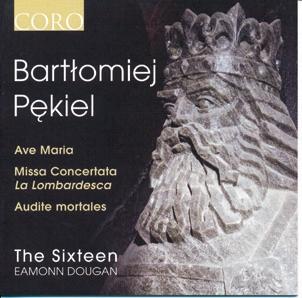
is rich and sonorous, the ensemble and balance exemplary, and the recording has a realistic bloom to it. Do explore the work of this little known Polish composer; I don’t think you will regret veering off into unknown territory. Warmly recommended.
Roger JuddSacred Choral Music
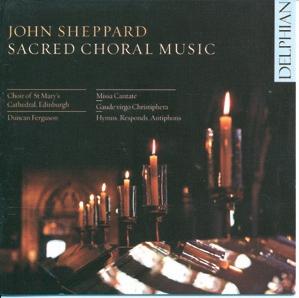
Choir of St Mary’s, Edinburgh
Dir: Duncan Ferguson
Libera nos, salva nos 1; Reges Tharsis et insulae; Gaude virgo Christiphera; Sacris solemniis; Kyrie Lux et origo; Missa Cantate; Adesto sancta Trinitas II; Hodie nobis caelorum rex; Verbum caro.
DELPHIAN DCD 34123 TT 68:59
In the excellent programme notes which accompany this disc, Duncan Ferguson observes that ‘a significant portion of the surviving music of John Sheppard remains underperformed and in some cases entirely neglected’. He goes on to explain that this is almost certainly because of the slow appearance of modern editions of Sheppard’s music, as a result of the poor preservation of his works, with sometimes just one incomplete score remaining for some works. St Mary’s Choir serves the music extremely well. The balance between the parts of the choir is excellent and the phrases in the music are shaped beautifully. The recording manages to capture the atmosphere of the cathedral splendidly. Highly recommended.
Tim Rogerson
National Youth Choirs of Great Britain
Dir: Ben Parry Organ: James Sherlock
CD1: Fancie; Festival Te Deum; A Hymn of St Columba; Hymn to St Peter; Three 2-part songs; A Hymn to the Virgin; Jubilate Deo in C; Hymn to St Cecilia; Te Deum in C; The Ballad of Little Musgrave and Lady Barnard; Deus in adjutorium meum; Antiphon; Jubilate Deo in E flat.
CD2: A Ceremony of Carols; Rejoice in the Lamb.
DELPHIAN CDC 34133 TT 1:52:25
Devotees of Britten’s choral music whether well-known or less familiar will surely find much to interest them here, as will enthusiasts for the work of the National Youth Choirs; note the plural, as no fewer than six choirs are featured: boys (who sing very well but sadly were given hardly anything to do), girls, training choirs both north and south, Cambiata Voices (young tenors and basses), the Chamber Choir and eventually The National Youth Choir itself. This is indeed an impressive organisation, in which all concerned may take great and wellearned pride. Sadly I have some reservations about the musical quality of the performances, which were brisk and well-drilled almost to a fault and thus somehow failed to communicate with your reviewer. These young singers produced a gratifyingly mature and well-blended sound, and met the music’s considerable technical demands with great assurance; but perhaps they needed urging to pay more attention to the meaning of the words they were singing; cheerful works such as the Te Deum and Jubilate settings fared well enough, but Hymn of St Columba should surely have conveyed more gloom
and terror, and there is a grimness about parts of Hymn to St Cecilia, and even A Ceremony of Carols, that was lacking here. The wonderful craziness of Christopher Smart’s verse in Rejoice in the Lamb was ill-served by the breakneck speed at which much of it was delivered; just because you can sing so fast, you do not have to. So, these CDs offer capable performances of some lesser-known Britten alongside more familiar masterpieces already available in other, probably better interpretations. This is not to belittle the Youth Choirs’ efforts, and there is much to enjoy in their singing, but it’s a tough world!
Timothy StoreyThe Sixteen
Dir: Harry Christophers
Missa O magnum mysterium; A solis ortu cardine; Iubilate Deo; Ad te levavi; Ave Regina caelorum; Song of Songs Nos 7, 8 & 12; Magnificat quinti toni; Deus enim firmavit; Surge, illuminare.
CORO COR 16114 TT 71:53
Harry Christophers and The Sixteen continue their journey through the music of Palestrina on their own Coro label. As Christophers writes in the booklet, this is not going to be a complete survey, nor could it be; after all, Palestrina wrote 104 masses, more than a lifetime’s work indeed. The Missa O magnum mysterium for five voices forms a significant part of this recording, along with motets for Christmastide, and three of the Song of Songs motets. The repertoire is varied, both in mood and in texture, tempi and dynamic, so listening through from beginning to end is a most satisfying experience. One tiny regret is that the splendid motet Surge, illuminare is shorn of its second section, which seems strange.

Those familiar with the work and sound of The Sixteen will know what to expect from this CD. For those for whom this is a first time, you will experience the music presented devoid of gimmicks or tricks. The singing is beautifully blended and controlled; Christophers seems to judge the ‘right’ tempi unerringly, and one can allow oneself to be engulfed by this miraculous music. The recording was made in the generous acoustic space of St Alban, Holborn in the City of London. Warmly recommended.
Roger Judd
Peterborough Cathedral Choir
Dir: Stanley Vann Organ: Richard Latham Batten O sing joyfully; Evening Service No. 4; O Lord, thou has searched me out; Hear my prayer; Out of the deep; O clap your hands; Dering Gaudent in coelis; Contristatus est rex David; O bone Jesu; Ave verum corpus; Duo seraphin; Factum est silentium.
PRIORY PRCD 938 (no TT)
This is a most welcome re-issue of a truly classic LP recording, which first appeared in 1962 as Argo ZRG 5318 and helped to establish the reputation of Peterborough’s choir and its director. It had become apparent that Stanley Vann (19102010) had by careful training brought an ordinary provincial cathedral choir to a standard which could bear comparison with David Willcocks’s renowned choir at King’s College Cambridge. Argo, a company which became part of the
Decca group and was then closely associated with King’s, was issuing a series of recordings of Tudor Church Music, and to this series Peterborough contributed the disc under review, which can be credited with helping to bring Adrian Batten (c. 1590-1637) and Richard Dering (c. 1580-1630) to wider notice. I suspect that Batten’s fourth Evening Service owes its place in today’s cathedral repertoire as much to this recording as to its publication by OUP in Maurice Bevan’s edition. Batten and Dering make an interestingly contrasted pair of contemporaries, the former the Organist of St Paul’s Cathedral, and the latter a Catholic who studied in Italy and worked in Brussels; it was an act of inspiration to put them on the same LP. What are we to make of these performances some fifty-plus years down the line? The singing is generally restrained, though considerable energy is applied where appropriate. The boys’ tone is delicate, almost transparent, and beautifully clear; there are several good soloists. There are also some good soloists among the men but, as I was told by a friend who knew the choir well, ‘Stanley got the men to blend’ which was not the least part of his success. If you have the old LP and it needs replacing, you will surely be glad of this re-issue; otherwise, be sure to buy a copy, to encounter some delightful music beautifully sung.
Timothy Storey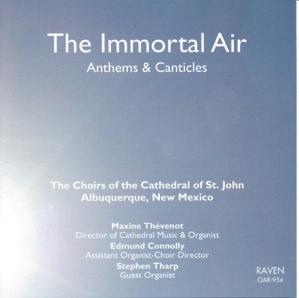
Dir: Maxine Thévenot
Organists: Edmund Connolly & Stephen Tharp
Finzi God is gone up; MacMillan A New Song; Moore Bread of the world, Listen to the song of the children; Thévenot Introit; Near Holy is the true light; Ireland Greater love; Gardiner Evening Hymn; Howells
A Hymn for St Cecilia; Stanford Magnificat & Nunc dimittis in G; Pachelbel What God ordains; Ager Te Deum; Ledger Jubilate; Harris Holy is the true light; arr Lenel All praise to God; Neswick I will set his dominion
RAVEN OAR-954 www.RavenCd.com TT 67:02
It is always interesting to hear the work of choirs from other countries. It is also reassuring that choral singing is alive and well beyond these shores, and fascinating to experience examples of the music being written, in this example, for the American Episcopal Church. The Cathedral of St John’s, Albuquerque, in New Mexico has an extensive music programme, and on this CD the cathedral choir, chamber choir and choristers are heard together and separately in a repertoire that mixes well-known fare with, perhaps, less wellknown. Director Maxine Thévenot shows that she has a good ear for blend and balance, and speeds are nicely judged.
Going down the more unfamiliar path are two pieces by Philip Moore written specially for the choir, and both are beautifully crafted miniatures. A setting of Holy is the true light by Gerald Near contrasts with William Harris’s setting of the same text. A Te Deum by Canadian composer Andrew Ager, also written for this choir, is a most engaging take on this text, and deserves to be widely performed. A splendidly lively setting of the Jubilate by Philip Ledger is a welcome sequel to the Te Deum. The recital ends with an anthem by Bruce Neswick written for the dedication of a new organ in New York. As you’d expect, the organ part is suitably festive -- the piece might be described as being for organ with pursuing choir…! Just to reassure you, there are moments of repose.
The musicians are well served by the recording, and the recording is greatly enhanced by the presence of the distinguished concert organist Stephen Tharp at the keys for much of the disc. Warmest congratulations all round on a most pleasant and interesting listening experience.
 Roger Judd
Roger Judd
John Sheppard
Choir of St John’s College, Cambridge
Gaude, gaude, gaude Maria virgo; In pace, in idipsum dormam; The Lord’s Prayer; in manus tuas, Domine; ‘Western Wynde’ Mass; Haec dies; Christ rising again; Spiritus sanctus procedens; Aeterne rex altissime; Libera nos, salva nos.
CHSA 0401 TT 70:07
It is most welcome to have this glorious music sung, and sung so well, by a first-rate choir of men and boys rather than a small mixed-voice ensemble. Sheppard’s vocal scoring creates a satisfyingly robust and sonorous effect, which it is good to hear the St John’s trebles realising with such gusto. Like his near contemporaries Tallis and Tye, John Sheppard (c. 1515-58) had to cope with the switch from the Latin to the vernacular liturgy and back again under successive Tudor monarchs; this CD offers examples of his setting of both Latin and English texts, a supreme example of his genius being the lengthy six-part motet after which this CD is named, which surely dates from the restoration of the Latin rite under Queen Mary. The most extensive work in this programme is the mass based on Western Wynde, that most beautiful secular melody similarly employed by Taverner and Tye. We are here offered a performance of great imagination and resource, with variety of pace and dynamics applied to good effect. I have great pleasure in recommending both the music and the performances on this disc.
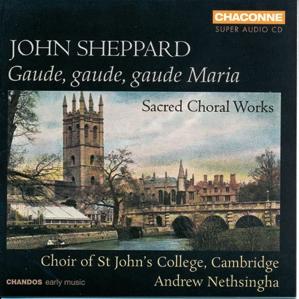 Timothy Storey
Timothy Storey
Richard Walker
Stainer March in D; White Song; Karg-Elert
The Mirrored Moon; Ein feste Burg; Brahms arr Lemare Academic Festival Overture; Joplin arr Biggs The Cascades; Fraser Zoë; Prokofiev arr Grimm Peter and the Wolf. CD (£10) available from info@stchadschurchshrewsbury.com
TT 65:42
To quote Wikipedia, ‘St Chad’s Church, Shrewsbury occupies a prominent position in the county town of Shropshire. The current church building was built in 1792, and with its distinctive round shape and high tower it is a well-known landmark in the town.’ This varied and enterprising CD, which might appeal to the serious collector if only for the works by Karg-Elert and Stainer, has been issued to celebrate the recent (2011) restoration and rebuild of the 1904 Norman & Beard organ; the work was carried out by Harrison & Harrison of Durham, who moved or replaced some of the quieter registers and added a Tuba to
the Choir manual. There is good tonal variety in the quieter registers, but the main choruses are disappointingly stodgy and dull, doubtless a legacy of the 1904 tonal scheme. Richard Walker, the Assistant Organist at St Chad’s, demonstrates the instrument’s resources most capably, Peter and the Wolf especially providing him with every conceivable opportunity so to do. He is a most talented player, but he exhibits some waywardness of rhythm; I should not like to have to keep in step with Stainer’s March as presented here! Is ‘Baroque articulation’ to blame for this rather stuttering manner of playing? By the way, there is a piece of nonsense in the liner notes, which would have us believe that Stainer became organist of St Michael’s College, Tenbury in 1850 when only ten years of age. He was then still a chorister at St Paul’s, and St Michael’s was not founded until 1855. That said, I hope this disc will be widely enjoyed, and not least by those who value the musical tradition of this fine church. Long may it flourish!
Timothy StoreyThe Organ Symphonies Vol 2
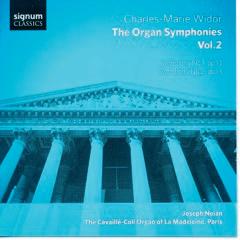
Joseph Nolan/La Madeleine, Paris Organ Symphony No. 1 in C minor, No. 2 in D major
SIGNUM SIGCD 319 TT 78:09
Joseph Nolan is clearly a committed and persuasive champion of the music of Widor, and in partnership with the 1846 Cavaillé-Coll organ in the church of La Madeleine in Paris, this should be a CD of unalloyed joy. What does give me great joy is the sound of the organ when it is within the dynamic range of piano to mezzo-forte. There are some really fine sounds, as in the Prélude, Adagio, and Méditation (Symphony I), and Praeludium Circulare, Pastorale, Salve Regina, and Adagio (Symphony II). Unfortunately, when the dynamic rises above mezzo-forte something goes badly wrong with the balance of sound, and I don’t know whether this is a fault of microphone placement, the organ, or the acoustic, or a mix of all three. Whatever it is, the resultant sound is often quite oppressive, and largely dominated by the huge pedal Bombardes, leading to a marked loss of clarity in the texture above.
Roger Judd
& 2
David Briggs/Worcester Cathedral
ACCLAIM PRODUCTIONS APCD 4016
2 CDs TT 57:02 & 63:02
Transcriptions for organ of orchestral works are now fashionable and respectable, and one can only marvel at David Briggs’s skill as arranger and executant. Organophiles will surely welcome this demonstration of Worcester’s beautiful new organ, and some may even prefer the Great Local Composer’s masterpieces served up in this format. Sadly I was not impressed. The unfortunate result seemed to be to reduce Elgar’s great symphonic structures to the level of a worthy but dull sonata for organ by some minor and justly neglected Edwardian academic. Whatever the Worcester instrument’s merits, its bright classical choruses seemed singularly unsuited to the music; the tutti was curiously constricted and muddled, and also one longed for a greater variety in the quieter registers. It would have been an interesting and more valid exercise for these recordings to have been made on one of our great
romantic town hall or cathedral instruments, whose designers had this sort of repertoire in mind, but even so we would have been denied too much of the music’s life and energy. Sir Walter Parratt dismissed the great W T Best’s transcriptions of the orchestral classics as ‘examples of misapplied skill’ and it is all too tempting also to transfer to the subject under discussion one of Dr Johnson’s most notorious assertions: ‘Sir, [it] is like a dog’s walking on his hind legs. It is not done well; but you are surprised to find it done at all.’ Sorry!
Timothy Storey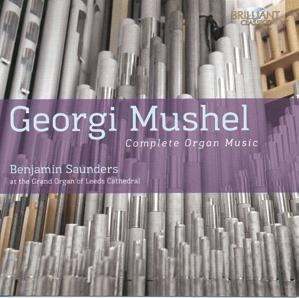
Benjamin Saunders/Leeds Cathedral
Samarkand Suite; Elegy; Six Pieces; Uzbekistan Suite
BRILLIANT 9279 TT 76:02
Rather like Armas Järnefelt (of Praeludium fame), Georgi Alexandrovich Mushel is only really known (even among organists) for his Toccata. He did, however, compose a number of other works for orchestra, keyboard, choirs and the organ. After studying at the Moscow Conservatoire, Mushel spent his working life at the Tashkent Conservatoire where he was appointed Professor of Composition in 1976. Ben Saunders presents the organ works on the newly restored (2010) organ of Leeds Cathedral, where he has been Director of Music since 2002. The music itself is rooted in the style of the first half of the twentieth century, rather like the early organ music of Herbert Howells, but with a distinctly different flavour. The organ in Leeds Cathedral dates from 1904 and is also typical of its period, being egregiously smooth and somewhat weighty in tone. The rebuild by Klais did not seek to change this, but (in addition to making the organ work) provided some carefully chosen new ranks to enable the organ to function as an instrument both for the chancel and the nave. The music and the organ are well suited, and Ben Saunders makes the most of the wide tonal spread of the instrument in his carefully prepared performance. The recording itself is impressive, capturing plenty of the warmth of the building without sacrificing any clarity.
Tim RogersonPhilip Scriven/Lichfield Cathedral Bernstein Candide Overture; Rehberg Go Do Mo; Michel Lobe den Herren; Siemoneit Die ganze Welt; Takle BluesToccata; Martinson Aria on a Chaconne; Berveiller Mouvement; Bovet Sarasota; Planyavsky Toccata alla Rumba; Gárdonyi Mozart Changes; Be thou my vision; Farrington Fiesta! REGENT REGCD 304 TT 64:07
Well, here’s the organ of Lichfield Cathedral as you’ve never heard it before, and in partnership with Lichfield’s onetime organist, Philip Scriven, (if he’ll forgive me) letting his hair down! This disc is huge fun, and opens in spectacular style with Philip’s own arrangement of Bernstein’s Candide Overture, and doesn’t look back from that moment. As the title of the CD suggests, the repertoire is jazz and blues-inspired, and is delivered with a splendid degree of abandon, panache and, above all, bravura. J M Michel’s take on Lobe den Herren would do more than stir the faithful after a service -- in fact the three bluesy chorale preludes make a most attractive
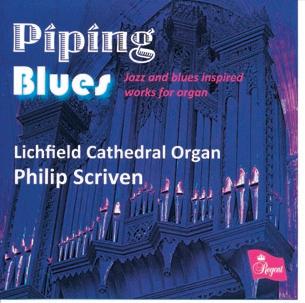
group. Iain Farrington’s Fiesta! is a remarkable composition, comprising seven, mostly short, movements of great originality. Interestingly, in this company, Guy Bovet’s Sarasota has the least to say, and rather outstays its welcome. Joel Martinson’s Air on a Chaconne lowers the temperature a little with its longdrawn melodic lines.
Philip’s playing communicates a great sense of joy -rhythms are crisp and secure, as they must be if this repertoire is to work. Added to this is his unerring ear for colour and knowledge of the Lichfield instrument (the CD was recorded in 2008, before he left the cathedral) which results in a winning programme, and it’s brilliantly recorded. What are you waiting for? Go and buy it now!
Roger JuddPaul Hale plays the organ of Southwell Minster
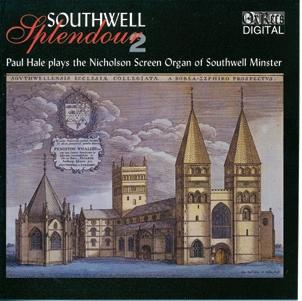
Archer A Festival Toccata; Buxtehude
Chorale variations on ‘Wie schön leuchtet’; Dandrieu Variations on ‘O Filii et Filiae’; Andriessen Choral IV; Karg-Elert Harmonies du Soir; Dubois 12 Pièces Nouvelles; Rathbone A Southwell Suite
OXRECS OXCD120 TT 66:58
The Nicholson organ at Southwell was installed on the screen in 1996 and contains a significant amount of pipework from a Victorian instrument originally installed elsewhere. It is therefore suitable for playing a wide range of pieces, as demonstrated most ably by Paul Hale on this disc. Six of the fifteen tracks have been previously issued, leaving Malcolm Archer’s Festival Toccata, Andriessen’s Chorale IV, Harmonies du Soir by Karg-Elert, and A Southwell Suite by Christopher Rathbone as the newly recorded pieces. The Festival Toccata was written for the opening recital of the organ at St John the Evangelist, Boxmoor, Hemel Hempstead and is clearly influenced by the great French toccatas. Readers who are organists themselves might be interested to obtain a copy of the score. The other work of particular note, the Southwell Suite, is based on the two hymn tunes which are called ‘Southwell’. The best known is usually sung to the words ‘Lord Jesus, think on me’, whilst the other (composed by a former Rector Chori of the Minster) is usually paired with ‘Jerusalem, my happy home’. The suite focuses mainly on the second tune and comprises five movements, the last of which is an exciting Toccata. Paul Hale gives a committed performance of the programme and the recording quality is good, which makes for an interesting disc.
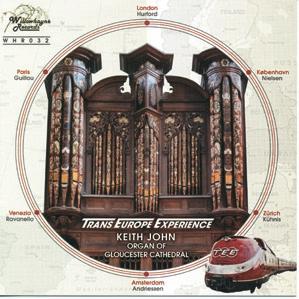 Tim Rogerson
Tim Rogerson
The Marian Consort
Dir: Rory McCleery
Laudate Dominum; Missa Je suis déshéritée; Omnes gentes attendite; Victimae paschali laudes; Ascendo ad patrem meum; Fratres mei elongaverunt; Hodie Maria virgo; In pace; Assumpta est Maria; Gaudent in caelis; In me transierunt.
DELPHIAN DCD 34130 TT 70:19
Grove’s Dictionary describes Jean Maillard (fl 1538-70) thus: ‘French composer. Since most of his works were published by royal printers he probably worked in Paris. … He may have been
associated in some way with the French court.’ The extensive and scholarly liner notes will tell you more, but it is safe to admit that Maillard is hardly a household name, even though in his day his works were known throughout Europe and even as far afield as the UK. This is the first recording of his music. The programme’s centrepiece is the mass based on a secular chanson Je suis déshéritée (which is sung first for our edification) and we are also offered a varied selection of the motets for which Maillard was celebrated by his contemporaries. The mass is a concise, attractive work, with a notably beautiful Agnus Dei; the motets are ‘framed to the life of the words’ and feature some effective if rather predictable word-painting. The Marian Consort follows the prevailing fashion for singing this sort of music with one singer per voice-part (an economical way of bringing about performances of unfamiliar works); it cannot be good that the director is himself singing a part, and perhaps as a result the full seventy minutes’ listening sadly left an impression of an overall sameness -- same contrapuntal devices (the composer’s fault!), the same speeds, same volume and same rather scratchy soprano tone. One is duly grateful to the young musicians whose work we can enjoy on this CD, but it does not offer a completely satisfying account of music which was surely intended for somewhat larger forces. With this reservation, I recommend this most interesting CD.
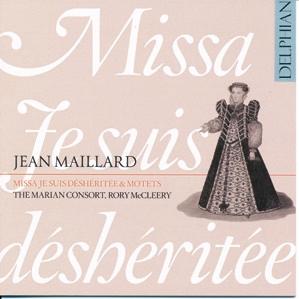 Timothy Storey
Timothy Storey
Keith John/Gloucester Cathedral
Andriessen Thema met Variaties; Ravanello Adorazione; Guillou Toccata, op 9; Hurford Suite ‘Laudate Dominum’; Nielsen Commotio; Kühnis Variations on ‘Stets i Truure mues i läbe’.
WILLOWHAYNE RECORDS WHR032
TT 70:47
To those of us who were not around at the time, the controversies surrounding the 1971 rebuild of the organ at Gloucester Cathedral seem rather curious given the success of the current instrument, both in accompanying the choir and in playing the repertoire of the organ. Keith John, who was a chorister at Gloucester under Herbert Sumsion (and so knew the organ as it was), puts the instrument through its paces with a programme of works composed in the twentieth century, starting with Andriessen’s Theme and Variations, which is well known. I particularly enjoyed Adorazione, by Ravanello, an Italian composer whose work I had not heard before and who was Master of Chapel at St Anthony’s Padua as well as Professor of Organ at the Venice Conservatory. Jean Guillou has been organiste titulaire of the Parisian Church of St Eustache since 1963; his Toccata is improvisatory in nature. It is easy to forget that, before launching a second career as a concert organist and recording artist, Peter Hurford was for twenty years Master of the Music at St Albans Cathedral, during which time he composed a number of works for choir and organ of which Laudate Dominum is one. It consists of six movements based on verses from the psalms and paints them effectively. Nielsen’s Commotio was written in the last year of his life and is a significant work in the same way as the Reubke Sonata on the 94th Psalm. The highlight of the disc for this reviewer, however, was the exciting set of seven Variations on a Swiss Song by Markus Kühnis, which explored the wide tonal spread of the Gloucester organ and provided a satisfying conclusion to the disc.
Tim RogersonLuke Bond/Truro Cathedral

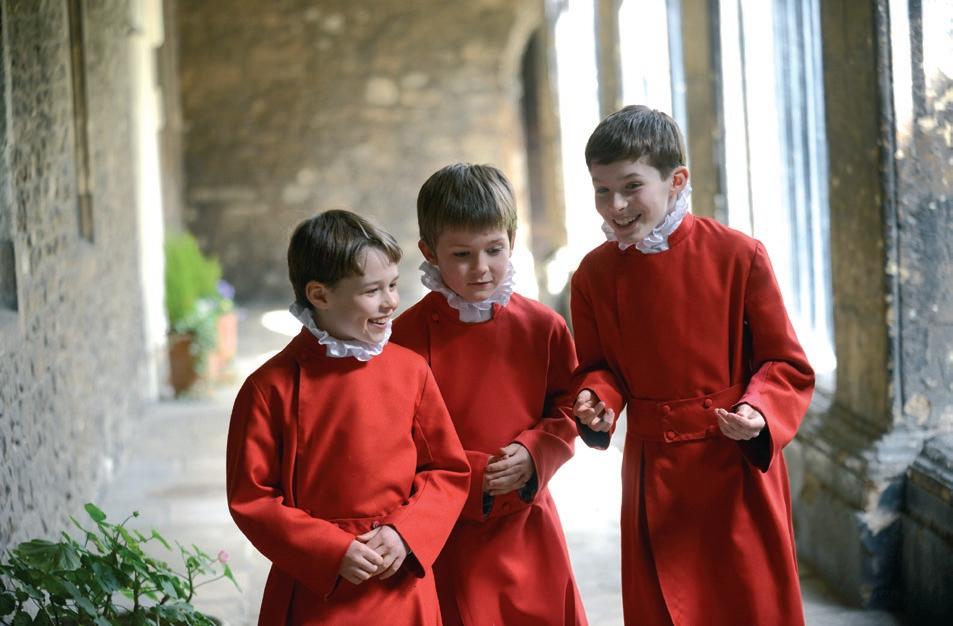
Widor Symphonie no. 6, 1st mvt; Mendelssohn P&F in C min; Walton Touch her soft lips and part; P&F ‘Spitfire’; Whitlock Scherzetto; Bednall Magna voce cane; Grainger Handel in the Strand; MacMillan White Note Paraphrase; Guilmant Sonate No. 1 in D minor.
REGENT REGCD 386 TT 63:58

The organ at Truro Cathedral has long been regarded as something special; unlike other so-called genuine examples of Father Willis’s work it has escaped rebuilding and ‘tonal improvement’ at the hands of other builders or later members of the Willis dynasty (even worse), and on this admirable CD Truro’s very capable Assistant Organist displays the qualities for which this instrument is so justly celebrated, the grandeur and clarity of the main flue and reed ensembles, plus the charm and brightness of the quieter registers; the recording is of the high standard we have come to expect of Regent Records. This anthology is no mere ‘demonstration disc’ but a well-balanced and admirably played recital programme which contains works of substance and interest (it was especially good to hear the Guilmant Sonate and the Mendelssohn Prelude and Fugue leavened by a good sprinkling of ‘lollipops’). I recommend this with great enthusiasm.
 Timothy Storey
Timothy Storey







‘...the most superb recordings of choral and organ music from some of the world’s finest musical institutions ’ Sydney Organ Journal
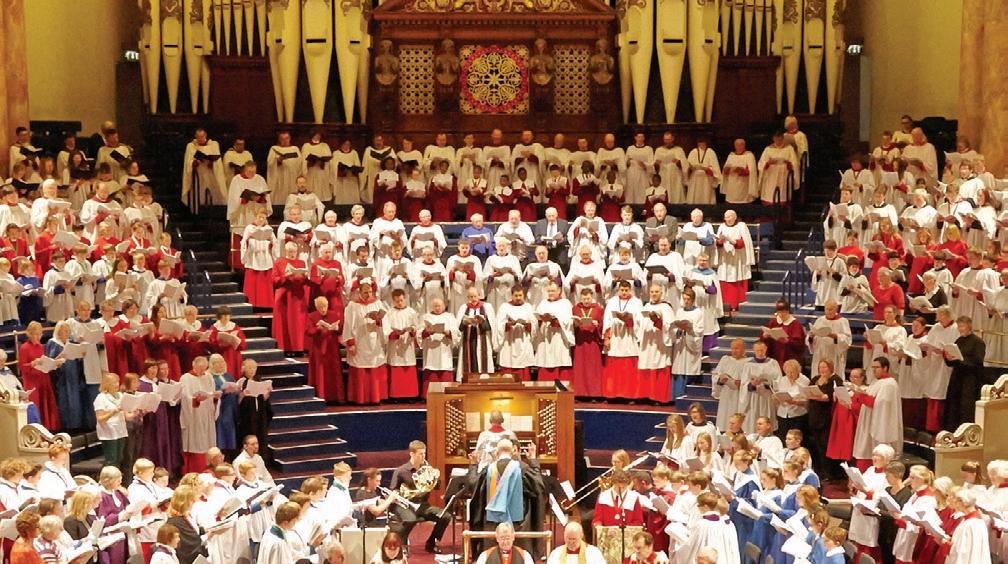
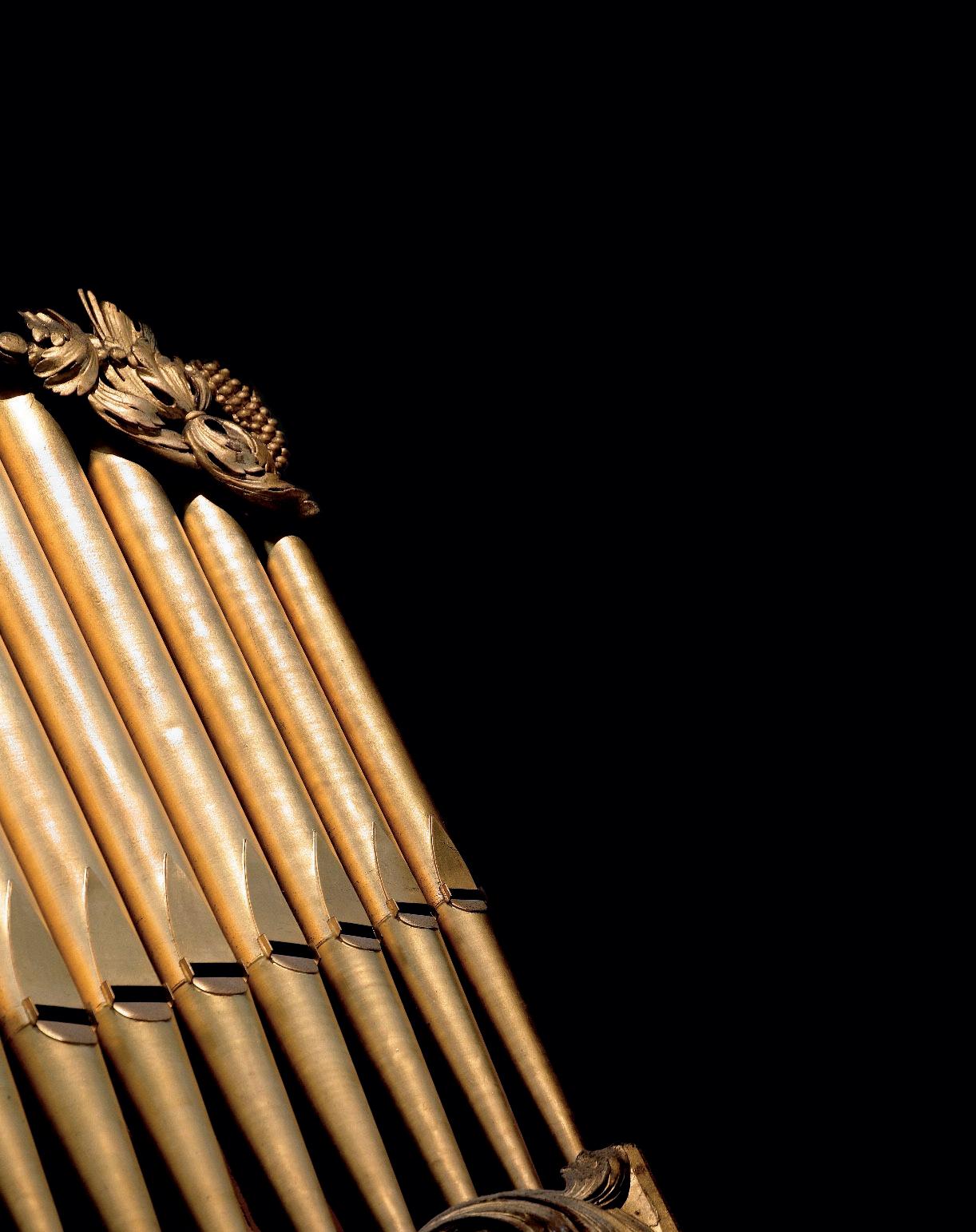

Recorded in Sées Cathedral, France
The Choir of Southwell Minster, Simon Hogan, Hilar y Punnett (organ), directed by Paul Hale REGCD425

A unique recording project for which the men and boys choir of Southwell Minster travelled to Sées in Normandy to record the monumental double organ Masses of Vierne and Langlais using the two original, and recently restored, Cavaillé-Coll organs of the cathedral The disc also includes two major 20th-century French solo organ works : Prélude, Adagio et Choral varié sur le thème du ‘Veni creator ’ , Op 4 by Duruflé, and Te Deum, Op 11 by Demessieux
Worcester Cathedral Chamber Choir, Christopher Allsop (organ), directed by Stephen Shellard
Paul Paviour is one of Australia s best-known composers His output is both substantial and varied This collection presents a broad overview of his work for smaller choral forces It is the first disc entirely devoted to his compositions, and most of the works are receiving their first recording
Choral music by E. W. Naylor


The Chapel Choir of Emmanuel College, Cambridge, directed by Richard Latham, George Lacey and Adam Mathias (organ)
y (1867–1934) was Organist of Emmanuel College, Cambridge, ntil his death Apart from his well-known anthem Vox dicentis: Clama and a ettings, very little of Naylor’s work is in the repertoire of choirs today This sents a wide range of his little-known choral works, sung by the present-day manuel College, Cambridge, in their first recording on the Regent label

HILLIP COOKE: Choral Works

Chapel Choir of Selwyn College, Cambridge x Brass, Timothy Parsons (organ), directed by Sarah MacDonald
REGCD411


he first devoted entirely to the new and distinctive voice of British composer It features a selection of recent sacred and secular choral works suitable for ir The changeable colours and moods of his native Lake District have uenced Cooke’s compositional style; this is approachable, but original music, British, but with hints of dark, stormy undertones
VENI CREATOR SPIRITUS: Works for organ by John Lambert and his students

Timothy Bond plays the Jehmlich Organ, Schneeberg, Germany
Janice Watson (soprano), Catherine Wyn Rogers (mezzo-soprano)
REGCD252
t (1926-1995), was a highly influential composer and teacher, whose uded such diverse figures as Oliver Knussen, Mark-Anthony Turnage, Simon ulian Anderson, David Fanshawe and Barrington Pheloung This disc ost all of his solo organ music, as well as his powerful setting of Veni creator oprano, mezzo-soprano and organ, alongside works by five of his students

